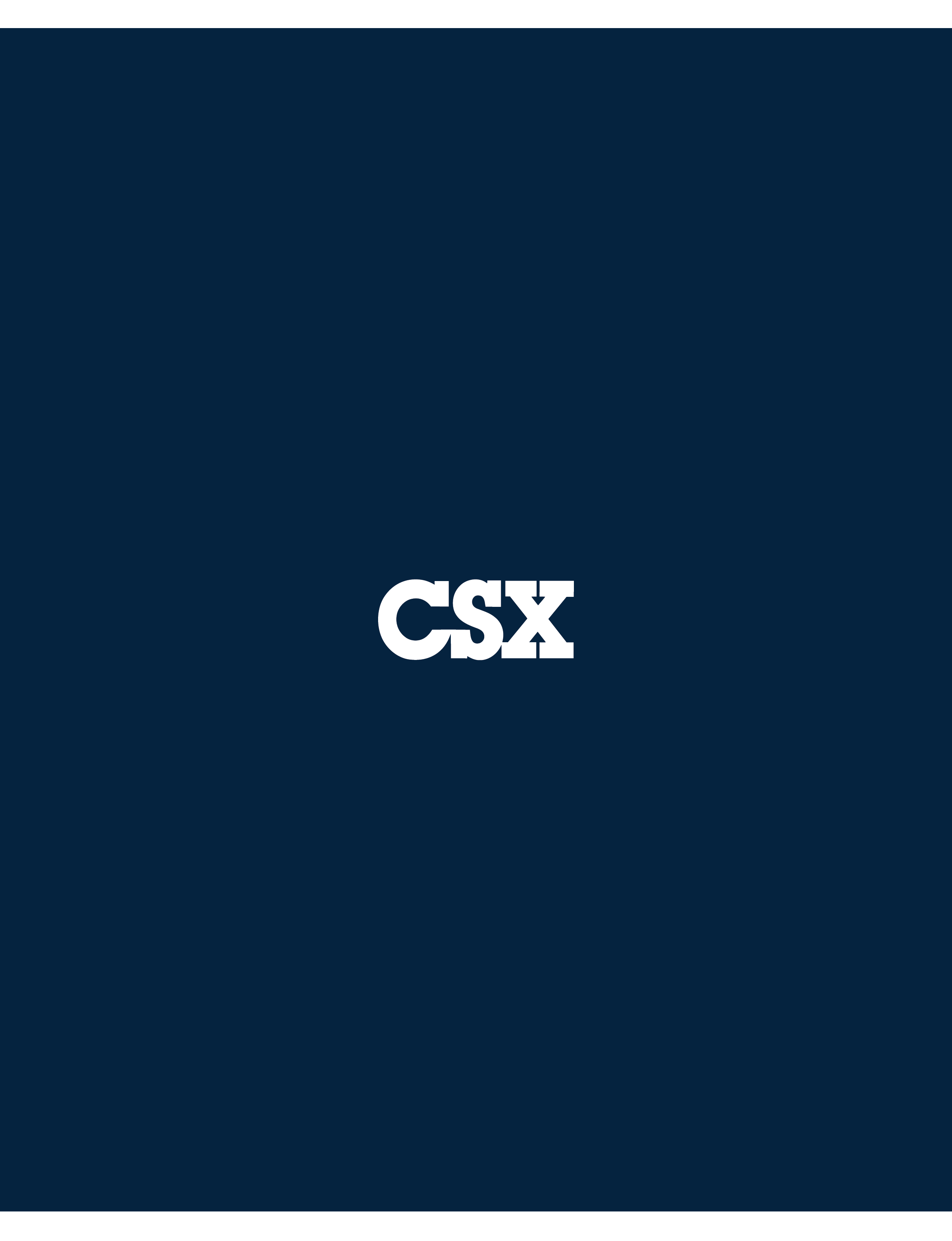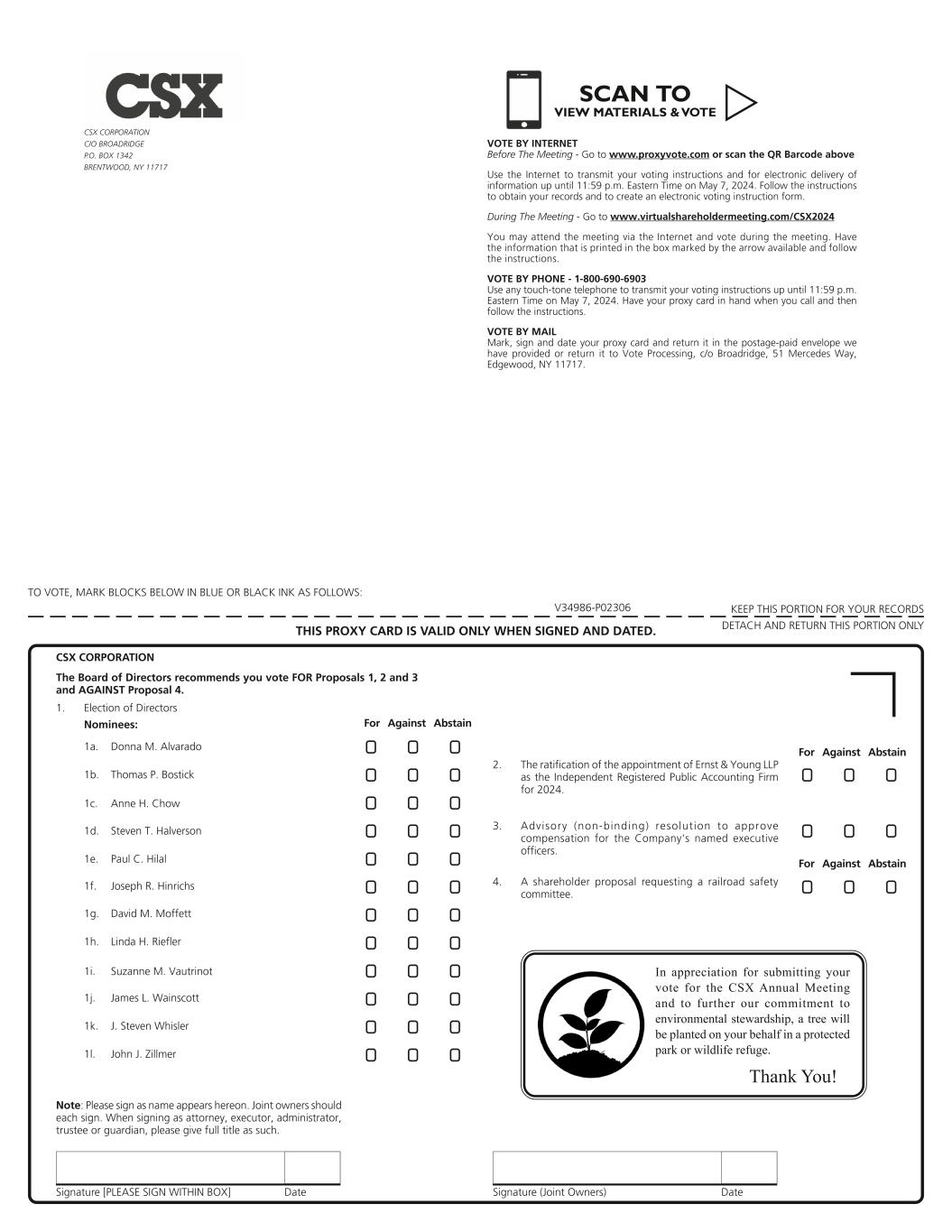| ☑ |  | Filed by the Registrant | ☐ | Filed by a Party other than the Registrant | |||||||||||
SECURITIES AND EXCHANGE COMMISSION
Washington, DCD.C. 20549
| ☑ |  | Filed by the Registrant | ☐ | Filed by a Party other than the Registrant | |||||||||||
| CHECK THE APPROPRIATE BOX: | |||||
 | Preliminary Proxy Statement | ||||
 | Confidential, for Use of the Commission Only (as permitted by Rule 14a-6(e)(2)) | ||||
 | Definitive Proxy Statement | ||||
 | Definitive Additional Materials | ||||
 | Soliciting Material under §240.14a-12 | ||||


CORPORATION
(Name of Person(s) Filing Proxy Statement, if Other Thanother than the Registrant)
| PAYMENT OF FILING FEE (CHECK ALL BOXES THAT APPLY): | |||||
 | No fee | ||||
 | Fee paid previously with preliminary materials | ||||
| ☐ | Fee computed on table | ||||
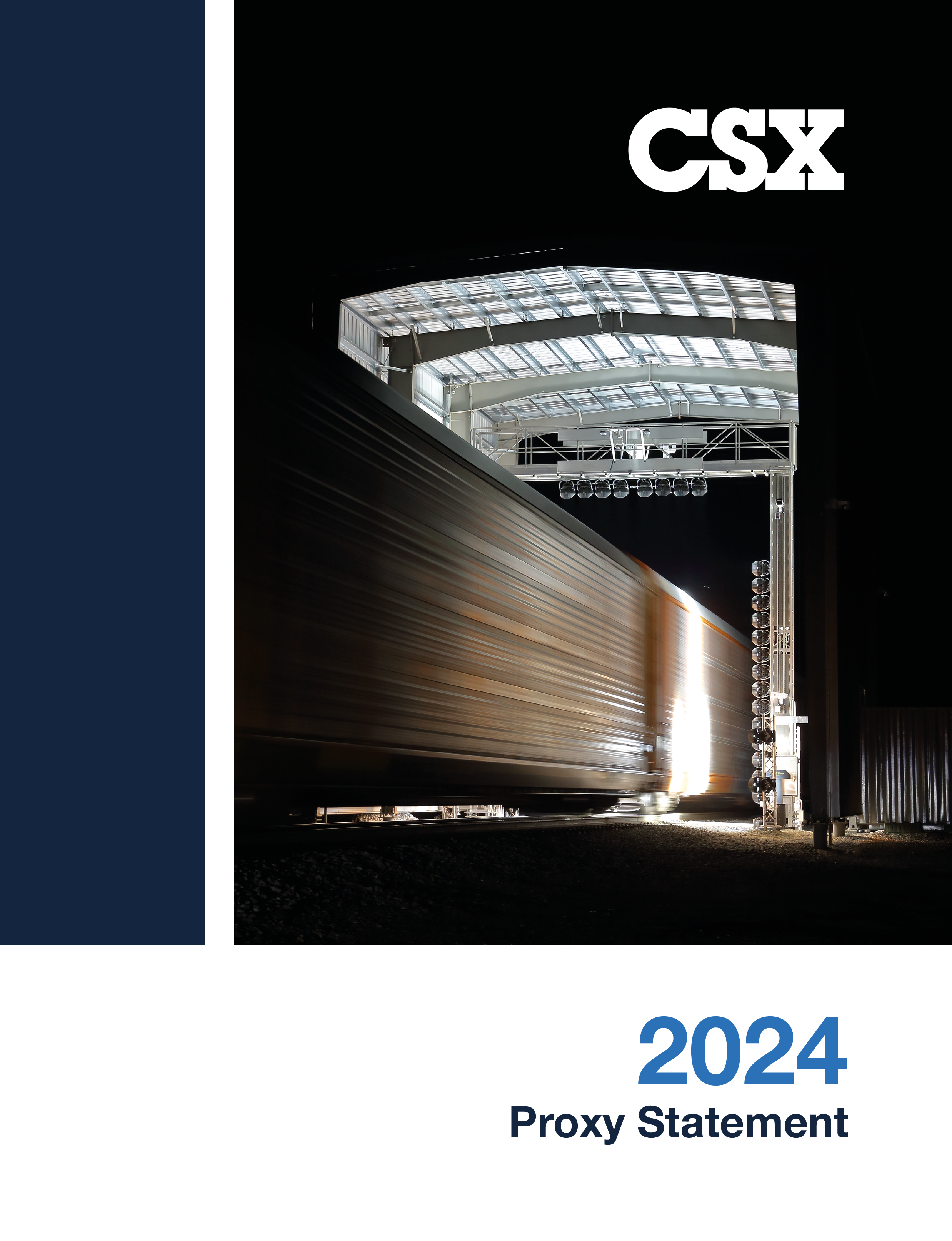
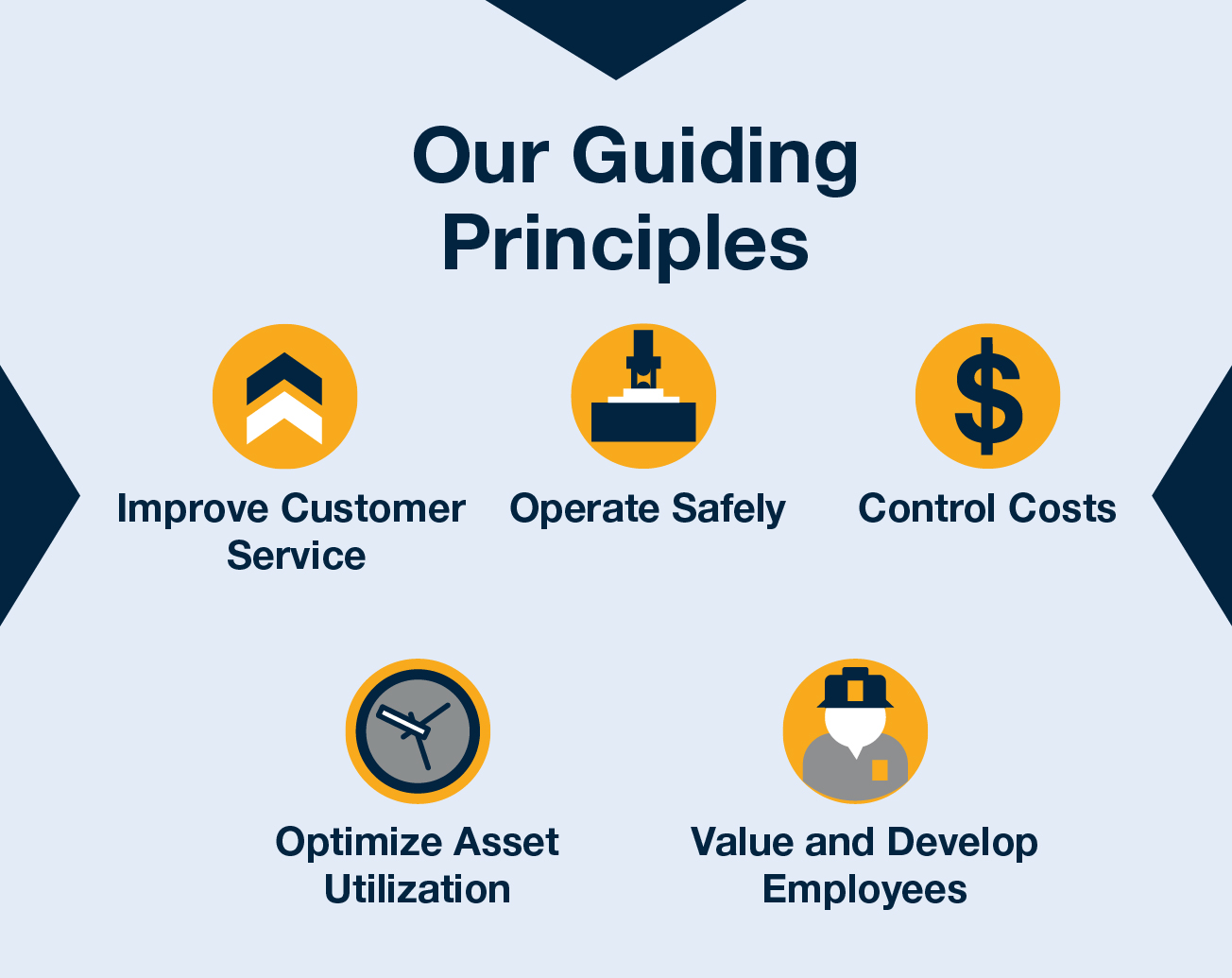 | ||||||||
Our Vision To be the best-run railroad in North America | Our Purpose To capitalize on the efficiency of rail transportation to serve North America | |||||||
| CSX by the Numbers as of December 31, 2023 |  | |||||||||||||||||||
| More than | ||||||||||||||||||||
196 years in operation | $14.7 billion of revenue generated | 3,500 locomotives, which reduce greenhouse gas emissions by up to 75% compared to trucks | ||||||||||||||||||
 | Approximately | Approximately | ||||||||||||||||||
20,000 route-mile rail network | 3.4 million carloads shipped | 12.9 million tons of carbon dioxide emissions avoided by CSX customers | ||||||||||||||||||
| More than | Approximately | |||||||||||||||||||
23,000 employees | 2.8 million intermodal units shipped | |||||||||||||||||||
| Letter to Shareholders |   After a year in which we significantly advanced our goal of strengthening CSX’s workplace culture to drive service excellence and business growth, we aim for continued progress in 2024 through a three-pillar strategy.   JOSEPH R. HINRICHS President and Chief Executive Officer | ||||
|
Dear Shareholder, Thank you for your ongoing confidence and investment in CSX Corporation. I hope you will join me and the CSX Board of Directors at the Company’s 2024 Annual Meeting on May 8th at 10:00 a.m. EDT, where we will review our 2023 performance and discuss our long-term strategic plan. The meeting will be held in a virtual format to support accessibility and shareholder participation. Our Strategy After a year in which we significantly advanced our goal of strengthening CSX’s workplace culture to drive service excellence and business growth, we aim for continued progress in 2024 through a three-pillar strategy: nsustaining a ONE CSX culture; ntransforming CSX through technology; and ngenerating profitable growth through a better customer experience. We are Our strategy enabled us to deliver industry-leading Merchandise and Coal growth in 2023, despite economic factors that constrained the broader transportation sector, as our improved service performance positioned us to increase our market share through competitive wins and truck conversions. We are encouraged as CSX continues to benefit in tangible ways from new industrial development partnerships, which are strengthening our sales pipeline with a broad mix of new business prospects. Additionally, the environmental advantage of rail over highway transportation is becoming a factor in our customers’ supply chain decision-making, and we are making efforts to extend this advantage by pursuing alternative energy and fuel-saving solutions that will further increase our efficiency and sustainability. Ongoing Cultural Transformation Progress on our ONE CSX cultural transformation remains a priority, as we build a workforce that values teamwork, communication and collaboration across all departments and job functions and truly feels the impact of an improved employee work experience. We succeeded in reaching labor agreements to provide the vast majority of our union-represented employees with paid sick leave, and we are continuing to | ||||
March 25, 2016
Dear Fellow Shareholder:
I am pleased
| 2024 Proxy Statement | 2 | ||||
The attached Noticesection of Annual Meeting of Shareholders and Proxy Statement include informationour Investor Relations website for additional details about the matters to be voted upon at the Annual Meeting. Proxy materials for the Annual Meeting, which include CSX Corporation’s (“CSX” or the “Company”) 2016 Proxy Statement and 2015 Annual Report to Shareholders, are available online to offer important Companyaccessing information and reduce the environmental impactconduct of the Annual Meeting.
In 2015, CSX delivered solid performance for its shareholders despite a challenging business environment in which low commodity prices, a strong U.S. dollarconsiders every shareholder vote important, and you are encouraged to promptly submit your proxy to ensure your shares are represented and voted, whether or not you plan to attend the transition in the energy markets significantly impacted many of our markets. Improving service, efficiency gains, and right-sizing our resources and costs with the lower demand environment helped to offset the loss of nearly $550 million in coal. We are taking necessary actions to manage our business in this difficult market, which include structural and network-wide changes to match resources and costs with business demand and drive further efficiency gains. In addition, we remain focused on pricing that reflects the value of CSX’s service.
As we look forward, the Company’s superior network reach and diverse market mix position CSX to continue delivering shareholder value into the future. We are confident that CSX will continue to be a preferred service provider for customers who face a growing population, a more integrated global economy and the need for more reliable and sustainable supply chains.
CSX also remains committed to sound corporate governance and leadership practices, including continuous board and management succession planning. In this regard, CSX has proactively adopted bylaw amendments that provide shareholders with proxy access.
We hope that you will participate in the2024 Annual Meeting, eitherMeeting. You can vote by attending to vote in person or by submitting your proxy via the Internet, by phone,telephone or, if you requested printed proxy materials, by signing, dating and returning the enclosedyour proxy card (oror voting instruction form ifin the postage-paid envelope provided. If you holdsubmit your proxy in advance, you can still vote your shares through a broker).online during the Annual Meeting should you choose to attend virtually. Please review the instructions onfor each of your voting options described in this Proxy Statement as well as in the Notice of Internet Availability of Proxy Materials you received in the mail or via email.
On behalf ofYour participation in our Annual Meeting is appreciated by the CSX Board of Directors our management team and our 29,000 CSX colleagues around the country, thank you for your investment in CSX. I look forward to seeing you at the Annual Meeting.
Sincerely,


Michael J. WardChairman of the BoardPresident and Chief Executive Officer
| Consistent with CSX’s commitment to environmental stewardship, resource conservation, governance and timely access to Company information, this year’s Proxy materials will be available to shareholders online. | ||
CSX Corporation3
| 3 |  | ||||


NOTICE OF 2016 ANNUAL MEETING OF SHAREHOLDERS
To Our Shareholders:
The Annual Meeting of Shareholders (the(the “Annual Meeting”) of CSX Corporation (“CSX” (together with its subsidiaries, “CSX” or the “Company”) will be held at 10:00 a.m. (EDT) on Wednesday, May 11, 2016 at The St. Regis Atlanta, Eighty-Eight West Paces Ferry Road, Atlanta, Georgia 30305 for the purpose of considering and acting upon the following matters:
 | Date and Time |  | How to Attend the Annual Meeting |  | Record Date | ||||||||||||
10:00 a.m. EDT | If you plan to participate in the Annual Meeting, please see the instructions in the Questions and Answers section of the Proxy Statement. Shareholders will be able to listen, vote electronically and submit questions during the Annual Meeting online. There will be no physical location for shareholders to attend. Shareholders may only participate online at www.virtualshareholdermeeting.com/CSX2024. | Only shareholders of record at the close of business on March 11, 2024, which is the record date for the Annual Meeting, are entitled to vote. | |||||||||||||||
01 To elect the 12 director nominees named in the the Company’s Board of | ||||||||||||||||||||||||||||||||||||||
| 02 Ernst & Young LLP as the Independent Registered Public Accounting Firm for | |||||||||||||||||||||||||||||||||||||
| 03 (non-binding) resolution to approve the compensation for the Company’s named executive | 04 To vote on a shareholder proposal requesting a railroad safety committee | ||||||||||||||||||||||||||||||||||||
 |
|  | FOR |  | FOR |  | AGAINST | |||||||||||||||||||||||||||||||
The persons named as proxies will use their discretion to vote on other matters that may properly come before the Annual Meeting.
To Our Shareholders
Only shareholders of record at the close of business on March 14, 2016, which is the record date for the Annual Meeting, are entitled to vote. The Notice Regarding the Availability of Internet Availability,Proxy Materials (the “Notice”), the Proxy Statement and the Annual Report on Form 10-K for the fiscalfiscal year ended December 25, 201531, 2023 (the “Annual“2023 Annual Report”) are being mailed or made available to those shareholders on or about March 28, 2016.
By Order of the Board of Directors,

Ellen M. FitzsimmonsExecutive Vice President-Law and Public AffairsGeneral Counsel and Corporate Secretary
TABLE OF CONTENTS
| By Order of the Board of Directors, | ||||||||||||||||||||
| Advance Voting | ||||||||||||||||||||
| ||||||||||||||||||||
 | Online |  | By Phone |  | By Mail | |||||||||||||||
| www.proxyvote.com | 1-800-690-6903 | Mark, sign, date and promptly mail the enclosed proxy card or voting instruction form in the postage-paid envelope | ||||||||||||||||||
IMPORTANT NOTICE REGARDING THE AVAILABILITY OF The Company’s Notice for the Annual Meeting, Proxy Statement and 2023 Annual Report are available, free of charge, at www.proxyvote.com. | ||
| 2024 Proxy Statement | 4 | ||||

 | |||||||||
| |||||||||
| |||||||||
| |||||||||
| |||||||||
| |||||||||
| |||||||||
| |||||||||
| |||||||||
| |||||||||
| |||||||||
| |||||||||
| |||||||||
| |||||||||
| |||||||||
| |||||||||
| |||||||||
| |||||||||
| |||||||||
| |||||||||
| |||||||||
| |||||||||
| |||||||||
| |||||||||
| |||||||||
| |||||||||
Principles of Corporate Governance | |||||||||
| |||||||||
| |||||||||
 |
| ||||||||
| |||||||||
| |||||||||
 | ||||||||
| ||||||||
| |||||||||
| |||||||||
| |||||||||
| |||||||||
| |||||||||
| |||||||||
| |||||||||
| |||||||||
| |||||||||
| |||||||||
| |||||||||
| |||||||||
| |||||||||
| |||||||||
| |||||||||
| ||||||||
 | ||||||||
| ||||||||
| ||||||||
| ||||||||
| 5 |  | ||||

| Creating Value, Together | ||||||||||||||
| Our Customers | ||||||||||||||
We help our customers reach their goals. We move our customers’ products reliably, efficiently and safely, while facilitating their reduction of greenhouse gas (“GHG”) emissions in the transition to a lower-carbon economy in the process. We aim to anticipate our customers’ needs to create effective solutions and overall be a trusted business partner. In 2023, we estimated that CSX customers avoided emitting 12.9 million tons of carbon dioxide by shipping with CSX versus truck. | ||||||||||||||
| Our Shareholders | ||||||||||||||
We implement strategic initiatives and engage in practices designed to drive business results with a focus on creating long-term shareholder gains. Through increased business growth and market share, which is incentivized by our executive compensation program, we are able to deliver strong returns over the long term to our investors. Last year, cash flow generation supported close to $4.4 billion in shareholder returns, including approximately $3.5 billion in share repurchases and nearly $900 million of dividends. | ||||||||||||||
| Our Employees | ||||||||||||||
We care about our people; employee health and well-being and safety are among our top priorities. We provide family-sustaining jobs with opportunities for significant growth and career advancement within our ONE CSX culture that delivers the resources to improve CSX employees’ emotional, social, physical and financial well-being both in their work and home lives, values employee engagement and puts safety first. With more than 23,000 employees, in 2023, we incurred over $3.0 billion in expenses for labor and fringe benefits. We trained nearly 3,350 craft employees at the CSX Atlanta Training Center on safety, including the more than 1,600 new conductors whom we successfully onboarded. | ||||||||||||||
| Our Communities | ||||||||||||||
We help strengthen our communities with a focus on community safety. We support numerous communities across our network through direct and indirect investment that provides jobs, fuels local suppliers and moves us all towards a more sustainable future. We promote rail safety, support active military, veterans and first responders, provide disaster relief and aim to improve the quality of life in the areas in which we operate, including by minimizing disturbances from noise, vibration and land use. In 2023, we contributed $14 million and 18,606 volunteer hours to our communities, and continued to prioritize public safety with a robust first responder training program that reached over 6,000 individuals in communities across our rail network. | ||||||||||||||
| 2024 Proxy Statement | 6 | ||||
Expansion of our groundbreaking industrial site selection program, CSX Select Site, to add new tools, capabilities and properties to meet growing demand for rail-served manufacturing sites and further assist companies in locating properties that best align with their needs and wide range of development criteria, now including sustainability factors. In 2023, CSX added eight rail-served properties in seven states to the CSX Select Site program for a total of 19 properties. | Working with key customers in important markets such as core chemicals and energy, metals and equipment, minerals, automotive, forest products, agriculture, food and fertilizers and waste to locate or expand 93 industrial development projects. | |||||||||||||||||||
Targeted investment in TRANSFLO, a CSX subsidiary that provides transloading services across our network and enables us to reach non-rail served customers, to unlock growth; specifically, in new terminals and terminal expansions in markets with high demand and limited capacity, and in equipment such as that to convert non-heated car spots to heated car spots. | Continued Quality Carriers multimodal adoption, offering a solution combining railcar, transload and truck transportation into a single seamless bundled product, and new intermodal services, offering a truck-rail-truck solution supported by a recently patented tank design. | |||||||||||||||||||
Enhancements to our ShipCSX customer service platform, which allows customers to plan, ship, trace and pay for shipments quickly and securely, while streamlining terminals so shipments can arrive efficiently. As part of our multi-year effort to rebuild the ShipCSX website, we are making ongoing improvements to better support customer needs, including adding a new version of our Carbon Calculator to help customers calculate GHG emission savings. We are also adding functionality that allows customers to link their own systems to ShipCSX for even greater convenience. | Piloting GPS shipment tracking on our rail cars and containers to provide customers with up-to-the-minute location information anywhere on our 20,000 route-mile network. GPS is a major advancement from automated equipment identification (“AEI”) because it enables customers to track rail car and container locations anywhere on the railroad, not just when they pass AEI wayside readers. | |||||||||||||||||||
| 7 |  | ||||
| Alternative Fuels | Battery-Electric and Hydrogen Locomotives | Fuel Efficiency Tools | |||||||||||||||||||||||||||
Biodiesel: Partnering with Wabtec Corporation (“Wabtec”), we began in 2022 a test program of a 20% biodiesel fuel in 10 rebuilt FDL Advantage locomotives with new high-pressure common rail fuel systems. This program continues to yield impressive results; as of the end of 2023, these 10 locomotives have burned more than 500,000 gallons of the 20% biodiesel fuel blend (“B20”), which reduces GHG emissions for Tampa area operations. Having almost completed the emissions testing—which is performed by Wabtec—we anticipate that Wabtec will submit data this year for U.S. Environmental Protection Agency certification for approval of long-term use of B20 fuel. | Battery-Electric: We are exploring battery-powered locomotives as a sustainable alternative to diesel. In 2023, the Federal Railroad Administration (the “FRA”) announced the grant of more than $11.5 million under the Consolidated Rail Infrastructure and Safety Improvement program for the CSX Curtis Bay facilities at the Port of Baltimore to replace three older locomotives at our terminal with new battery-electric locomotives and a battery charging station. The units, which will be the first zero-emissions locomotives at an East Coast port, are expected to annually reduce emissions by 1.53k tons of carbon dioxide and 71 tons of nitrogen oxides per year. Hydrogen: In 2023, CPKC and CSX announced our intent to enter into a joint venture to build and deploy hydrogen locomotive conversions kits for diesel electric locomotives. As an initial step in this collaboration, CSX plans to convert one of our diesel locomotives in Huntington, West Virginia using a hydrogen conversion kit developed by CPKC. We believe that this exciting initiative will help CSX and the rail industry achieve long-term carbon reduction targets with zero-emission locomotives and hydrogen as a fuel alternative. | Trip Optimizer and Zero-to-Zero: CSX was the first railroad to test Wabtec’s Trip Optimizer Zero-to-Zero technology. Trip Optimizer is a smart system for trains that is similar to cruise control. It automatically controls locomotive throttle and brakes to lower fuel burn based on dynamics like the terrain and speed restrictions. We already use Trip Optimizer technology across our mainline fleet of locomotives, helping us save approximately 41 million gallons of fuel a year—or an average saving of 1.4 gallons of fuel per auto mile. Trip Optimizer Zero-to-Zero is a relatively new feature that further expands the benefits of the Trip Optimizer tool, and allows a train to start from zero miles per hour and stop automatically using intelligent controls. This technology is expected to help us save an additional 4.9 million gallons of fuel per year. As of early 2024, we continue to work with the FRA to test and implement this technology. | |||||||||||||||||||||||||||
| 2024 Proxy Statement | 8 | ||||
| 9 |  | ||||
| Who We Are* | * The data reflected in this table, which is calculated as of December 31, 2023, excludes approximately 2,500 employees of certain CSX subsidiary companies due to such companies’ separate payroll systems. # Employees who identify as female, Black or African American, Native Hawaiian or Pacific Islander, Asian, American Indian or Alaskan Native. | ||||||||||||||||||||||
Under-Represented# Employees | Employees of Color | Female Employees | |||||||||||||||||||||
23% of Total Workforce 48% of Management New Hires 41% of Union New Hires 32% of Management Promotions | 20% of Total Workforce 23% of Management 19% of Union | 5% of Total Workforce 22% of Management 2% of Union | |||||||||||||||||||||
| Generations | Retention | Veteran and Active-Duty Status | |||||||||||||||||||||
9% Boomers 52% Gen X 33% Gen Y/Millennials 6% Gen Z 45 Average Age | 90% Overall Retention Rate 84% Under-Represented# Retention Rate 14 Average Years of Service | 16% of Total Workforce 3,206 Veterans and active-duty military | |||||||||||||||||||||
| 2024 Proxy Statement | 10 | ||||
 | ||||||||||||||
| 11 |  | ||||
| 2024 Proxy Statement | 12 | ||||

 | |||||||||||||||||
Election of Directors As discussed in more detail in the “Corporate Governance” section below beginning on page 19 of this Proxy Statement. | |||||||||||||||||
 The Board unanimously recommends a vote FOR the election of the following director nominees. | |||||||||||||||||
| COMMITTEES KEY | |||||||||||||||||
 | Chair | ||||||||||||||||
 | Audit | ||||||||||||||||
 | Compensation and Talent Management | ||||||||||||||||
| Executive | |||||||||||||||||
 | Finance | ||||||||||||||||
 | Governance and Sustainability | ||||||||||||||||
| 13 |  | ||||
CSX Corporation5
▸PROXY SUMMARY
This summary highlights information contained elsewhere in this Proxy Statement. This summary does not contain all of the information that you should consider, and you should read the entire Proxy Statement carefully before voting. For more complete information regarding the Company’s 2023 performance, please review the 2023 Annual Report.
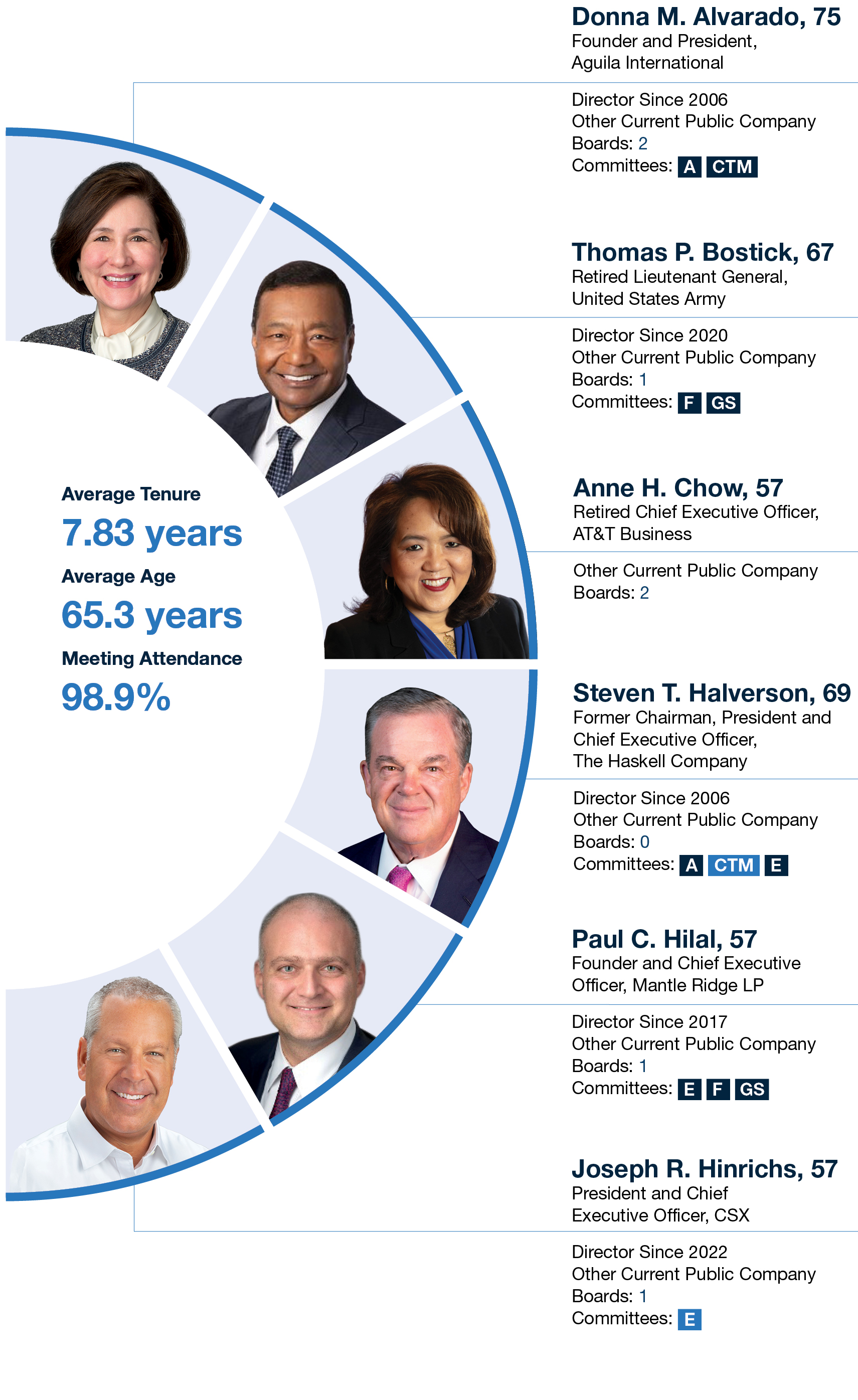 | |||||
| Collective Key Skills and Experiences of the Board | |||||
 Business Operations | |||||
 Corporate Governance | |||||
 Finance/Capital Allocation | |||||
 Government/Regulated Industries | |||||
 Human Capital Management | |||||
 Transportation Industry/Supply Chain Management | |||||
 Sustainability | |||||
 Risk/Crisis Management | |||||
 Accounting/Financial Reporting | |||||
 Cybersecurity Expertise | |||||
| 2024 Proxy Statement | 14 | ||||
 | Conducted Outreach & Discussed Key Issues Before the 2023 Annual Meeting |  | Determined Changes to Policies and Practices & Planned Off-Season Outreach |  | Reviewed Corporate Governance Trends & Conducted Off-Season Outreach |  | Implemented Additional Responsive Actions | ||||||||||||||||||||||||||||
 |  |  |  | ||||||||||||||||||||||||||||||||
Contacted the governance teams of 15 key shareholders, representing approximately 40.2% of outstanding shares* Received a declination (generally due to investors having no concerns) from or met with the governance teams of 12 of these shareholders, representing approximately 36.4% of outstanding shares* Areas of focus included: nFeedback on executive compensation changes made in response to shareholder feedback in 2022 and any outstanding concerns nBoard composition, refreshment and diversity nDirector commitments nCEO leadership transition nEnvironmental and sustainability initiatives nCulture, safety and human capital management initiatives | Responded to key issues: nContinued commitment to more fulsome and specific disclosure of our incentive plans performance measures nAdopted a “Rooney Rule” in connection with director candidates, which requires individuals who self-identify as female and/or a racial or ethnic minority to be included in the initial pool of candidates when selecting new director nominees nAdopted numerical limits in connection with director commitments, which provide: a director who serves as the CEO of a public company may not serve on more than three public company boards; and all other directors may not serve on more than five public company boards nPublished an enhanced 2022 ESG Report, with more detail on our various strategic initiatives | Contacted the governance teams of 11 of our largest shareholders, representing approximately 36.3% of outstanding shares* Received feedback from or met with the governance teams of 8 of these shareholders, representing approximately 29.8% of outstanding shares* Areas of focus included: nBoard composition, refreshment and diversity nDirector commitments nBoard oversight of risk and strategy nSafety nLeadership transitions nEnvironmental and sustainability initiatives | Implemented additional responsive actions: nSelected a slate of director nominees that is 33% female nCommitted to more fulsome and specific disclosure of Board refreshment and oversight of risk and strategy, with particular focus on safety nReplaced operating ratio with operating margin in our short-term incentive compensation plan (effective for 2024) to support a growth mindset with focus on continued improvement and introduced additional rigor in evaluating an executive’s individual performance | ||||||||||||||||||||||||||||||||
| 15 |  | ||||
 The Board unanimously recommends that the shareholders vote FOR this proposal. | |||||||||||||||||
ITEM 2 Ratification of Independent Registered Public Accounting Firm As discussed in more detail in the “Audit Matters” section below beginning on page 53 of this Proxy Statement. | |||||||||||||||||
 The Board unanimously recommends that the shareholders vote FOR this proposal. | |||||||||||||||||
ITEM 3 Advisory (Non-Binding) Vote to Approve the Compensation of CSX’s Named Executive Officers As discussed in more detail in the “Executive Compensation” section below beginning on page 57 of this Proxy Statement. | |||||||||||||||||
 CSX Executive Compensation Practices Include: CSX Executive Compensation Practices Include:nStrong pay-for-performance alignment nSignificant percentage of executive compensation that is performance based nPerformance measures with stretch targets that are highly correlated to shareholder value creation nShort-term incentive compensation plan that contains financial, safety, operational and environmental goals nInclusion of multiple financial measures in short and long-term incentive plans nRobust performance management and goal setting processes for the CEO and Executive Vice Presidents nEngagement of an independent compensation consultant to review our executive compensation program and perform an annual risk assessment nSignificant share ownership requirements for Vice President-level executives and above and non-employee directors nDouble trigger in change-of-control agreements for severance payouts (i.e., change of control plus termination) nClawback provisions in short and long-term incentive plans based on a financial restatement or behavioral triggers such as dishonesty, fraud, theft or misconduct, beyond those required under SEC and NASDAQ rules nUse of payout caps on short and long-term incentives nAnnual “Say-on-Pay” vote |  CSX Executive Compensation Practices Do NOT Include / Allow: CSX Executive Compensation Practices Do NOT Include / Allow:nRe-pricing of underwater options without shareholder approval nExcise tax gross-ups nRecycling of shares withheld for taxes or exercise price nHedging or pledging of CSX common stock nVesting of equity awards with less than a one-year period nEncouraging unreasonable risk taking | |||||||||||||
| 2024 Proxy Statement | 16 | ||||
2023 MICP Performance Measure(1) | Threshold(1) (0% – 50% payout) | Target (100% payout) | Maximum (200% payout) | Individual Measure Payouts | Resulted Company Payout | Total Payout for All NEOs | ||||||||||||||||||||
| Financial Goals – 70% weighting | ||||||||||||||||||||||||||
Operating Income (30% weighting) |  | 33% | ||||||||||||||||||||||||
Operating Ratio(2) (30% weighting) |  | 32% | ||||||||||||||||||||||||
Initiative-based Revenue Growth(3) (10% weighting) |  | 20% | 115% | 115%(5) | ||||||||||||||||||||||
ESG (Safety and Environmental) and Operational Goals(4) – 30% weighting | ||||||||||||||||||||||||||
FRA Personal Injury Rate (5% weighting) |  | 10% | ||||||||||||||||||||||||
FRA Train Accident Rate (5% weighting) |  | 0% | ||||||||||||||||||||||||
Trip Plan Compliance (10% weighting) |  | 20% | ||||||||||||||||||||||||
Fuel Efficiency (10% weighting) |  | 0% | ||||||||||||||||||||||||
| 17 |  | ||||
| 2021-2023 LTIP Performance Measure | Threshold (25% payout) | Target (50% payout) | Maximum (100% payout) | Payout | |||||||||||||
Average Annual Operating Income Growth Rate (50% weighting) |  | 200% of Target | |||||||||||||||
Cumulative Free Cash Flow(1) (50% weighting) |  | ||||||||||||||||
| Relative TSR (Modifier) |  | -19% | |||||||||||||||
| Total Payout: | 162% of Target | ||||||||||||||||
 The Board unanimously recommends that the shareholders vote AGAINST this proposal. | |||||||||||||||||
ITEM 4 Shareholder Proposal Requesting a Railroad Safety Committee As discussed in more detail in the “Shareholder Proposal” section below beginning on page 110 of this Proxy Statement. | |||||||||||||||||
| 2024 Proxy Statement | 18 | ||||

| ITEM 1 | Election of Directors | ||||||||||
| 19 |  | ||||
 | The Board unanimously recommends a vote FOR the election of the following nominees. | ||||||||||
| 2024 Proxy Statement | 20 | ||||
 | Donna M. Alvarado, 75 Independent Director Nominee Director since 2006 | ||||||||||
Career Highlights nFounder and current President of Aguila International, a business-consulting firm that specializes in human resources and leadership development, since 1994. nServed as President and Chief Executive Officer of Quest International, a global educational publishing company, from 1989 to 1993. nServed as Chairwoman of the Ohio Board of Regents. nAppointed to various executive and legislative staff positions at the U.S. Department of Defense and the U.S. Congress. nAppointed by President Ronald Reagan to lead the federal agency ACTION, the nation’s premier agency for civic engagement and volunteerism. Other Leadership Experience Ms. Alvarado has served on boards in the manufacturing, banking, transportation and service industries. She has also led state and national workforce policy boards. | Key Skills and Qualifications nCorporate Governance Serves as President of Aguila International and previously served as President and Chief Executive Officer of Quest International. Also serves on public company boards, including as the chair of the nominating and governance committee of each of CoreCivic, Inc. and Park National Corporation. nGovernment/Regulated Industries Served in several senior management governmental roles at both the state and federal levels. nRisk/Crisis Management Relevant experience through her roles at the U.S. Department of Defense and on audit committees of public company boards. nHuman Capital Management Expertise in human resources and leadership development through her work at Aguila International. Also served on state and national workforce policy boards. Other Current Public Company Directorships nCoreCivic, Inc. nPark National Corporation | ||||||||||
CSX Committee Assignments and Rationale Audit nOversight of company financials, compliance with legal and regulatory requirements and risk management processes in her roles as President of Aguila International and as President and Chief Executive Officer of Quest International. nRisk and crisis management experience obtained through her roles with the U.S. Department of Defense and the U.S. Congress. Also, years of experience on audit committees of public company boards. | Compensation and Talent Management nDecades of experience as the President of a business-consulting firm that specializes in human resources and leadership development. nService on multiple state and national workforce policy boards. Proven leadership on and commitment to promoting diversity, pay equity and inclusion and civic and community involvement. | ||||||||||
| 21 |  | ||||
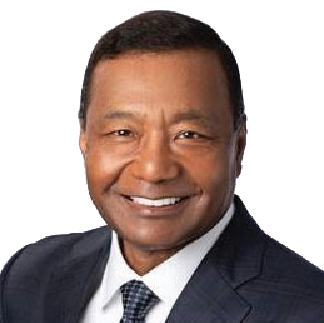 | Thomas P. Bostick, 67 Independent Director Nominee Director since 2020 | ||||||||||
Career Highlights nChief Executive Officer of Bostick Global Strategies, LLC, a boutique management consulting firm that specializes in areas such as government contracting, engineering, environmental sustainability, human resources, biotechnology, executive coaching, organizational operations and transformation and project management, since 2016. nServed as Chief Operating Officer and President of Intrexon Bioengineering, a division of Intrexon Corporation, a public company, which seeks to advance biologically engineered solutions to improve sustainability and efficiency, from 2016 to 2020. Led a major restructuring that resulted in Intrexon being renamed as Precigen. nRetired as a U.S. Army Lieutenant General in 2016. nServed as Chief of Engineers and Commanding General of the U.S. Army Corps of Engineers, where he was responsible for most of the nation’s civil works infrastructure and military construction. nServed as the U.S. Army’s Director of Human Resources and led the U.S. Army Recruiting Command. Other Leadership Experience Lt. Gen. (ret.) Bostick was deployed during Operation Iraqi Freedom as second in command of the 1st Cavalry Division and later commanded the U.S. Army Corps of Engineers Gulf Region Division with over $18 billion in construction. He is an independent director on the board of Perma-Fix, a nuclear services company and leading provider of nuclear | and mixed waste management. He serves as an independent trustee on the Equity and High Income Fund Board of Fidelity Investments, Inc., a privately-owned investment management company. He is an independent director on the board of Allonnia, a biotech company focused on environmental challenges, and on the board of HireVue, which uses artificial intelligence and data analytics to transform the way organizations discover, engage and hire the best talent. He is a Member of the National Academy of Engineering and the National Academy of Construction. Key Skills and Qualifications nBusiness Operations Served as Chief Operating Officer and President of Intrexon Bioengineering, now known as Precigen. Led the U.S. Army Corps of Engineers, the world’s largest public engineering organization. nGovernment/Regulated Industries Long-tenured service and distinguished career in commanding roles with the U.S. military. nHuman Capital Management Expertise through his service as the U.S. Army’s Director of Human Resources, leadership in the U.S. Army Recruiting Command and work at Bostick Global Strategies, LLC. nSustainability Relevant experience through his leadership and project management oversight at the U.S. Army Corps of Engineers and several companies focused on sustainability and leadership of an ESG subcommittee at Perma-Fix Environmental Services, Inc. Other Current Public Company Directorships nPerma-Fix Environmental Services, Inc. | ||||||||||
CSX Committee Assignments and Rationale Finance nOversight of company capital structure, cash flows and key financial ratios or metrics in his role as Chief Executive Officer of Bostick Global Strategies, LLC and as Chief Operating Officer and President of Intrexon Bioengineering. Financial management experience as Chief of Engineers and Commanding General of the U.S. Army Corps of Engineers, where he was responsible for most of the nation’s civil works infrastructure and military construction. nService as an independent trustee on the Equity and High Income Fund Board overseeing equity funds and high-yield funds sponsored by Fidelity Investments, Inc., a privately-owned investment management company. | Governance and Sustainability nNumerous leadership roles in public and private companies and the U.S. military, with experience in evaluating and overseeing leadership and management structures. nLeadership at the U.S. Army Corps of Engineers and several companies focused on sustainability, including addressing environmental challenges. | ||||||||||
| 2024 Proxy Statement | 22 | ||||
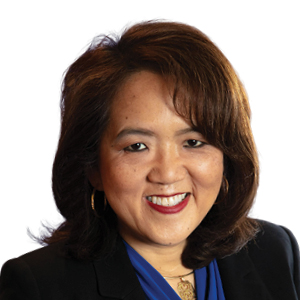 | Anne H. Chow, 57 New Independent Director Nominee | ||||||||||
Career Highlights nServed as Chief Executive Officer of AT&T Business from 2019 to 2022, where she was responsible for leading a $35 billion global operating unit comprised of 35,000 people that provided communications and networking solutions to businesses across the world, including nearly all Fortune 1000 companies and the public sector across the U.S. nHeld a variety of other executive leadership positions at AT&T across product management, marketing, sales, customer service and operations, partner ecosystems and network engineering, including President – National Business, President – Integrator Solutions and Senior Vice President – Premier Client Group, since 2000. nCurrently serves as a Lead Director of Franklin Covey, a company dedicated to organizational transformation. Also serves as a director of 3M, a company focused on material science innovation for impact. nFounder of The Rewired CEO, a business services firm, where she has served as Chief Executive Officer since 2022. Other Leadership Experience Ms. Chow has been and is currently involved as a board or advisory member in organizations including the Georgia Tech President's Advisory Board, Dallas Mavericks Advisory Council, Girl Scouts of the USA, New Jersey Chamber of Commerce, the Asian American Justice Center and APIA Scholars. | Key Skills and Qualifications nBusiness Operations Decades of executive leadership positions at AT&T, including as Chief Executive Officer of AT&T Business, where she successfully served customers across nearly all industries while driving business transformation and performance, extensive distribution and global and cross-functional experience in management and a master’s degree in business administration from Cornell University. nCorporate Governance Experience as a director at other public companies, including in board leadership positions such as Lead Independent Director, Chair of the Nominating Committee at Franklin Covey. Substantial local and national nonprofit governance and community advisory experience. nCybersecurity Expertise Proven leadership and expertise as Chief Executive Officer of AT&T Business, where she oversaw the development and deployment of the entire business portfolio suite including fiber, wireless, cloud, 5G, networking, cybersecurity and managed and professional services including partnership ecosystems. nHuman Capital Management Extensive talent management experience through her long-tenured career including roles as Chief Executive Officer and President with deep expertise in talent, culture and inclusion. Currently serves as Senior Fellow and Adjunct Professor of Executive Education at Northwestern University’s Kellogg School of Management. Other Current Public Company Directorships nFranklin Covey Co. n3M | ||||||||||
| 23 |  | ||||
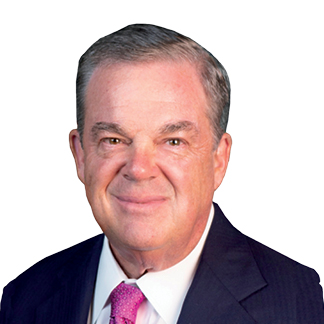 | Steven T. Halverson, 69 Independent Director Nominee Director since 2006 | ||||||||||
Career Highlights nServed as Chairman from 2010 to 2021, and President and Chief Executive Officer from 1999 to 2018, of The Haskell Company, one of the largest design-build and engineering and construction firms in the U.S. nServed as Senior Vice President of M.A. Mortenson, a national construction firm. nServed as a director from 2014 to 2023 of GuideWell Mutual Holding Corporation, a not-for-profit company that is the parent to a family of companies focused on advancing health care, including health insurance group Blue Cross and Blue Shield of Florida, for which Mr. Halverson also served as a director from 2010 to 2023. nCurrently serves as a director of Gilbane, Inc., a 150-year old global real estate and construction company that is one of the nation’s largest companies in its industries. Other Leadership Experience Mr. Halverson has served as the chair of professional and business organizations such as the Construction Industry Roundtable, the Design-Build Institute of America and the National Center for Construction Education and Research. He has also served as the chair of several civic organizations, including the Florida Council of 100, the Florida Chamber of Commerce and the Jacksonville Civic | Council. He is a certified fellow of the National Association of Corporate Directors and received certification in ESG Governance from Berkley Law School. Key Skills and Qualifications nBusiness Operations Decades of relevant experience through his service as Chairman, President and Chief Executive Officer of The Haskell Company and executive positions with M.A. Mortenson, during which he gained extensive and unique insight on the national construction industry and, accordingly, the U.S. economy. nCorporate Governance Led as Chairman of The Haskell Company and the chair of various professional, business and civic organizations. nGovernment/Regulated Industries Served on multiple civic councils, appointed boards and commissions, through which he helped advise on and advocate for federal, state and local economic policies. nHuman Capital Management Expertise through his long-tenured role as Chief Executive Officer and significant service on compensation committees focused on talent management. Other Current Public Company Directorships nNone | ||||||||||
CSX Committee Assignments and Rationale Audit nOversight of financial statements, compliance with legal and regulatory requirements and risk management processes in his decades-long tenure as Chairman, President and Chief Executive Officer of The Haskell Company and from his broader experience with the national construction industry. nKnowledge of legal, regulatory and policymaking risks and processes through his years of leadership experience with organizations in highly regulated industries and on multiple civic councils. Also, many years of experience serving on the CSX Audit Committee. | Compensation and Talent Management (Chair) nHuman capital management expertise gained through his many years of leadership as President and Chief Executive Officer of The Haskell Company. Proven commitment to civic and community involvement. nExtensive service on compensation committees of public company boards, including 14 years serving as the Chair of the CSX Compensation and Talent Management Committee. | ||||||||||
Executive nAppointed due to his role as Chair of the Compensation and Talent Management Committee. | |||||||||||
| 2024 Proxy Statement | 24 | ||||
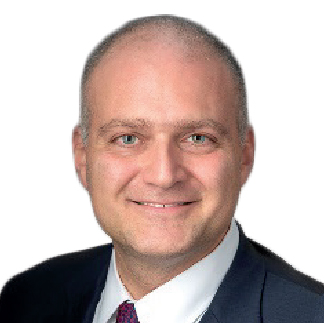 | Paul C. Hilal, 57 Independent Director Nominee / Vice Chair of the Board Director since 2017 | ||||||||||
Career Highlights nFounder and Chief Executive Officer of Mantle Ridge LP, an investment firm founded in 2016 that actively stewards and assists portfolio companies. nServes as Vice Chairman of Dollar Tree. nServed as Vice Chairman of Aramark from 2019 to 2023. nServed as a partner and senior investment professional at Pershing Square Capital Management from 2006 to 2016. nServed as a director of Canadian Pacific Railway Limited from 2012 to 2016. nServed as Chairman and acting Chief Executive Officer of Worldtalk Communications from 1999 to 2000. nDecades’ worth of experience serving on or leading governance committees, compensation committees, finance committees and executive committees of public-company boards. Other Leadership Experience Mr. Hilal currently serves on the Board of Overseers of Columbia Business School and previously served on the Board of the Grameen Foundation, an umbrella organization that helps micro-lending and micro-franchise institutions empower the world’s poorest through financial inclusion and entrepreneurship. | Key Skills and Qualifications nCorporate Governance Currently serves as Vice Chairman of Dollar Tree and previously served as Vice Chairman of Aramark and Chairman of Worldtalk Communications. Over a decade of experience serving on nominating and governance committees. nFinance/Capital Allocation Extensive experience with leading capital management organizations, including control of his own capital management firm. Proven expertise as a value investor, capital allocator and engaged director driving shareholder value. nHuman Capital Management Relevant talent management experience through his role as a Chief Executive Officer, in senior management positions and as a director. nTransportation Industry/Supply Chain Management Railroad industry experience and perspective through his service as a director of Canadian Pacific Railway Limited in addition to his long tenure of service on the Board of CSX. Other Current Public Company Directorships nDollar Tree | ||||||||||
CSX Committee Assignments and Rationale Finance nExtensive experience in senior leadership roles of investment and capital management organizations. Expertise with investment policies, capital allocation, financing and policies and practices related to driving shareholder value. nYears of service on finance committees of public company boards, including of Canadian Pacific Railway Limited and Dollar Tree, Inc., in addition to CSX. Executive nAppointed due to his role as Vice Chair of the Board of Directors. | Governance and Sustainability nCorporate governance experience gained through several board leadership roles at public companies, including service as Chairman of Worldtalk Communications and Vice Chairman of the boards of CSX, Dollar Tree and Aramark. These include more than a decades’ worth of experience on nominating and governance committees. Also, oversight of governance matters in his role as Founder and Chief Executive Officer of his own investment firm. nExperience with sustainability policies, strategies and programs and political giving policies and community affairs activities through his roles as a value investor and engaged steward during corporate transformations and his service on the Board of Overseers of Columbia Business School and the Board of the Grameen Foundation. | ||||||||||
| 25 |  | ||||
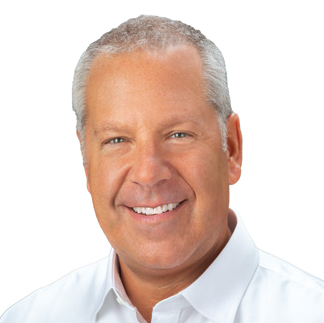 | Joseph R. Hinrichs, 57 Management Director Nominee / President and Chief Executive Officer Director since 2022 | ||||||||||
Career Highlights nServed as President of Ford Motor Company’s global automotive business from 2019 to 2020, where he led the company’s automotive operations. Previously held other positions at Ford, including President of Global Operations, from 2017 to 2019, President of the Americas, from 2012 to 2017, and President of Asia Pacific and Africa, from 2009 to 2012. nCurrently serves as: a member of the board of directors of The Goodyear Tire & Rubber Company; Chairman of the board of directors of Exide Technologies, a battery manufacturer and leading provider of advanced energy solutions; a venture partner at First Move Capital, an investment firm; an automotive advisory board member at Luminar Technologies, a global automotive technology company ushering in a new era of vehicle safety and autonomy; and a strategic advisor at mircroDrive, a company in the advertising services industry that provides a SaaS platform created specifically for hyper-local influencer marketing. nServed as a partner and Senior Vice President at Ryan Enterprises, a private equity group. nSpent 10 years at General Motors in various engineering and manufacturing leadership roles. nServed as Chairman of the National Minority Supplier Development Council from 2016 to 2019 and also served on the boards of CEO Climate Dialogue, Climate Leadership Council and the U.S.-China Business Council. | Other Leadership Experience Mr. Hinrichs has more than 30 years’ experience in the global automotive, manufacturing and materials planning and logistics sectors. He has served on the boards of several other companies, including Rivian Automotive, Inc., Ford Motor Credit Company, GPR and Ascend Wellness Holdings. Key Skills and Qualifications nBusiness Operations Decades of relevant experience through his senior management positions with Ford Motor Company, where he enabled Ford to execute world-class manufacturing on a global scale, and other leadership and advisory roles. nHuman Capital Management Proven track record during his tenure in leadership positions, especially at Ford Motor Company, around employee engagement, building a one-team workforce and prioritizing safety and an inclusive culture. nTransportation Industry/Supply Chain Management Extensive automotive industry experience and perspective through his service at Ford Motor Company and General Motors, which is an industry with dynamics similar to rail. nSustainability Demonstrated commitment to sustainability in his work at Ford Motor Company, advisory services to companies advancing electric vehicle adoption and leadership on climate organizations. Other Current Public Company Directorships nThe Goodyear Tire & Rubber Company | ||||||||||
CSX Committee Assignments and Rationale Executive (Chair) nAppointed due to his role as Chief Executive Officer of CSX. | |||||||||||
| 2024 Proxy Statement | 26 | ||||
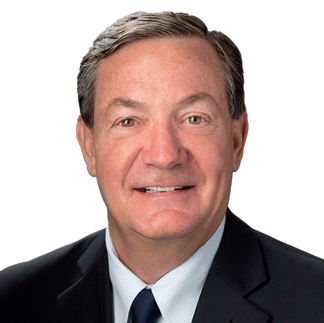 | David M. Moffett, 72 Independent Director Nominee Director since 2015 | ||||||||||
Career Highlights nServed as Chief Executive Officer and a director of the Federal Home Loan Mortgage Corporation from 2008 until his retirement in 2009. nServed as a Senior Advisor with The Carlyle Group, one of the world’s largest and most diversified global investment firms, from 2007 to 2008. nServed as Vice Chairman and Chief Financial Officer of U.S. Bancorp from 2001 to 2007, after its merger with Firststar Corporation. nServed as Vice Chairman and Chief Financial Officer of Firststar Corporation from 1998 to 2001. nServed as Chief Financial Officer of StarBanc Corporation, a predecessor to Firststar Corporation, from 1993 to 1998. Other Leadership Experience Mr. Moffett serves as a trustee on the Board of Columbia Threadneedle Mutual Funds, overseeing approximately 170 funds within the Columbia Funds mutual fund complex. He also serves as a trustee for the University of Oklahoma Foundation and has served as a consultant to Bridgewater and Associates. | Key Skills and Qualifications nCorporate Governance Substantial leadership experience as an executive and vice chair of major financial institutions and as a trustee in connection with Columbia Funds and the University of Oklahoma Foundation. nFinance/Capital Allocation Served for many years as a Chief Financial Officer in the banking industry, during which he was responsible for financial and asset management. nAccounting/Financial Reporting Extensive expertise in corporate accounting and reporting and overseeing financial statements through decades of leading financial institutions. nRisk/Crisis Management Served in senior management roles in the risk-intensive and highly regulated banking industry for more than 30 years and on audit committees of public company boards, including as the chair of the audit committee of PayPal. Other Current Public Company Directorships nPayPal Holdings, Inc. | ||||||||||
CSX Committee Assignments and Rationale Audit (Chair) nDecades of experience in corporate accounting and oversight of financial statements, compliance with legal and regulatory requirements, risk management processes and internal audit functions through his significant leadership roles in the financial services and banking industry, which is a risk-intensive and highly regulated industry. Also, years of experience on audit committees of public company boards, including as the chair of the audit committee of PayPal. nMeets the qualifications of an “Audit Committee Financial Expert” as defined by SEC rules and regulations. | Finance nMany years of service in senior leadership roles in the banking industry, including as chief executive officer and chief financial officer. nCapital allocation and strategic financial expertise gained through his direct oversight of financial and asset management for major financial institutions. | ||||||||||
Executive nAppointed due to his role as Chair of the Audit Committee. | |||||||||||
| 27 |  | ||||
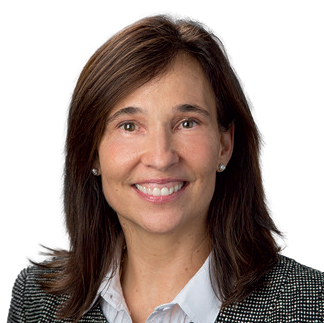 | Linda H. Riefler, 63 Independent Director Nominee Director since 2017 | ||||||||||
Career Highlights nServed as Chair of Global Research at Morgan Stanley from 2011 to 2013, after having served as Global Head of Research since 2008. nServed as Chief Talent Officer at Morgan Stanley from 2006 to 2008. nServed on both the Management and the Operating Committees at Morgan Stanley. nJoined Morgan Stanley in 1987 in the Capital Markets division and was elected a managing director in 1998. nServes on the executive leadership team of Stanford Women on Boards, whose mission is to cultivate and place exceptional women for board services. nServed on the boards of Stanford Graduate School of Business and Choate Rosemary Hall. Other Leadership Experience Ms. Riefler has served on the board of North American Partners in Anesthesia, a private equity-owned national health care company, since 2016. She is also the former chair of an educational non-profit, Pencils of Promise, which is committed to literacy in global rural underserved communities. | Key Skills and Qualifications nCorporate Governance Relevant experience and perspective through her service on the executive leadership team of Stanford Women on Boards and various boards, including as the chair of the compensation committee at MSCI, Inc. Expertise and commitment to leadership on corporate governance reflected in her co-authorship of the Stanford Women on Boards “Leading-Edge Stewardship: A Roadmap to Board Excellence” and a companion piece “Leading-Edge Stewardship: A Personal Roadmap for Building Your Personal Effectiveness in the Boardroom.” Recognized for her “outstanding work by an independent director” at the 2023 Corporate Governance Awards, hosted by Governance Intelligence (formerly Corporate Secretary). nFinance/Capital Allocation In-depth knowledge of company valuation and the global capital markets through her decades of service at Morgan Stanley. Long board tenure with MSCI, Inc., a global provider of indices and decision support tools and services. nHuman Capital Management Expertise in talent management through her role as Chief Talent Officer at Morgan Stanley. Commitment to diversity, including in board composition, reflected through her service at Stanford Women on Boards. nSustainability Extensive experience through 16 years’ service on the board of MSCI, Inc., a global leader in ESG and climate-related research and solutions. Other Current Public Company Directorships nMSCI, Inc. | ||||||||||
CSX Committee Assignments and Rationale Compensation and Talent Management nHuman capital and talent management expertise acquired through her tenure as Chief Talent Officer for Morgan Stanley. Also, years of experience as the chair of the compensation committee at MSCI, Inc. nProven commitment to diversity, pay equity and inclusion demonstrated through her service on the leadership team of Stanford Women on Boards and service on the board of a non-profit committed to underserved communities. Executive nAppointed due to her role as Chair of the Governance and Sustainability Committee. | Governance and Sustainability (Chair) nExtensive corporate governance experience and expertise through her service on the executive leadership team of Stanford Women on Boards and various boards, demonstrated through her leadership on considering and adopting good governance practices, including at CSX, and co-authorship of material on board governance. nValuable insights and commitment to sustainability developed through her 16 years of service on the board of MSCI, Inc., a global leader in ESG and climate-related research and solutions, and reflected in her engagement in opportunities to stay informed on the changing industry, societal and regulatory landscapes, stakeholder expectations and ESG issues. | ||||||||||
| 2024 Proxy Statement | 28 | ||||
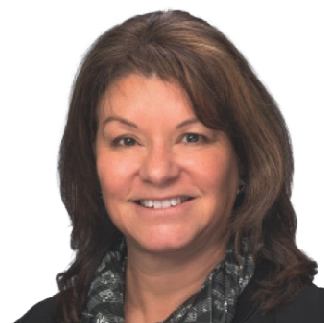 | Suzanne M. Vautrinot, 64 Independent Director Nominee Director since 2019 | ||||||||||
Career Highlights nPresident of Kilovolt Consulting, Inc., a cybersecurity strategy and technology consulting firm, since October 2013. nRetired from the U.S. Air Force (the “USAF”) as a Major General in 2013, following a distinguished 31-year career. nServed as Commander of various satellite, space surveillance and space command and control units from 1996 to 2008. nServed as Commander of the USAF Recruiting Command. nServed as Commander of the USAF’s Cyber Command from 2011 to 2013. nServed as Deputy Commander for the Joint Functional Component Command-Network Warfare. nServed as the USAF Director of Plans and Policy, U.S. Cyber Command. nInducted into the National Academy of Engineering. Other Leadership Experience Maj. Gen. (ret.) Vautrinot serves in board leadership positions at other public companies, including as Chair of the Safety, Health and Environment Committee of Ecolab Inc., Chair of the Nominating and Governance Committee at Parsons Corporation and former Chair of the Technology Subcommittee of the Risk Committee of Wells Fargo & | Company. She also served as a director of Norton Life Lock Inc. (formerly Symantec Corporation) from 2013 to 2019. She is currently a member of the NACD Climate Advisory Council. Key Skills and Qualifications nBusiness Operations During her 31-year career in leadership and commanding roles at the USAF, oversaw a multi-billion dollar cyber enterprise and led a workforce of 14,000 personnel conducting offensive and defensive cyber operations worldwide. nRisk/Crisis Management Extensive relevant experience through her service in the USAF in creating, operating and protecting U.S. space and cyber assets globally. nHuman Capital Management Expertise in workforce development and talent management through her years in USAF leadership positions and as Commander of the USAF Recruiting Service. nCybersecurity Expertise Proven leadership and expertise as President of Kilovolt Consulting, Inc. and led the USAF’s Cyber Command and the Joint Functional Component Command-Network Warfare. Other Current Public Company Directorships nEcolab Inc. nParsons Corporation nWells Fargo & Company | ||||||||||
CSX Committee Assignments and Rationale Audit nExtensive cybersecurity and technology experience and expertise obtained through her distinguished service in the USAF, including as Commander of the USAF’s Cyber Command, and as Deputy Commander for the Joint Functional Component Command-Network Warfare, where she influenced the development and application of critical cybersecurity technology and the oversight, creation and protection of U.S. cyber assets. Also, over a decade of experience as the President of a cybersecurity strategy and technology consulting firm. nDeep risk and crisis management expertise through her 31-year career in leadership and commanding roles at the USAF, including defending U.S. space and cyber assets globally, and her service on the Risk Committee and as Chair of the Technology Subcommittee of the Wells Fargo board, as well as service on the board of Norton Life Lock (formerly Symantec Corporation). Also, years of experience on audit committees of public company boards. | Governance and Sustainability nOversight of governance matters as the President of Kilovolt Consulting, Inc. and through her leadership roles in the U.S. military, which includes experience in evaluating and overseeing leadership and management structures. Also, years of service in multiple board leadership positions at other public companies. nExperience with sustainability policies, strategies and programs through her roles as Chair of the Safety, Health and Environment Committee of Ecolab Inc. and on the Corporate Governance & Responsibility Committee of Parsons Corporation and the Corporate Responsibility Committee of Wells Fargo & Company. | ||||||||||
| 29 |  | ||||
 | James L. Wainscott, 66 Independent Director Nominee Director since 2020 | ||||||||||
Career Highlights nServed as Chairman, from 2006 to 2016, and President and Chief Executive Officer, from 2003 until his retirement in 2015, of AK Steel Holding Corporation, a leading steel production and manufacturing company. nJoined AK Steel in 1995 as Vice President and Treasurer and was appointed Chief Financial Officer two years later. nServed in a number of leadership positions at National Steel Corporation. Other Leadership Experience In January 2022, Mr. Wainscott was named Chair of the Council of Chief Executives, a group primarily consisting of retired Fortune 500 company CEOs. He served as Vice Chair of this organization from 2020 through 2021. He also serves on the board of directors of Parker-Hannifin Corporation, where he has been a board member since 2009 and has served as Lead Director since 2015. | Key Skills and Qualifications nBusiness Operations Has held leadership roles, such as Chairman, President and Chief Executive Officer, at AK Steel Holding Corporation for over a decade and various other leadership positions with National Steel Corporation. nCorporate Governance Substantial relevant experience, including through service as Chairman of AK Steel Holding Corporation and Lead Director and Chair of the Corporate Governance and Nominating Committee at Parker-Hannifin Corporation. nAccounting/Financial Reporting In-depth knowledge through his years of service as Chief Executive Officer, Chief Financial Officer and Vice President and Treasurer at AK Steel Holding Corporation. nTransportation Industry/Supply Chain Management Proven expertise through his work and leadership in the steel industry. Other Current Public Company Directorships nParker-Hannifin Corporation | ||||||||||
CSX Committee Assignments and Rationale Compensation and Talent Management nHuman capital management expertise and valuable insights, especially on corporate culture, through his many years of leadership as President and Chief Executive Officer of AK Steel Holding Corporation and his numerous leadership positions at National Steel Corporation. nYears of experience on compensation committees of public company boards. | Finance nOversight of various financial matters, such as capital structure, cash flows and key financial ratios or metrics, while serving in senior leadership roles, including as a chief executive officer, a chief financial officer and a vice president and treasurer. nIn-depth knowledge of financings, capital markets and investment policies through his decades of work and leadership at a global publicly traded company. | ||||||||||
| 2024 Proxy Statement | 30 | ||||
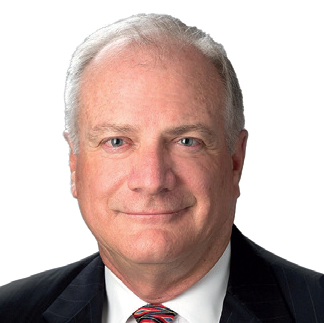 | J. Steven Whisler, 69 Independent Director Nominee Director since 2011 | ||||||||||
Career Highlights nServed as Chairman and Chief Executive Officer of Phelps Dodge Corporation, a mining and manufacturing company, from 2000 to 2007. nServed in various leadership roles with Phelps Dodge, including as President and Chief Operating Officer, beginning in 1976. nServed as director of International Paper Company, a leading producer of fiber-based packaging and pulp, from 2007 to 2021. nServed as a director of US Airways Group, Inc., a holding company for several major commercial airlines, from 2005 to 2011. nServed as a director of Burlington Northern Santa Fe (“BNSF”) Railway from 1995 until its acquisition by Berkshire Hathaway in 2010. Other Leadership Experience During his tenure as Chief Executive Officer of Phelps Dodge Corporation, Mr. Whisler was instrumental in the implementation of its “Zero and Beyond” safety program designed to eliminate workplace injuries and its “Quest for Zero” process-improvement program designed to, among other things, eliminate environmental waste while enhancing product quality. | Key Skills and Qualifications nCorporate Governance Extensive experience in leadership roles with Phelps Dodge Corporation, including as Chairman and Chief Executive Officer, and service on the governance committees of public companies, including as Chair of the Nominating and Corporate Governance Committee of Brunswick Corporation. Served as Presiding Director of International Paper Company. nAccounting/Financial Reporting In-depth knowledge and experience through his service in a financial reporting oversight role as Chief Executive Officer, in combination with his status as a certified public accountant. nTransportation Industry/Supply Chain Management Substantial expertise through his long tenure on the boards of BNSF Railway and US Airways Group, Inc., from which he brings years of railroad and transportation industry knowledge, respectively. nSustainability Proven commitment through leadership of the “Quest for Zero” program at Phelps Dodge Corporation. Other Current Public Company Directorships nBrunswick Corporation | ||||||||||
CSX Committee Assignments and Rationale Audit nOversight of financial statements, compliance with legal and regulatory requirements and risk management processes in his roles as Chief Executive Officer and Chief Operating Officer of Phelps Dodge Corporation. Also, in-depth knowledge of accounting and financial reporting through his status a certified public accountant. nMeets the qualifications of an “Audit Committee Financial Expert” as defined by SEC rules and regulations. Executive nAppointed due to his role as Chair of the Finance Committee. | Finance (Chair) nExperience in various aspects of financial matters, including oversight of capital structure, cash flow and key financial ratios, through his tenure as a chief executive officer and in other senior leadership roles. nIn-depth knowledge of financings, capital markets and investment policies through his many years of service as a director at publicly traded companies. Also, several years of experience serving on the CSX Finance Committee, including as the Chair of such committee. | ||||||||||
| 31 |  | ||||
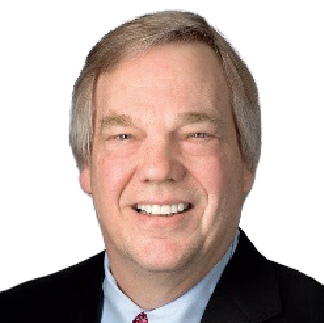 | John J. Zillmer, 68 Independent Director Nominee / Chair of the Board Director since 2017 | ||||||||||
Career Highlights nCurrently serves as Chief Executive Officer of Aramark, a global food, facilities management and uniform services provider, since 2019. nServed as President and Chief Executive Officer of Univar Inc., a global chemical distributor and Fortune 500 company, from 2009 to 2012, where he also served as Executive Chairman. nServed as Chairman and Chief Executive Officer of Allied Waste Industries, from 2005 to 2008, until the merger of Allied Waste with Republic Services, Inc. nDuring his earlier career with Aramark, from 1986 to 2005, served in various senior executive positions, ultimately becoming President of Global Food and Support Service. nServed as a director of Reynolds American, Inc., from 2007 until its acquisition by British American Tobacco in 2017. nServed as a director of Veritiv Corporation, a full-service provider of packaging, publishing and hygiene products and a Fortune 500 company, from 2014 to 2020. nServed as a director of Performance Food Group Company, a leading food distributor and supplier, from 2015 to 2019. | Other Leadership Experience Mr. Zillmer served as a director of Liberty Capital Partners, a private equity and venture capital firm specializing in start-ups, early stage, growth equity buyouts and acquisitions. He serves on the North American advisory board of CVC Partners. Key Skills and Qualifications nBusiness Operations Many years of service as a Chief Executive Officer at multiple public and large private companies, through which he demonstrated proven operating experience and led an operational transformation that has become an industry benchmark. nCorporate Governance Substantial relevant experience in his roles as Chairman and Chief Executive Officer and as a director at several companies. nHuman Capital Management Proven expertise as a leader of large workforces, and deep experience with labor relations, safety and talent management. nTransportation Industry/Supply Chain Management Extensive leadership experience and perspective in industries with substantial logistics and supply chain components. Other Current Public Company Directorships nEcolab Inc. nAramark | ||||||||||
CSX Committee Assignments and Rationale Compensation and Talent Management nHuman capital management expertise gained through his many years of leadership as a chief executive officer at multiple public and large private companies and oversight of various aspects of large workforces, including labor relations, safety and talent management. nYears of experience on compensation committees of public company boards. | Governance and Sustainability nExtensive corporate governance experience and expertise through his roles as a chairman and chief executive officer and as a director at several public companies. nDemonstrated leadership at companies focused on sustainability and also operational transformation. | ||||||||||
Executive nAppointed due to his role as Chair of the Board. | |||||||||||
| 2024 Proxy Statement | 32 | ||||
| NEW | Director Commitments Policy with Numerical Limits for All Directors | ||||
| A director who serves as the CEO of a public company may not serve on more than three public company boards, including the CSX Board. All other directors may not serve on more than five public company boards, including the CSX Board. | |||||
| 33 |  | ||||
| 2024 Proxy Statement | 34 | ||||
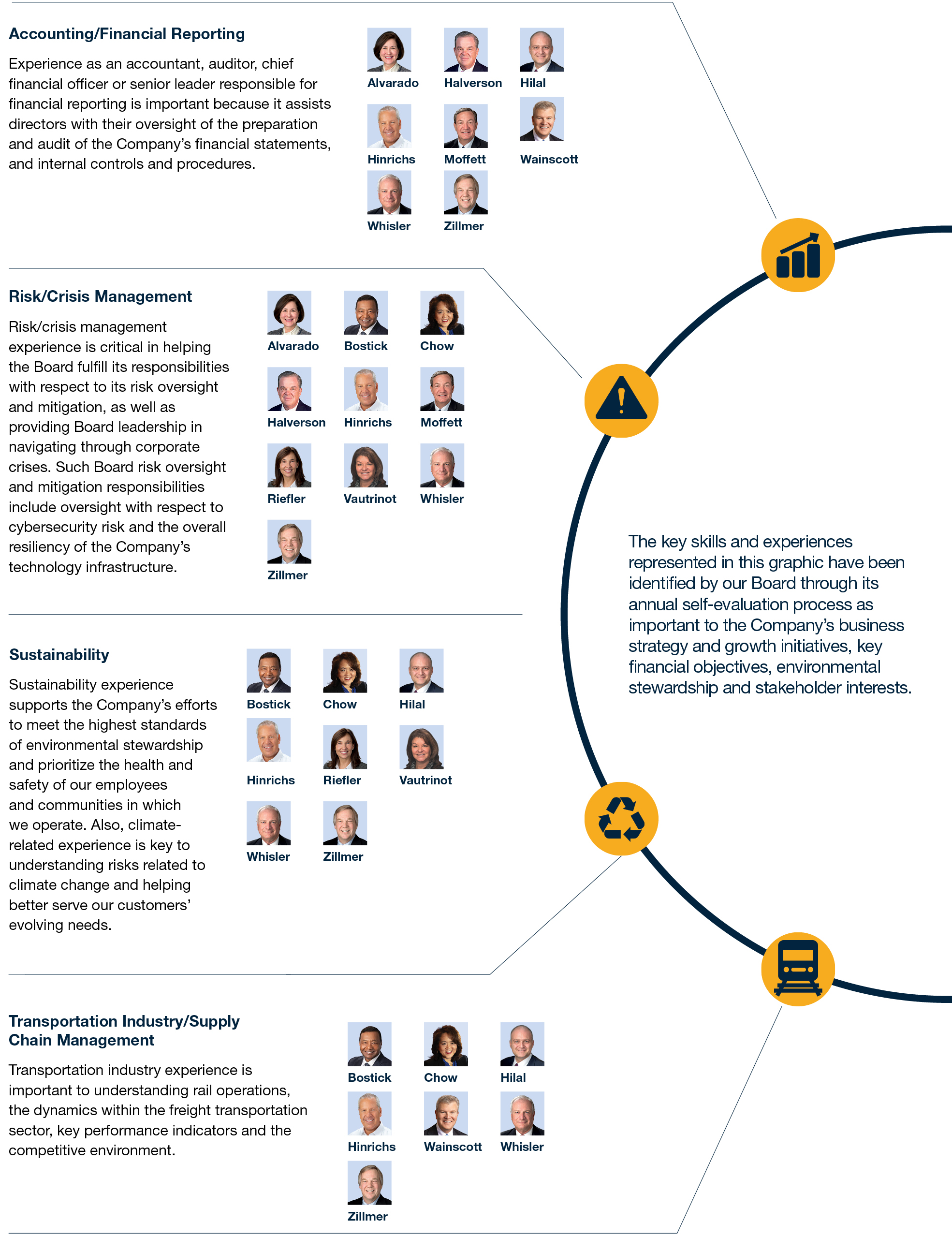
| 35 |  | ||||
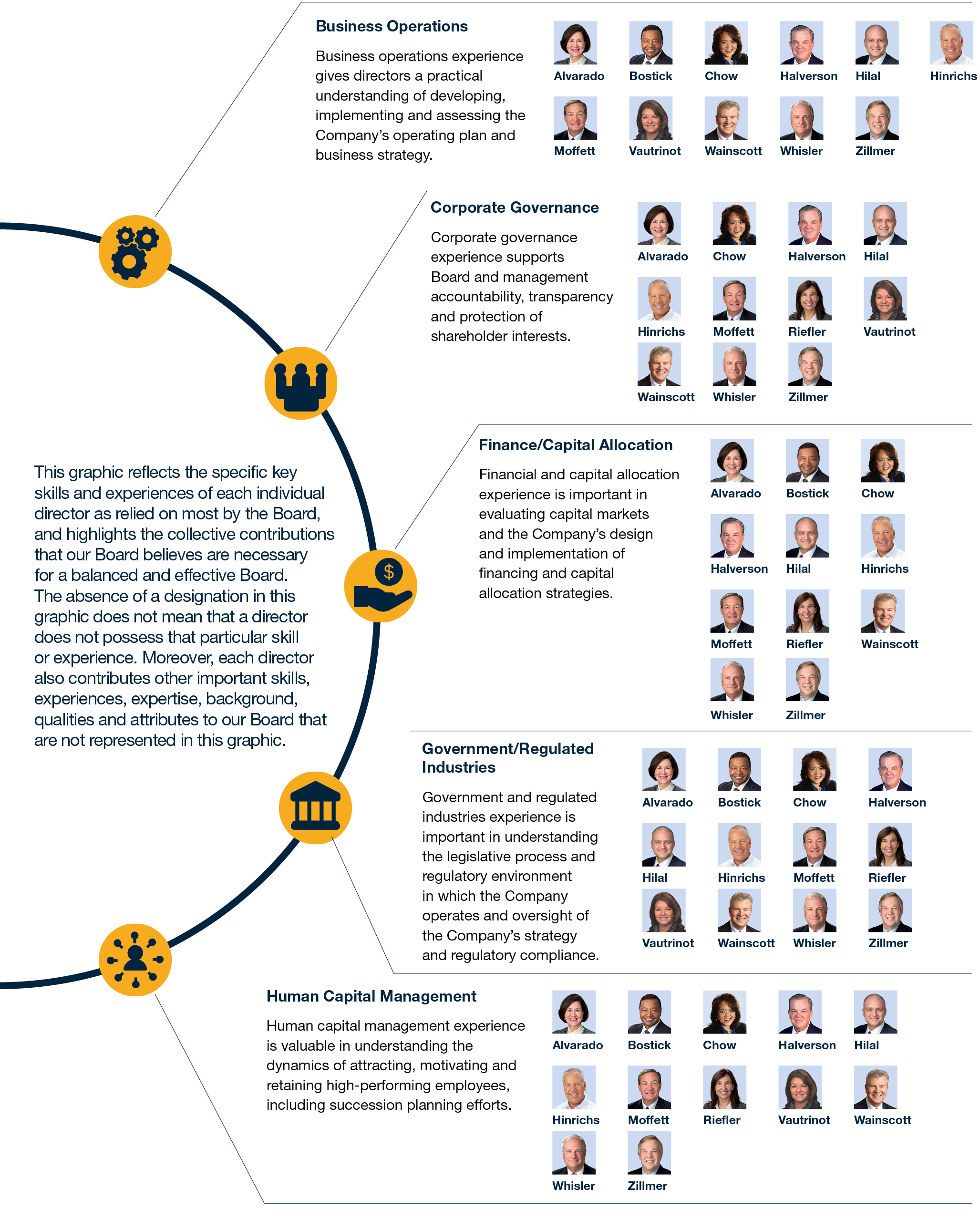
| 2024 Proxy Statement | 36 | ||||
| NEW | “Rooney Rule” in Our Director Qualifications and Selection Policy | ||||
| Individuals who self-identify as female and/or a racial or ethnic minority must be included in the initial pool of candidates when selecting new director nominees. | |||||
 | Five new highly skilled directors have joined our Board | ||||
 | Three directors have left our Board due to retirement | ||||
 | Cybersecurity and Technology Infrastructure | ||||
 | Sustainability | ||||
 | Supply Chain Management | ||||
 | Government/Regulated Industries | ||||
 | Human Capital Management | ||||
| 37 |  | ||||
| TOTAL NUMBER OF DIRECTOR NOMINEES FOR THE 2024 ANNUAL MEETING — 12 | |||||||||||||||||||||||||||||||||||||||||||||||||||||||||||||||||
| Independence | Tenure | Diversity | |||||||||||||||||||||||||||||||||||||||||||||||||||||||||||||||
 |  |  | |||||||||||||||||||||||||||||||||||||||||||||||||||||||||||||||
| Board Diversity Matrix | |||||||||||||||||||||||||||||||||||||||||||||||||||||||||||||||||
As of March 25, 2024 (Total Number of Directors: 11) |  |  |  |  |  |  |  |  |  |  |  | ||||||||||||||||||||||||||||||||||||||||||||||||||||||
| PART I: GENDER IDENTITY | |||||||||||||||||||||||||||||||||||||||||||||||||||||||||||||||||
| Female |  |  |  | ||||||||||||||||||||||||||||||||||||||||||||||||||||||||||||||
| Male |  |  |  |  |  |  |  |  | |||||||||||||||||||||||||||||||||||||||||||||||||||||||||
| PART II: DEMOGRAPHIC BACKGROUND | |||||||||||||||||||||||||||||||||||||||||||||||||||||||||||||||||
| African American or Black |  | ||||||||||||||||||||||||||||||||||||||||||||||||||||||||||||||||
| Asian |  | ||||||||||||||||||||||||||||||||||||||||||||||||||||||||||||||||
| Hispanic or Latinx |  | ||||||||||||||||||||||||||||||||||||||||||||||||||||||||||||||||
| White |  |  |  |  |  |  |  |  |  | ||||||||||||||||||||||||||||||||||||||||||||||||||||||||
| Two or More Races or Ethnicities |  | ||||||||||||||||||||||||||||||||||||||||||||||||||||||||||||||||
As of March 24, 2023 (Total Number of Directors: 11) | |||||||||||||||||||||||||||||||||||||||||||||||||||||||||||||||||
| PART I: GENDER IDENTITY | |||||||||||||||||||||||||||||||||||||||||||||||||||||||||||||||||
| Female |  |  |  | ||||||||||||||||||||||||||||||||||||||||||||||||||||||||||||||
| Male |  |  |  |  |  |  |  |  | |||||||||||||||||||||||||||||||||||||||||||||||||||||||||
| PART II: DEMOGRAPHIC BACKGROUND | |||||||||||||||||||||||||||||||||||||||||||||||||||||||||||||||||
| Hispanic or Latinx |  | ||||||||||||||||||||||||||||||||||||||||||||||||||||||||||||||||
| White |  |  |  |  |  |  |  |  |  | ||||||||||||||||||||||||||||||||||||||||||||||||||||||||
| Two or More Races or Ethnicities |  | ||||||||||||||||||||||||||||||||||||||||||||||||||||||||||||||||
| 2024 Proxy Statement | 38 | ||||
The duties of the Board Chair include: ncalling special meetings of the Board; npresiding at all meetings of the Board and shareholders; napproving the agenda, schedule and meeting materials for meetings of the Board in consultation with the Vice Chair of the Board; nguiding Board discussions and facilitating discussions between the Board and the Company’s management; ninteracting with the Company’s analysts, investors, employees and other key constituencies; and nkeeping the Vice Chair informed, and consulting with the Vice Chair as to material developments regarding CSX. | The duties of the Vice Chair include: nproviding input on the agenda, schedules and meeting materials for meetings of the Board; nassisting in guiding Board discussions and facilitating communication between the Board and the Company’s management; ninteracting with the Company’s analysts, investors, employees and other key constituencies; nperforming the duties of Board Chair in the absence or at the request of the Board Chair; and nkeeping the Board Chair informed, and consulting with the Board Chair, as to material internal and external discussions the Vice Chair has and material developments the Vice Chair learns about the Company and the Board. | |||||||||||||||||||
| 39 |  | ||||
| Audit Committee | Meetings in 2023: 9 | Independent Members:5/5 | |||||||||||||||||||||
| Committee Members | David M. Moffett (Chair) Donna M. Alvarado Steven T. Halverson | Suzanne M. Vautrinot J. Steven Whisler |  | ||||||||||||||||||||
| Compensation and Talent Management Committee | ||||||||||||||||||||||||||
Meetings in 2023: 7 | Independent Members:5/5 | |||||||||||||||||||||||||
| Committee Members | Steven T. Halverson (Chair) Donna M. Alvarado Linda H. Riefler | James L. Wainscott John J. Zillmer |  | |||||||||||||||||||||||
| 2024 Proxy Statement | 40 | ||||
| Finance Committee | Meetings in 2023: 5 | Independent Members: 5/5 | ||||||||||||||||||||||||
| Committee Members | J. Steven Whisler (Chair) Thomas P. Bostick Paul C. Hilal | David M. Moffett James L. Wainscott |  | |||||||||||||||||||||||
| Governance and Sustainability Committee | Meetings in 2023: 5 | Independent Members:5/5 | |||||||||||||||||||||||||||
| Committee Members | Linda H. Riefler (Chair) Thomas P. Bostick Paul C. Hilal | Suzanne M. Vautrinot John J. Zillmer |  | ||||||||||||||||||||||||||
| Executive Committee | Meetings in 2023:0 | Independent Members:6/7 | ||||||||||||||||||||||||
| Committee Members | Joseph R. Hinrichs (Chair) Steven T. Halverson Paul C. Hilal David M. Moffett | Linda H. Riefler J. Steven Whisler John J. Zillmer |  | |||||||||||||||||||||||
| 41 |  | ||||
| Evaluation Process | Evaluation Topics | ||||||||||||||||||||||
 | 1 Evaluation Format | The evaluation process is intended to gather feedback regarding: nBoard composition and structure nCommittee duties and responsibilities nBoard and committee leadership nGroup and individual performance abilities nMeetings and materials, including discussion topics nBoard interaction with management nOversight of strategy and risk nOverall Board vision and functionality | |||||||||||||||||||||
| The evaluation format consisted of: confidential questionnaires designed to evaluate the performance of the Board as a whole and, as per our policy, the performance of each of its committees; and meetings between the Chair of the Governance and Sustainability Committee and each individual director designed to gather additional feedback. | |||||||||||||||||||||||
 | |||||||||||||||||||||||
 | 2 Conduct Evaluation | ||||||||||||||||||||||
| Confidential questionnaires were sent to each director in December 2023. The Chair of the Governance and Sustainability Committee then met with each individual director in early 2024. | |||||||||||||||||||||||
 | |||||||||||||||||||||||
 | 3 Review Feedback | ||||||||||||||||||||||
The feedback received from the confidential questionnaires was compiled on an anonymous basis and provided to the Chair of the Board and the Chair of the Governance and Sustainability Committee, with any committee-level feedback provided to the respective committee Chairs. In accordance with our policy, this feedback was then discussed by the Board and each committee in executive session during their respective meetings in February 2024. The Chair of the Governance and Sustainability Committee also relayed the feedback that she collected from the one-on-one meetings, as appropriate. | |||||||||||||||||||||||
 | |||||||||||||||||||||||
 | 4 Implement Outcome | ||||||||||||||||||||||
| Following the review of evaluation results, the Board considered the tailored ways in which the processes of the Board, and its committees, could be improved. The Board then implemented changes and enhancements to its processes where necessary to ensure the ongoing effectiveness of the Board and each of its committees. | |||||||||||||||||||||||
| 2024 Proxy Statement | 42 | ||||
nAnnual nomination of a slate of directors for election to the Board, a substantial majority and the Chair of which are independent, as that term is defined in the applicable NASDAQ listing standards nMajority voting standard for election of directors and director resignation policy nQualification guidelines for director candidates, which include consideration of diversity, and review of each director’s performance and continuing qualifications for Board membership nSeparation of the roles of Chair of the Board and CEO nAudit Committee, Compensation and Talent Management Committee and Governance and Sustainability Committee comprised solely of independent directors nRegular executive sessions of independent directors nAnnual evaluation of Board performance nBoard access to independent advisors nStock ownership guidelines for directors and officers | nMeaningful limitations on directors’ service on other public company boards nRegular succession planning and effective leadership transitions at the CEO and executive management levels nNo “poison pill” (shareholder rights plan), and adoption of a Policy Regarding Shareholder Rights Plans, establishing parameters around the adoption of any future shareholder rights plan, including the expiration of any such plan within one year of adoption if the plan does not receive shareholder approval or ratification nProxy access for director candidates nominated by shareholders reflecting standard market practices nShareholder rights to call special meetings nPolicy against hedging and pledging of CSX common stock nPay-for-performance alignment nRobust shareholder outreach and engagement program | ||||
| 43 |  | ||||
| 2024 Proxy Statement | 44 | ||||
| ERM Framework and Oversight | ||||||||||||||||||||||||||
| Audit Committee and Board Review | ||||||||||||||||||||||||||
 | ||||||||||||||||||||||||||
| Chief Executive Officer | ||||||||||||||||||||||||||
 | ||||||||||||||||||||||||||
| Executive Risk Committee | ||||||||||||||||||||||||||
 | ||||||||||||||||||||||||||
| Risk Leaders | ||||||||||||||||||||||||||
Operations nSafety nPhysical Infrastructure nPeople & Material Availability | Technology nCyber, Reliability & Resiliency nOperations Technology | Finance nLiquidity nFinancial Reporting | Compliance nCompliance with Laws nRegulatory Environment | |||||||||||||||||||||||
| 45 |  | ||||
| Key Priorities of the CSX Strategic Vision | |||||||||||||||||||||||||||||
 | Sustaining a ONE CSX culture |  | Transforming CSX through technology |  | Generating profitable growth through a better customer experience | ||||||||||||||||||||||||
| 2024 Proxy Statement | 46 | ||||
| ESG Framework and Oversight | CSX has recently undergone an organizational change to reflect the consolidation of several functions. ESG focuses, previously distributed across multiple departments, are now together in a single Strategy organization, led by a senior leader. The Strategy team provides strategic oversight for ESG in the Company. Each of the aforementioned functions has accomplished important work separately, across areas such as fuel strategy, technology and network development, and this change will leverage those individual successes with increased focus and alignment of work to further support our ESG progress. | |||||||||||||
| Board of Directors | ||||||||||||||
 | ||||||||||||||
| Executive and Strategy Teams | ||||||||||||||
| Provide strategic oversight | ||||||||||||||
 | ||||||||||||||
| ESG Team | ||||||||||||||
| Sets strategy, manages and coordinates day-to-day activities, measures and monitors progress against key performance indicators and reviews and applies stakeholder feedback and insights | ||||||||||||||
 | ||||||||||||||
| Business and Functional Leaders | ||||||||||||||
| Support day-to-day activities | ||||||||||||||
Governance and Sustainability Committee nOversees the Company’s sustainability policies, strategies and programs, including around climate-related issues such as carbon emissions reduction initiatives and climate action targets nAssesses the Company’s sustainability performance and reporting, including an annual review of the Company’s ESG Report nOversees the Company’s community affairs activities, including the corporate philanthropy policy nReviews the Company’s political giving policy nEvaluates the performance and effectiveness of the Board nRecommends changes in Board size, composition and committee structure nDevelops, reviews and recommends changes to governance guidelines, policies and procedures | Compensation and Talent Management Committee nReviews and approves the Company’s short-term incentive compensation plan design, which contains safety and fuel efficiency goals, to emphasize ESG performance measures and support the Company’s strategy nOversees the Company’s workforce and human capital management processes, including policies and strategies regarding recruiting and retention, career development and progression, workplace environment and culture and organizational engagement and effectiveness nReviews the results of the Company’s employee engagement surveys nAssesses the plans and processes for promoting DEI, including the Company’s policies and strategies relating to its culture, talent diversity, inclusion and equal employment opportunities nMonitors the Company’s progress on DEI initiatives | |||||||||||||
| 47 |  | ||||
| 2024 Proxy Statement | 48 | ||||
Before the Annual Meeting nStrategize on how to continue incorporating shareholder feedback into our policies and practices nPublish our Annual Report and Proxy Statement nReview and address stakeholder input on our Proxy Statement, including from proxy advisory firm reports nContact and engage with our largest shareholders, seeking feedback on matters presented for their consideration in advance of their votes at the Annual Meeting |  | The Annual Meeting nHost our Annual Meeting and engage with shareholders in attendance at the meeting nReceive the voting results nBegin evaluating and discussing how our shareholders voted on our proposals at the Annual Meeting, noting possible areas for change or improvement | ||||||||||||||||||
 |  | |||||||||||||||||||
Off-Season Outreach and Engagement nContact and engage with our key shareholders to better understand their viewpoints nNote and discuss internally, at various levels of leadership and across departments, significant issues or concerns nReview policy updates from our stakeholders, including proxy advisory firms, and solicit related input on our policies and practices nAssess and incorporate feedback from these contacts |  | After the Annual Meeting nConsequently develop a tailored approach to our upcoming off-season outreach efforts nDesign responsive changes in light of the votes and feedback nReview corporate governance trends, regulatory developments and our corporate governance documents, policies and practices | ||||||||||||||||||
| Our 2023-2024 Shareholder Outreach and Engagement Efforts | ||||||||||||||
Design Overview Through our outreach efforts before the 2023 Annual Meeting, we contacted the governance teams of 15 key shareholders, representing approximately 40.2% of outstanding shares.* We received a declination (generally due to investors having no concerns) from or met with the governance teams of 12 of these shareholders, representing approximately 36.4% of outstanding shares.* Through our off-season outreach efforts after the 2023 Annual Meeting, we contacted the governance teams of 11 of our largest shareholders, representing approximately 36.3% of outstanding shares.* We received feedback from or met with the governance teams of 8 of these shareholders, representing approximately 29.8% of outstanding shares.* | CSX Participants nMembers of our Board of Directors—notably the Chair of the Governance and Sustainability Committee for most meetings, with support from other independent directors in Board leadership positions nOur Chief Legal Officer, Chief Administrative Officer and/or Head of Investor Relations nEmployees from different CSX departments, such as legal, executive compensation, environmental, safety and human resources | |||||||||||||
| 49 |  | ||||
| What We Heard | How We Responded | |||||||
Executive Compensation Program: broad support for our recent changes to the program based on shareholder feedback, as detailed in our 2023 Proxy Statement, with continued questions around certain performance measures in our incentive plans |  | nIncreased the weighting of performance units from 50% to 60% in our long-term incentive plan nContinued commitment to more fulsome and specific disclosure of the performance measures utilized in our incentive plans as reflected in the CD&A section of this Proxy Statement nReplaced operating ratio with operating margin in our short-term incentive compensation plan (effective for the 2024 MICP) to support a growth mindset with focus on continued improvement nIntroduced additional rigor in evaluating an executive’s individual performance in our short-term incentive compensation plan | ||||||
Board Composition, Refreshment and Diversity: questions around our Board refreshment considerations, a desire for more Board gender diversity and positive reactions to our relevant policy change (as highlighted in the column to the right) |  | nCommitted to more fulsome and specific disclosure of our Board refreshment policies and practices as reflected in the “Board Composition, Refreshment and Diversity” section of this Proxy Statement nAdopted a “Rooney Rule” embedded in the revised CSX Corporate Governance Guidelines, which requires individuals who self-identify as female and/or a racial or ethnic minority to be included in the initial pool of candidates when selecting new director nominees nSelected a slate of director nominees that is 33% female for consideration and election at the 2024 Annual Meeting | ||||||
Director Commitments: questions around our director commitments policy, positive reactions to our relevant policy change (as highlighted in the column to the right) and viewpoints on the commitments of our Board Chair |  | nAdopted numerical limits in connection with director commitments embedded in the revised CSX Corporate Governance Guidelines, which provide: a director who serves as the CEO of a public company may not serve on more than three public company boards, including the CSX Board; and all other directors may not serve on more than five public company boards, including the CSX Board nDiscussed in our engagement meetings and disclosed in the “Director Commitments” section of this Proxy Statement our updated rationale for our continued support of our Board Chair | ||||||
Board Oversight: questions around our Board’s oversight of risk—especially as it relates to safety—and strategy |  | nDiscussed in our engagement meetings and enhanced disclosures in the “Board of Directors’ Role in Risk Oversight” section of this Proxy Statement our Board’s policies and practices around risk oversight, with particular focus on safety as reflected in new disclosures under “Safety Oversight” in such section nDiscussed in our engagement meetings and disclosed in the new “Board of Directors’ Role in Strategy Oversight” section of this Proxy Statement our Board’s policies and practices around strategy oversight | ||||||
Environmental and Sustainability Initiatives: general support of our ESG initiatives and progress, and a desire to see more related public information on our sustainability efforts |  | nPublished an enhanced 2022 ESG Report, with more detail on our various strategic initiatives nPublicly announced our ongoing investments in alternative fuels, analytics and tools to drive incremental efficiency, including for our customers | ||||||
Leadership Transitions and Culture: questions on our recent leadership transitions, including our Board’s role in the relevant succession planning efforts, and the impact on culture, with additional questions on our ONE CSX culture progress overall |  | nDiscussed in our engagement meetings and updated disclosures in the “Board of Directors’ Role in Succession Planning” section of this Proxy Statement our recent leadership changes and our Board’s related succession planning polices and practices nDiscussed in our quarterly earnings calls and during industry and investment conferences our leadership’s vision for the Company and executive management actions accordingly, as well as the continued focus and progress on our ongoing cultural transformation | ||||||
| 2024 Proxy Statement | 50 | ||||
| Base Compensation | Incremental Amount Above Base Compensation for Board Leadership Roles | |||||||||||||||||||||||||
 |  |  |  |  | ||||||||||||||||||||||
$130,000 Annual Cash Retainer | $180,000 Annual Equity(1) | $250,000 Non-Executive Chair of the Board Equity(2) | $25,000 Audit Committee Chair Cash Retainer | $20,000 Governance and Sustainability Committee Chair Cash Retainer | ||||||||||||||||||||||
 |  | |||||||||||||||||||||||||
$20,000 Compensation and Talent Management Committee Chair Cash Retainer | $20,000 Finance Committee Chair Cash Retainer | |||||||||||||||||||||||||
| 51 |  | ||||
| Name | Fees Earned or Paid in Cash(1) ($) | Stock Awards(2) ($) | All Other Compensation(3) ($) | Total ($) | ||||||||||
| Donna M. Alvarado | 130,000 | 178,831 | — | 308,831 | ||||||||||
| Thomas P. Bostick | 130,000 | 178,831 | 26,500 | 335,331 | ||||||||||
| Steven T. Halverson | 150,000 | 178,831 | 45,000 | 373,831 | ||||||||||
| Paul C. Hilal | 130,000 | 178,831 | 50,000 | 358,831 | ||||||||||
| David M. Moffett | 155,000 | 178,831 | 50,000 | 383,831 | ||||||||||
| Linda H. Riefler | 150,000 | 178,831 | 25,000 | 353,831 | ||||||||||
| Suzanne M. Vautrinot | 130,000 | 178,831 | — | 308,831 | ||||||||||
| James L. Wainscott | 130,000 | 178,831 | 50,000 | 358,831 | ||||||||||
| J. Steven Whisler | 150,000 | 178,831 | 50,000 | 378,831 | ||||||||||
| John J. Zillmer | 130,000 | 427,175 | — | 557,175 | ||||||||||
| Name | Stock Awards Deferred through the CSX Directors’ Deferred Compensation Plan | ||||
| Donna M. Alvarado | 314,628 | ||||
| Thomas P. Bostick | 10,700 | ||||
| Steven T. Halverson | 311,389 | ||||
| Paul C. Hilal | — | ||||
| David M. Moffett | 53,644 | ||||
| Linda H. Riefler | 16,652 | ||||
| Suzanne M. Vautrinot | 23,690 | ||||
| James L. Wainscott | — | ||||
| J. Steven Whisler | 31,785 | ||||
| John J. Zillmer | — | ||||
| 2024 Proxy Statement | 52 | ||||

| ITEM 2 | Ratification of Independent Registered Public Accounting Firm | ||||||||||
 | The Board unanimously recommends that the shareholders vote FORthis proposal. | ||||||||||
| 53 |  | ||||
| 2022 | 2023 | ||||||||||
Audit Fees: Includes fees associated with the integrated audit, testing internal controls over financial reporting (SOX 404), the reviews of the Company’s quarterly reports on Form 10-Q, statutory audits and other attestation services related to regulatory filings. | $ | 3,643,000 | $ | 3,728,000 | |||||||
Audit-Related Fees: Includes audits of employee benefit plans and subsidiary audits. | $ | 230,000 | $ | 242,000 | |||||||
Tax Fees: Includes fees for tax compliance and tax advice and planning. | $ | — | $ | — | |||||||
All Other Fees: Includes fees for non-audit projects. The Audit Committee has concluded that the services covered under the caption “All Other Fees” are compatible with maintaining EY’s independent status. | $ | 32,000 | $ | 34,000 | |||||||
| 2024 Proxy Statement | 54 | ||||

| Members | Committee Member Since | Attendance at Full Committee Meetings During 2023 | ||||||
David M. Moffett, Chair | May 2015 | 9/9 | ||||||
| Donna M. Alvarado | August 2006 | 9/9 | ||||||
| Steven T. Halverson | May 2009 | 9/9 | ||||||
| Suzanne M. Vautrinot | December 2019 | 8/9 | ||||||
| J. Steven Whisler | May 2011 | 9/9 | ||||||
| 55 |  | ||||
 | 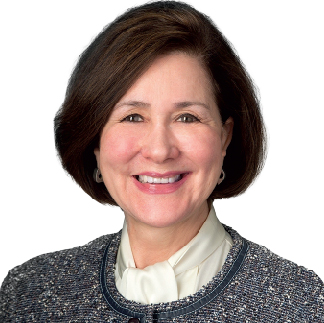 |  |  |  | ||||||||||||||||||||||
 |  |  |  |  | ||||||||||||||||||||||
David M. Moffett, Chair February 13, 2024 | Donna M. Alvarado | Steven T. Halverson | Suzanne M. Vautrinot | J. Steven Whisler | ||||||||||||||||||||||
| 2024 Proxy Statement | 56 | ||||

| ITEM 3 | Advisory (Non-Binding) Vote to Approve the Compensation of CSX’s Named Executive Officers | ||||||||||
 | The Board unanimously recommends that the shareholders vote FOR this proposal. | ||||||||||
| 57 |  | ||||

| 2024 Proxy Statement | 58 | ||||
| 59 |  | ||||

Visit our Annual Meeting Website
 |  |  | 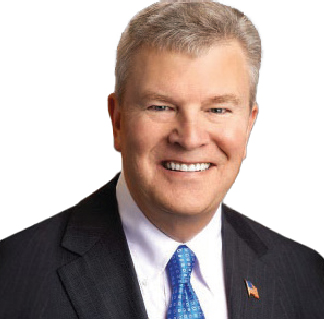 | 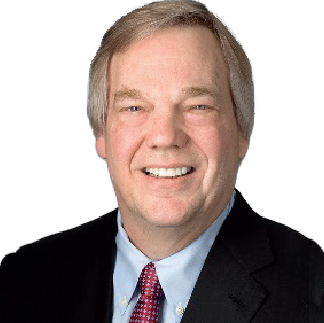 | ||||||||||||||||||||||
Attend our Annual Meeting of Shareholders
Eligibility to Vote
You can vote if you were a shareholder of record at the close of business on March 14, 2016, which is the record date for the Annual Meeting.
Voting Matters and Board Recommendation
 |
 |  |  |  | ||||||||||||||||||||||
March 25, 2024 | Donna M. Alvarado | Linda H. Riefler | James L. Wainscott | John J. Zillmer |
| 2024 Proxy Statement | 60 | ||||

| Table of | |||||
| |||||
|
| ||||
|
| ||||
How to Cast Your Vote
|
|
|
| ||||
|
| ||||||
|
| ||||||
|
| ||||||
2016 Proxy Statement6
Board Nominees
|
|
|
| ||||||
| |||||||||
|
|
| |||||||
|
|
| |||||||
|
|
| |||||||
|
|
| |||||||
|
|
| |||||||
|
|
| |||||||
|
|
| |||||||
|
|
| |||||||
|
|
| |||||||
|
|
| |||||||
|
|
| |||||||
|
|
| |||||||
| |||||
Directors elected annually
| 61 |
| ||||
|
| ||||
|
| ||||
|
| ||||
|
| ||||
|
| ||||
|
| ||||
|
| ||||
|
| ||||
|
 | ||||
Compensation Discussion and Analysis | Key Business Highlights for 2015
CSX’sThroughout 2023, CSX demonstrated reliable, industry-leading network performance, which allowed the Company to deliver solid operational and financial results. CSX shipped 6.1 million units of freight in 2015 illustrated2023 and delivered operating income of $5.6 billion, an 8% decline from the underlying strengthprior year, and earnings of $1.85 per share, a decrease of 5% compared to 2022. While Merchandise and Coal volumes demonstrated solid growth for the year, CSX was affected by a decline in intermodal storage revenue, reduced fuel surcharge, lower global benchmark coal prices and a decrease in intermodal volumes. Operating income last year also included $144 million in gains from the property sale agreement with the Commonwealth of Virginia.
| Operating Income | ||
| Dollars in Millions | ||
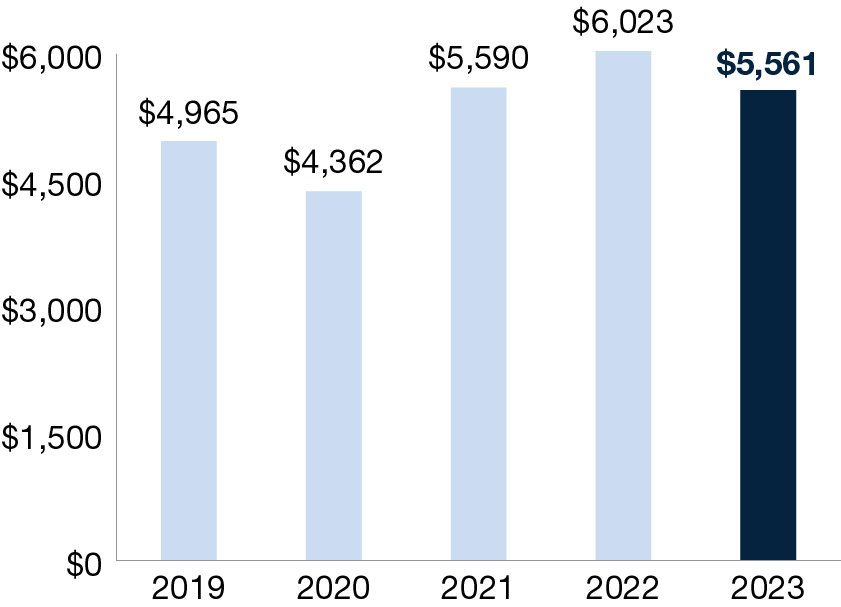
| Fully-Diluted Earnings Per Share | ||
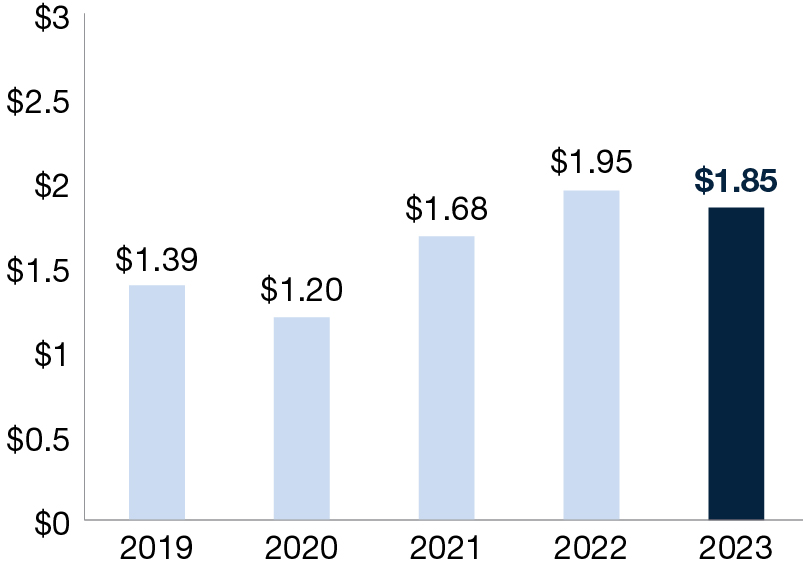
 Improved safety performance Positive trends in both accident and injury rates led to better, safer performance compared to 2022 |  Consistent, industry-leading service metrics Our customers are benefiting from quicker cycle times and increased productivity |  Merchandise volume growth Business wins and truck conversions drove volume growth ahead of industrial production | ||||||||||||
 Effective alignment between commercial and operational teams Sales and operations are working hand-in-hand to improve the customer experience |  Tangible cultural transformation Our employees see and feel the progress made towards greater transparency, trust and engagement via employee survey results | |||||||
| 2024 Proxy Statement | 62 | ||||
| Shareholder Feedback | Action Taken by the Committee | |||||||
| Continued questions around certain performance measures in our incentive plans, including on how these measures motivate growth |  | •Increased the weighting of performance units from 50% to 60% in our long-term incentive plan | ||||||
 | •Committed to more fulsome and specific disclosure of our incentive plans performance measures, particularly CSX Cash Earnings, or CCE, now called Economic Profit •Committed to monitoring the appropriateness of Economic Profit (formerly called CSX Cash Earnings or CCE) in driving strong financial results in achieving sustainable growth | |||||||
 | •In 2024, replaced operating ratio with operating margin in our short-term incentive compensation plan to support a growth mindset with focus on continued improvement | |||||||
 | •Introduced additional rigor in evaluating an executive’s individual performance in our short-term incentive compensation plan to ensure that it evaluates truly exceptional achievement against pre-established performance goals set at the beginning of the year, as well as other outstanding accomplishments that might impact shareholder value creation, our customers and employee culture | |||||||
| 63 |  | ||||
 |  | |||||||||||||
CSX Executive Compensation Practices Include: nStrong pay-for-performance alignment nSignificant percentage of executive compensation that is performance based nPerformance measures with stretch targets that are highly correlated to shareholder value creation nShort-term incentive compensation plan that contains financial, safety, operational and environmental goals nInclusion of multiple financial measures in short and long-term incentive plans nUse of payout caps on short and long-term incentives nRobust performance management and goal setting processes for the CEO and Executive Vice Presidents nEngagement of an independent compensation consultant to review our executive compensation program and perform an annual risk assessment nSignificant share ownership requirements for Vice President-level executives and above and non-employee directors nDouble trigger in change-of-control agreements for severance payouts (i.e., change of control plus termination) nClawback provisions in short and long-term incentive plans based on a financial restatement or behavioral triggers such as dishonesty, fraud, theft or misconduct, beyond those required under SEC and NASDAQ rules nAnnual “Say-on-Pay” vote | CSX Executive Compensation Practices Do NOT Include / Allow: nRe-pricing of underwater options without shareholder approval nExcise tax gross-ups nRecycling of shares withheld for taxes or exercise price nHedging or pledging of CSX common stock nVesting of equity awards with less than a one-year period nEncouraging unreasonable risk taking | |||||||||||||
| 2024 Proxy Statement | 64 | ||||
nAir Products and Chemicals, Inc. (NYSE: APD) nCanadian National Railway Company (NYSE: CNI) nCanadian Pacific Kansas City Limited (NYSE: CP) nEaton Corporation (NYSE: ETN) nEcolab Inc. (NYSE: ECL) nEmerson Electric Co. (NYSE: EMR) nFedEx Corporation (NYSE: FDX) nFortive Corporation (NYSE: FTV) nIllinois Tool Works Inc. (NYSE: ITW) nNorfolk Southern Corporation (NYSE: NSC) | nParker-Hannifin Corporation (NYSE: PH) nPPG Industries, Inc. (NYSE: PPG) nRepublic Services, Inc. (NYSE: RSG) nSchlumberger Limited (NYSE: SLB) nThe Williams Companies, Inc. (NYSE: WMB) nTrane Technologies plc (NYSE: TT) nUnion Pacific Corporation (NYSE: UNP) nUnited Parcel Service, Inc. (NYSE: UPS) nWabtec Corporation (NYSE: WAB) nWaste Management, Inc. (NYSE: WM) | ||||||||||
| Market Capitalization as of December 31, 2023 (in millions) | ||
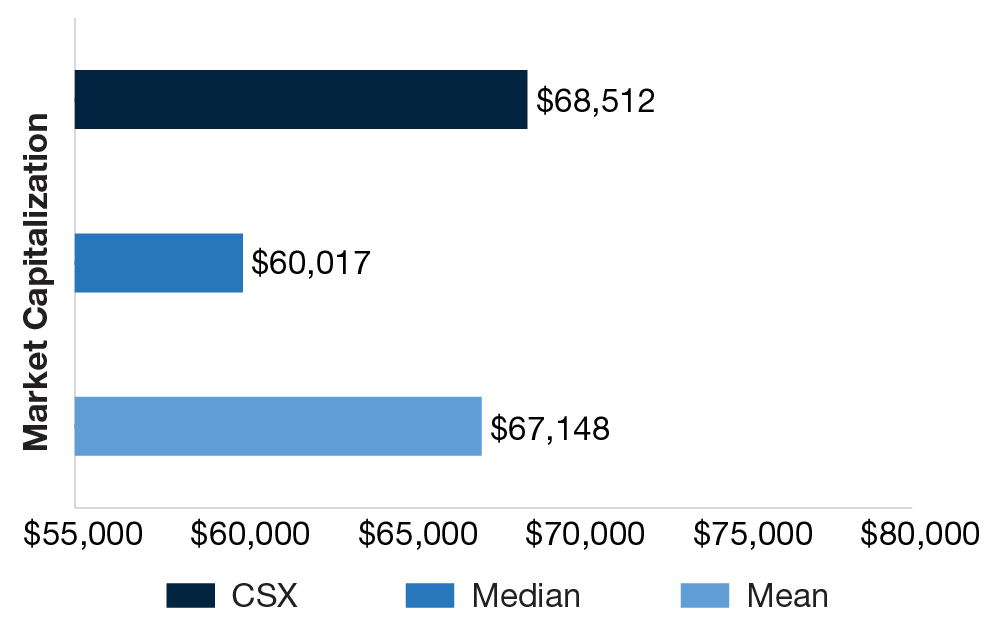
| Revenue as of Fiscal Year-End 2023 (in millions) | ||
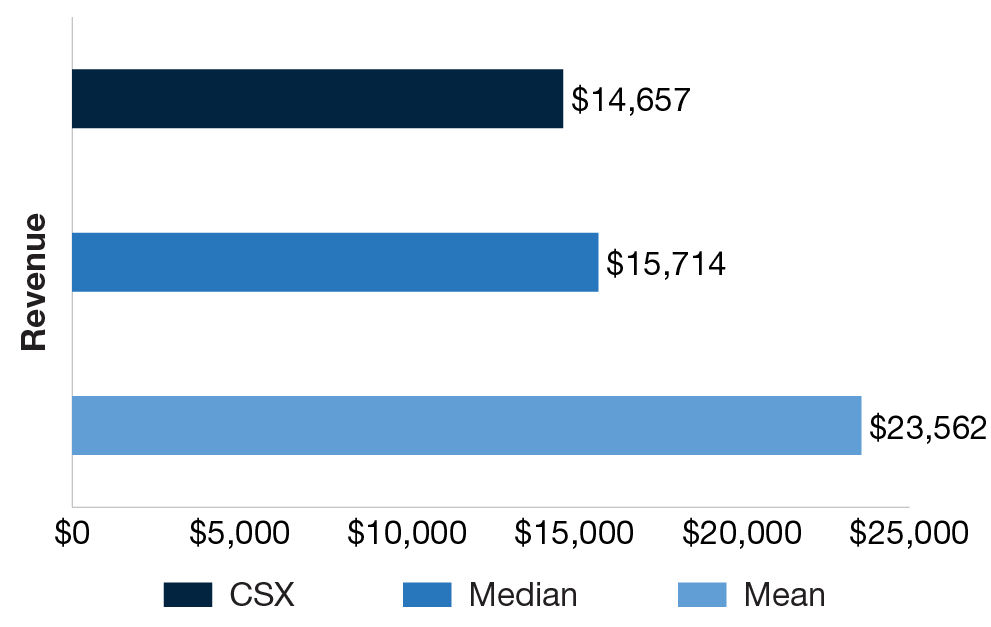
Stock Performance Graph
| 65 |  | ||||
The Consultant’s Role and Responsibilities nAnalyze competitive practices, financial information, total shareholder return and other performance data in relation to the Company’s executive compensation philosophy and program nReview compensation governance practices, including by performing an annual risk assessment related to the Company’s executive compensation program nReview performance targets and assess performance against targets for the Company’s short and long-term incentive plans to determine alignment and ensure they drive appropriate behavior nBenchmark executive and director compensation nAssess short and long-term incentive plan design in the context of the Company’s business goals, shareholder value creation, employee engagement and market and governance practices nProvide regular updates to the Committee with respect to current trends and developments in legislative and regulatory activity, executive compensation program design and governance nAssist in the development of the executive compensation comparator group each year nConsult with the Committee Chair to plan and prioritize Committee agenda items | ||||||||
| 2024 Proxy Statement | 66 | ||||
Executive Compensation Program Features that Serve to Mitigate Risk nCompensation is appropriately balanced between: (i) fixed and variable compensation; and (ii) short and long-term incentives nSignificant weighting towards long-term incentive compensation discourages short-term risk taking nLong-term incentive plans utilize performance units, non-qualified stock options and restricted stock units with overlapping vesting periods for outstanding plan cycles nPerformance measures for short and long-term incentive awards reinforce the Company’s business goals nClawback provisions in short and long-term incentive plans based on a financial restatement or behavioral triggers such as dishonesty, fraud, theft or misconduct, beyond those required under SEC and NASDAQ rules nFinancial performance measures have a strong correlation to long-term shareholder value creation nMultiple financial performance measures in the short and long-term incentive plans provide a balanced approach and limit specific focus and behaviors to enhance results related to a single metric nShort and long-term incentive awards include maximum payout caps nInternal controls over the measurement and calculation of performance measures protect data integrity nShare ownership guidelines reinforce alignment of executive and shareholder interests | ||||||||
| 67 |  | ||||

| Pay Element | Form | Performance | Objective | ||||||||
Salary  | Cash | Based on assessment of each NEO’s scope of responsibilities, individual performance, experience and contribution and market data | Recruit, engage and retain talented, high-performing executives | ||||||||
| At-Risk Compensation | |||||||||||
Short-Term Incentives  | Cash | The Company’s performance measures for the 2023 Management Incentive Compensation Plan (“MICP”) and weightings at target are: nOperating Income (30%) nOperating Ratio (30%) nInitiative-based Revenue Growth (10%) nSafety (10%) – Personal Injury and Train Accident Rates nFuel Efficiency (10%) nTrip Plan Compliance (10%) Under the MICP, there is an individual performance modifier, which gives discretion to reward extraordinary performance. For the CEO and each of the Executive Vice Presidents, the MICP provides up to a 1.5x modifier, with a maximum total payout of up to 250% of the NEO’s Target Incentive Opportunity. | Motivate and reward executives and eligible employees for driving Company performance within a one-year period | ||||||||
Long-Term Incentives  | nPerformance Units (60%) nNon-qualified Stock Options (20%) nRestricted Stock Units (20%) | The performance measures and weightings for the performance units issued as part of the 2023–2025 Long-Term Incentive Plan (“LTIP”) are: nAverage Annual Operating Income Growth Rate (50%) nEconomic Profit (formerly called CSX Cash Earnings or “CCE”) (50%) Performance Units are subject to a formulaic linear Relative Total Shareholder Return modifier of +/- 25% up to 250% maximum payout allowed should the financial metrics achieve maximum performance Non-qualified Stock Options vest ratably over three years and only have value if the price of CSX’s common stock increases after grant Restricted Stock Units vest ratably over three years | Motivate and reward executives to drive strategic initiatives that create shareholder value over a three-year period | ||||||||
| 2024 Proxy Statement | 68 | ||||
| 2023 Incentive Plan Award | Performance Metric | Metric Weight | How Metric Supports Sustainable Growth | ||||||||
| 2023 Short-Term Incentive Plan (MICP) | Operating Income | 30% | nUsed to gauge the general health of the Company and to quantify operating profit margin nAligns with the Company’s objective of profitable growth | ||||||||
| Operating Ratio | 30% | nKey indicator of the Company’s efficiency nEncourages the Company to deliver results that grow the business while optimizing assets | |||||||||
| Initiative-based Revenue Growth | 10% | nMeasures the Company’s ability to gain additional business on the CSX network through growth with new and existing customers nDirectly supports profitable growth by driving operating income | |||||||||
| Safety | 10% | nReinforces the critical importance of ensuring employees’ personal safety and the safety of fellow railroaders and upholding our commitment to protect customers’ freight and the communities in which we operate nConsists of FRA Personal Injury Rate (5%) and FRA Train Accident Rate (5%) | |||||||||
| Trip Plan Compliance | 10% | nEnsures the Company successfully executes the service plan for customers’ shipments based on our commitments nFocuses on reliable and accurate service for customers | |||||||||
| Fuel Efficiency | 10% | nIndicates the Company’s fuel productivity over the distance traveled nSupports environmental stewardship by reducing carbon emissions | |||||||||
| 2023-2025 Long-Term Incentive Plan (LTIP) | Average Annual Operating Income Growth Rate | 50% | nMeasures the average increase in operating income for each year of the LTIP cycle nAligns with the Company’s objective of profitable growth | ||||||||
| Economic Profit (CCE) | 50% | nMeasures the Company’s ability to grow operating income while remaining focused on cost control and asset utilization nEncourages investments in growth projects that earn more than an expected rate of return | |||||||||
| Relative Total Shareholder Return | Modifier of +/- 25% up to 250% maximum payout | nDesigned to appropriately align NEO payouts with share price performance relative to the Standard and Poor’s 500 (“S&P 500”) Industrials Index companies | |||||||||
2015
| 69 |  | ||||
Information regardingThe Company’s executive compensation philosophy requires that a substantial portion of total compensation be at-risk and consist of performance-based incentives that are linked to CSX’s financial and operating results. In addition, the Committee strives to provide an appropriate balance between short and long-term incentive compensation. The mix between fixed and variable or at-risk compensation and short and long-term incentive compensation is designed to align the NEOs’ financial incentives with shareholder interests. The target compensation mix for the Chief Executive Officer (“CEO”) and each of the NEOs is shown below. In 2023, the percentage of Mr. Hinrichs’ total target compensation that was variable and at-risk was 75% and the average for the other NEOs was approximately 70%. The percentage of variable or at-risk compensation is calculated as the sum of the target amount of short-term incentives, performance units granted and stock options granted divided by the total target compensation.
| Joseph R. Hinrichs | Sean R. Pelkey | Kevin S. Boone | ||||||||||||||||||
| President and Chief Executive Officer | Executive Vice President and Chief Financial Officer | Executive Vice President and Chief Commercial Officer | ||||||||||||||||||
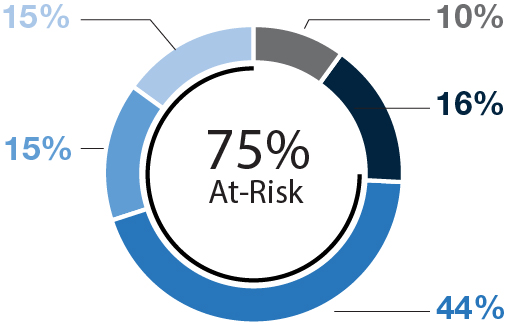 | 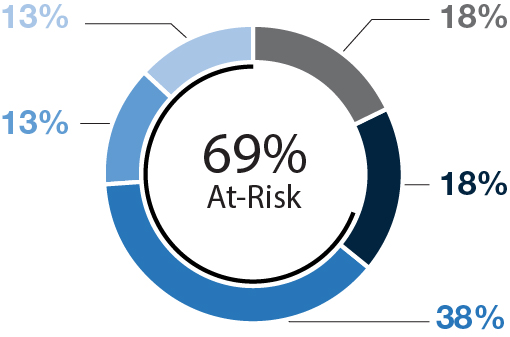 | 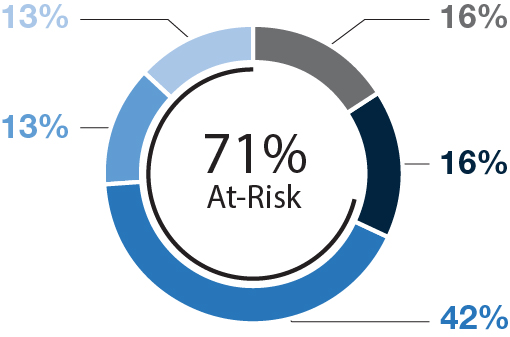 | ||||||||||||||||||
| Stephen Fortune | Nathan D. Goldman | Jamie J. Boychuk | ||||||||||||||||||
Executive Vice President and Chief Digital & Technology Officer | Executive Vice President, Chief Legal Officer and Corporate Secretary | Former Executive Vice President – Operations | ||||||||||||||||||
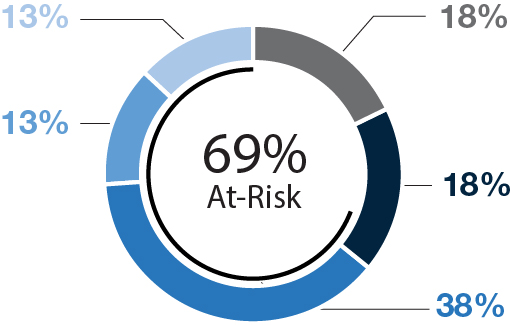 | 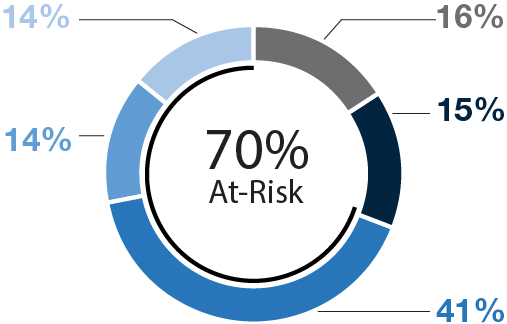 | 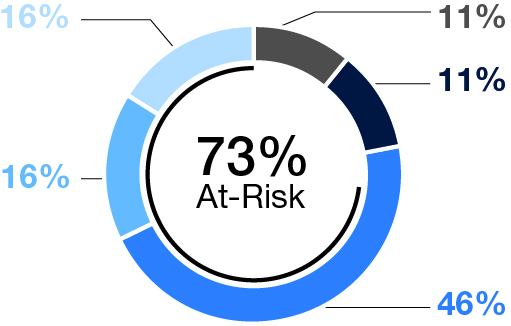 | ||||||||||||||||||
 | Salary |  | Cash-based Short-term Incentives |  | Performance Units | ||||||||||||
 | Non-qualified Stock Options |  | Restricted Stock Units | ||||||||
| 2024 Proxy Statement | 70 | ||||
| 71 |  | ||||
 | Joseph R. Hinrichs, 57 President and Chief Executive Officer Tenure 1.5 years |  | Sean R. Pelkey, 44 Executive Vice President and Chief Financial Officer Tenure 18.7 years | |||||||||||||||||||||||||||||
| Responsibilities | Responsibilities | |||||||||||||||||||||||||||||||
| Mr. Hinrichs joined CSX in September 2022 as President and Chief Executive Officer. Mr. Hinrichs has more than 30 years of experience in the global automotive, manufacturing operations and energy sectors. Prior to joining CSX, he served as President of Ford Motor Company’s automotive business. He began his career with General Motors in 1989 as an engineer and quickly ascended into management. Between management roles at Ford and General Motors, Mr. Hinrichs oversaw investments in small entrepreneurial businesses for Ryan Enterprises, a private equity firm. Mr. Hinrichs brings to CSX a commitment to operational excellence, experience building global businesses through investment in people and culture and a deep understanding of balancing safety and efficiency in a complex industry. | Mr. Pelkey was named Vice President and Acting Chief Financial Officer in June 2021, and promoted to Executive Vice President and Chief Financial Officer in January 2022. In this role, he is responsible for all financial aspects of the Company’s business, including financial and economic analysis, accounting, tax, treasury and purchasing activities. Mr. Pelkey has more than 18 years of experience in finance, investor relations and financial planning. Since joining CSX in 2005, he has held a variety of finance management roles, including Vice President – Finance and Assistant Vice President of Capital Markets, as well as several director and managerial roles in investor relations, financial planning and IT finance. | |||||||||||||||||||||||||||||||
| 2023 Accomplishments | 2023 Accomplishments | |||||||||||||||||||||||||||||||
nAdvanced ONE CSX culture, including implementing recurring employee engagement surveys, holding all-employee quarterly town halls, supporting Business Resource Groups (BRGs) and increasing employee participation in community and CSX-sponsored events. Results include an increase in the CSX employee trust score, Glassdoor improved rankings and being named one of America’s Greatest Workplaces for Diversity by Newsweek and Best Place to Work for Disability Inclusion by Disability:IN. nDrove strategies to create long-term and profitable business, including merchandise, intermodal initiatives, TRANSFLO and completion of the integration of Pan Am. nDrove operational improvements including Total Trip Plan Compliance YoY improvement of 20%, Network Velocity YoY improvement of 12%, Network Dwell YoY improvement of 17% and Customer Switch Performance YoY improvement of 12%. nLowest number of personal injuries among the Class I railroads but reaffirmed the need to further enhance safety training and diligence for all employees in light of three employee fatalities in 2023. nSuccessfully negotiated leading edge paid sick time benefits policies for employees who are covered under a collectively bargained agreement. | nDelivered $220 million of direct value across departments, including tax and insurance program efficiencies, interest rate swaps and procurement activities on goods and services. nFacilitated a working team towards the production of hydrogen locomotives at our Huntington location and secured a deal to operate battery-electric locomotives at our Port of Baltimore location. nRepositioned cash during the regional banking scrutiny to mitigate CSX risk, along with extending the Company’s credit facility for another five years to ensure access to liquidity if needed during highly disruptive events. nHelped foster a more cohesive ONE CSX culture within the Finance organization and the broader Company through a series of strategic grassroots initiatives aimed at increasing collaboration, employee development and community involvement. | |||||||||||||||||||||||||||||||
| 2023 Actual Compensation | 2023 Actual Compensation | |||||||||||||||||||||||||||||||
 | 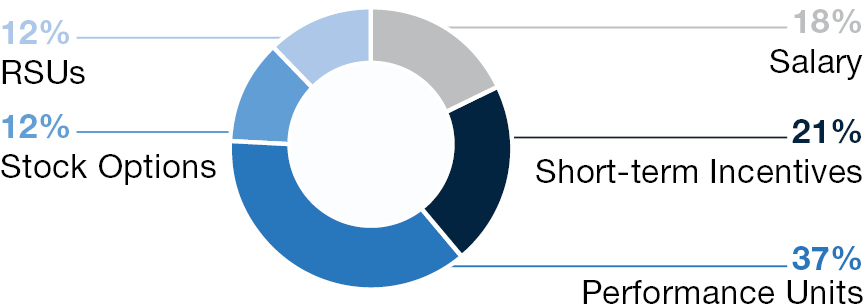 | |||||||||||||||||||||||||||||||
| Base Salary: | $ | 1,400,000 | Base Salary: | $ | 660,000 | |||||||||||||||||||||||||||
| Annual Bonus Earned: | $ | 2,415,000 | Annual Bonus Earned: | $ | 759,000 | |||||||||||||||||||||||||||
| Long-Term Incentives Granted: | $ | 10,000,035 | Long-Term Incentives Granted: | $ | 2,325,019 | |||||||||||||||||||||||||||
| Total Actual Compensation: | $ | 13,815,035 | Total Actual Compensation: | $ | 3,744,019 | |||||||||||||||||||||||||||
| 60% of 2023 LTIs granted were performance based | 60% of 2023 LTIs granted were performance based | |||||||||||||||||||||||||||||||
| 2024 Proxy Statement | 72 | ||||
 | Kevin S. Boone, 47 Executive Vice President and Chief Commercial Officer Tenure 6.5 years |  | Stephen Fortune, 54 Executive Vice President and Chief Digital & Technology Officer Tenure 2.0 years | |||||||||||||||||||||||||||||
| Responsibilities | Responsibilities | |||||||||||||||||||||||||||||||
| Mr. Boone has served as Executive Vice President and Chief Commercial Officer since June 2021. In this role, he is responsible for developing and implementing the Company’s commercial strategy. Mr. Boone previously served as Executive Vice President and Chief Financial Officer from October 2019 until June 2021. Mr. Boone has more than 20 years of experience in finance, accounting, mergers and acquisitions and transportation performance analysis. He joined CSX in September 2017, as Vice President – Corporate Affairs, and was later named Vice President – Sales & Marketing leading research and data analysis to advance growth strategies for CSX. | Mr. Fortune joined CSX in April 2022 as Executive Vice President and Chief Digital & Technology Officer. Mr. Fortune is responsible for leading CSX’s technology strategy development and implementation and supporting business growth through innovative digital solutions, as well as overseeing all aspects of the Company’s information technology systems operations. Mr. Fortune brings decades of experience as a corporate technology leader. Prior to CSX, he served 30 years at BP, most recently as Chief Information Officer of the global BP Group. He began his BP career as a chemical and process engineer before moving into operations management and transitioning into information technology in 2003. | |||||||||||||||||||||||||||||||
| 2023 Accomplishments | 2023 Accomplishments | |||||||||||||||||||||||||||||||
nExceeded total revenue plan, including growing line-haul revenue by almost $500 million, despite international headwinds impacting the Company’s export coal rates and international intermodal volume. nSignificant wins across multiple lines of business, including TRANSFLO, Westrock, LyondellBasell, multiple LPG customers, multiple automotive manufacturers and domestic intermodal partners. nTDSI AAR audit scores continue to remain high, including leading the industry at destination ramps with an almost perfect score. nFocused on leadership and skill development of the Sales and Marketing organization and support of organizational ONE CSX initiatives. | nRealigned strategy for the modernization of the CSX technology vision, placing the employee and customer at its core, and guided by the central focus on safety, which includes the five-year effort to replace the mainframe-based Core Dispatch system and updated tablets for the Company’s train and engine employees. nIn partnership with Sales and Marketing, transformed the ShipCSX tool with new tools that make it easier for customers to do business with CSX, in addition to introducing a user-friendly coal reservation system, Intermodal Time on Terminal tool, tracking Car Order Fill, and Automotive Supply performance tools. nFocused on proactive measures to increase cybersecurity awareness within CSX, including the implementation of robust security measures and threat partner mitigation. nLaunched the Train and Engine Portal and upgraded technological devices, significantly improving operational efficiency and creating a more collaborative ONE CSX employee work experience. | |||||||||||||||||||||||||||||||
| 2023 Actual Compensation | 2023 Actual Compensation | |||||||||||||||||||||||||||||||
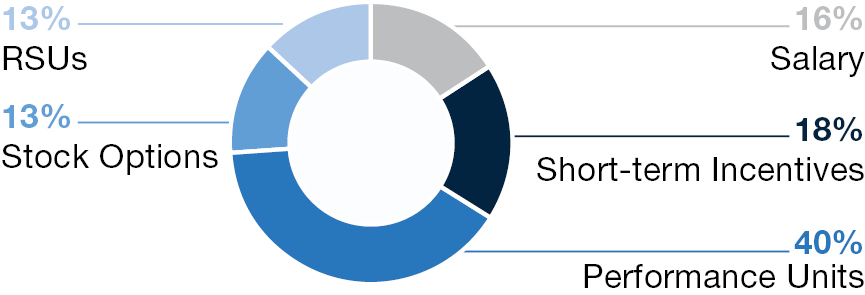 | 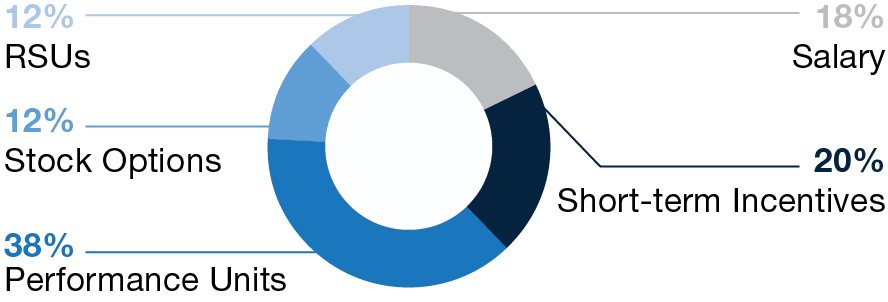 | |||||||||||||||||||||||||||||||
| Base Salary: | $ | 725,000 | Base Salary: | $ | 650,000 | |||||||||||||||||||||||||||
| Annual Bonus Earned: | $ | 833,750 | Annual Bonus Earned: | $ | 747,500 | |||||||||||||||||||||||||||
| Long-Term Incentives Granted: | $ | 3,150,014 | Long-Term Incentives Granted: | $ | 2,325,019 | |||||||||||||||||||||||||||
| Total Actual Compensation: | $ | 4,708,764 | Total Actual Compensation: | $ | 3,722,519 | |||||||||||||||||||||||||||
| 60% of 2023 LTIs were performance based | 60% of 2023 LTIs granted were performance based | |||||||||||||||||||||||||||||||
| 73 |  | ||||
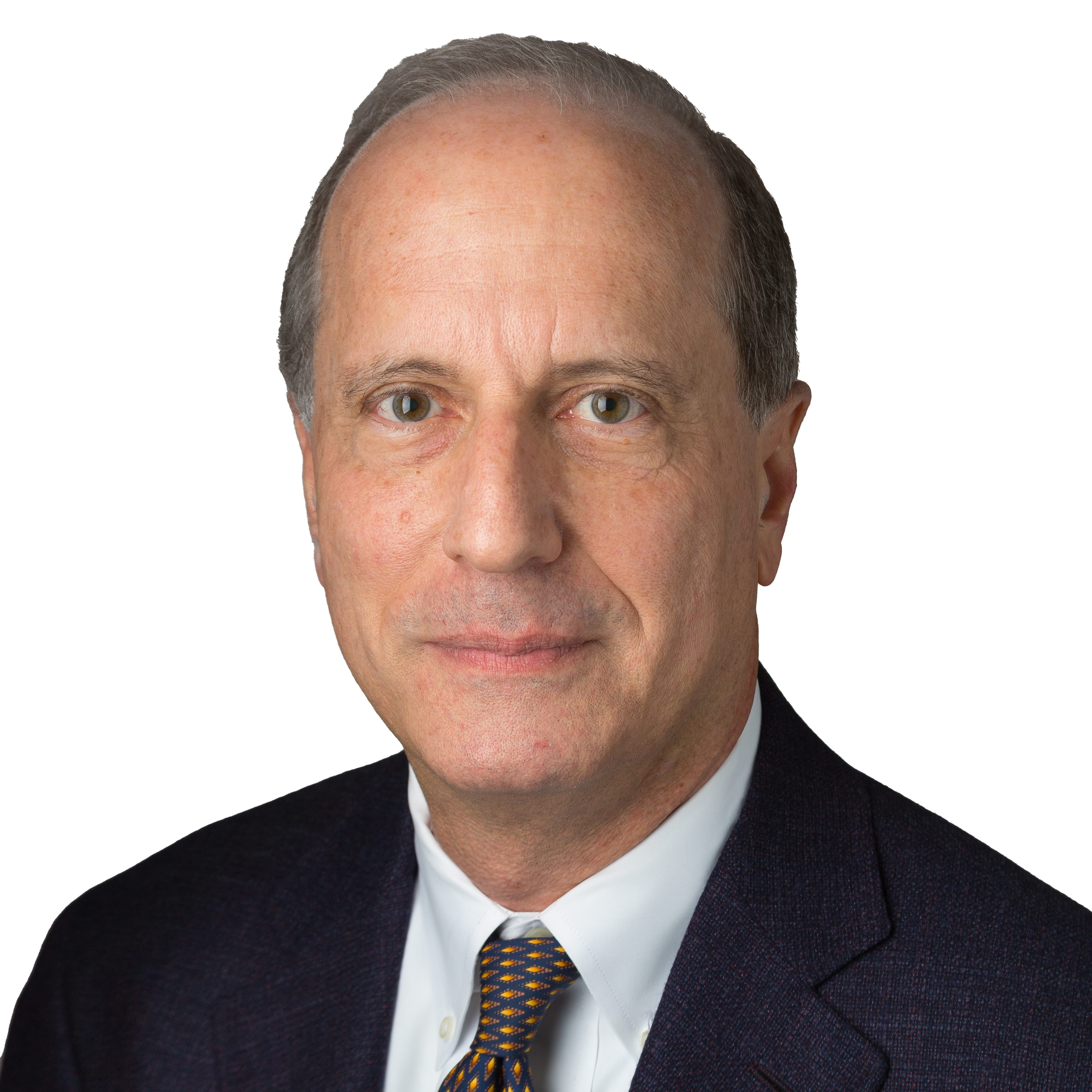 | Nathan D. Goldman, 66 Executive Vice President, Chief Legal Officer and Corporate Secretary Tenure 20.7 years | |||||||||||||||||||||||||||||||
| Responsibilities | ||||||||||||||||||||||||||||||||
| Mr. Goldman has served as Executive Vice President, Chief Legal Officer and Corporate Secretary of CSX since November 2017. In this role, he directs the Company’s legal affairs, government relations, risk management, public safety, environmental and internal audit functions. Mr. Goldman has previously served as Vice President of Risk Compliance and General Counsel and has overseen work in compliance, risk management and safety programs. | ||||||||||||||||||||||||||||||||
| 2023 Accomplishments | ||||||||||||||||||||||||||||||||
Jamie J. Boychuk, 46 Former Executive Vice President – Operations Tenure 6.2 years | ||||||||||||||||||||||||||||||||
nSupported development of key sustainability initiatives and ESG reporting, including biodiesel testing, hydrogen locomotive design and build and securing a grant for electric locomotives. nPartnered with communities to win an industry-leading $2.6 billion in public funding for projects which will increase safety, capacity, connectivity and efficiency. nIncreased first responders training and outreach to touch a total of 4,800 external partners during over 70 events to ensure readiness in the event of a community incident. nEngaged in a number of internal and external initiatives and programs targeted at strengthening ONE CSX communities. | ||||||||||||||||||||||||||||||||
| Responsibilities | ||||||||||||||||||||||||||||||||
| Mr. Boychuk was involuntarily separated without cause from his position as Executive Vice President – Operations of CSX Transportation, Inc. (“CSXT”) in August 2023. | ||||||||||||||||||||||||||||||||
| 2023 Actual Compensation | 2023 Actual Compensation | |||||||||||||||||||||||||||||||
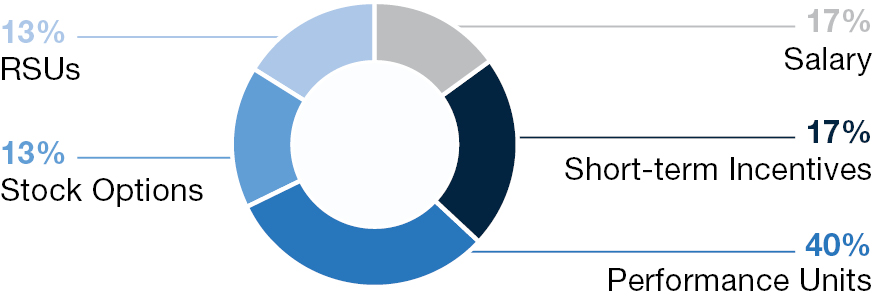 |  | |||||||||||||||||||||||||||||||
| Base Salary: | $ | 570,000 | Base Salary: | $ | 433,424 | |||||||||||||||||||||||||||
| Annual Bonus Earned: | $ | 589,950 | Annual Bonus Earned: | $ | 498,438 | |||||||||||||||||||||||||||
| Long-Term Incentives Granted: | $ | 2,325,019 | Long-Term Incentives Granted: | $ | 3,150,014 | |||||||||||||||||||||||||||
| Total Actual Compensation: | $ | 3,484,969 | Total Actual Compensation: | $ | 4,081,876 | |||||||||||||||||||||||||||
| 60% of 2023 LTIs granted were performance based | 60% of 2023 LTIs granted were performance based. Base salary and annual bonus earned are prorated based on the partial year of service; LTIs reflect the full amount granted but will prorate based on the partial year of service. | |||||||||||||||||||||||||||||||
| 2024 Proxy Statement | 74 | ||||
| 75 |  | ||||
| NEO | 2023 Annual Base Salary | Changes from 2022 | Reasons for Changes | |||||||||||
| Joseph R. Hinrichs | $ | 1,400,000 | — | % | No change from 2022 | |||||||||
| Sean R. Pelkey | $ | 660,000 | 10 | % | Due to performance, achievement of his 2022 goals and positioning within the Comparator Group | |||||||||
| Kevin S. Boone | $ | 725,000 | — | % | No change from 2022 | |||||||||
| Stephen Fortune | $ | 650,000 | — | % | No change from 2022 | |||||||||
| Nathan D. Goldman | $ | 570,000 | — | % | No change from 2022 | |||||||||
| Jamie J. Boychuk | $ 725,000* | — | % | No change from 2022 | ||||||||||
| NEO | Target Incentive Opportunity (% of Base Salary) | ||||
| Joseph R. Hinrichs | 150 | % | |||
| Sean R. Pelkey | 100 | % | |||
| Kevin S. Boone | 100 | % | |||
| Stephen Fortune | 100 | % | |||
| Nathan D. Goldman | 90 | % | |||
| Jamie J. Boychuk* | 100 | % | |||
| 2024 Proxy Statement | 76 | ||||

| 77 |  | ||||
Performance Measure(1) | Threshold(1) (0% – 50% payout) | Target (100% payout) | Maximum (200% payout) | Individual Measure Payouts | Resulted Company Payout | Total Payout for All NEOs | ||||||||||||||||||||
| Financial Goals – 70% weighting | ||||||||||||||||||||||||||
| Operating Income (30% weighting) |  | 33% | ||||||||||||||||||||||||
Operating Ratio(2) (30% weighting) |  | 32% | ||||||||||||||||||||||||
Initiative-based Revenue Growth(3) (10% weighting) |  | 20% | 115% | 115%(5) | ||||||||||||||||||||||
ESG (Safety and Environmental) and Operational Goals(4) – 30% weighting | ||||||||||||||||||||||||||
| FRA Personal Injury Rate (5% weighting) |  | 10% | ||||||||||||||||||||||||
| FRA Train Accident Rate (5% weighting) |  | 0% | ||||||||||||||||||||||||
| Trip Plan Compliance (10% weighting) |  | 20% | ||||||||||||||||||||||||
| Fuel Efficiency (10% weighting) |  | 0% | ||||||||||||||||||||||||
| 2024 Proxy Statement | 78 | ||||
| Long-Term Compensation Element | Description | Features | ||||||
| Performance Units | nPerformance units are granted at the beginning of the applicable performance cycle, as described below. nAwards are paid in the form of CSX common stock at the end of the performance period based on the level of achievement on Company performance goals. nParticipants also receive dividend equivalents at the end of the restricted period paid in the form of CSX common stock, assuming performance goals are met. | nPerformance units (and related dividend equivalents) are generally subject to forfeiture if a participant’s employment terminates before the end of the performance cycle for any reason other than death, disability, retirement or other limited circumstances, as approved by the Committee. nFor the 2021-2023 and 2022-2024 LTIP cycles, upon retirement—defined as (i) age 65 or (ii) age 55 plus 10 years of service—participants received a prorated portion of their award based on the number of months completed in the cycle. For the 2023-2025 and 2024-2026 LTIP cycles, upon retirement—defined as (i) age 65, (ii) age 60 plus five years of service or (iii) age 55 plus 12 years of service—all outstanding performance units will remain outstanding and eligible to vest based on Company performance through the end of the applicable LTIP cycle. To receive full vesting, NEOs must work through December 31st of the first year of the LTIP cycle and receive consent from the Committee. nThe employment letter for Mr. Hinrichs provides that, in connection with his retirement, all outstanding performance units will remain outstanding and eligible to vest based on Company performance through the end of the applicable LTIP cycle. Mr. Hinrichs will only receive the full vesting of his performance units in connection with retirement if he retires after reaching age 60 with five years of service. nUpon death or disability for all LTIP cycles, participants or their estates earn the performance units that they would otherwise have earned at the end of the performance period had there been no death or disability. nPerformance unit payouts for each LTIP cycle, if any, do not occur until approved by the Committee in January of the year following the conclusion of the three-year performance cycle. These payouts can vary from the target grants in terms of: (i) the number of shares paid out due to financial performance; and (ii) the market value of CSX common stock at the time of payout. nBased on actual performance, as discussed below, the performance unit payouts for the NEOs can range from 0% to 250% of the target levels, and can be of lesser or greater value than the original grant value based on the level of achievement on the performance goals and the price of CSX common stock. | ||||||
| 79 |  | ||||
| Long-Term Compensation Element | Description | Features | ||||||
| Non-qualified Stock Options | nNon-qualified stock options vest ratably over three years and require stock price appreciation to provide any value to the NEOs. nAs a result, they reinforce leadership’s focus on the importance of value creation for shareholders. Non-qualified stock options generally provide participants with the right to buy CSX stock at a pre-set price for a period of 10 years. nThe exercise price of the non-qualified stock options is established as the closing stock price on the date of grant. The Stock Plan prohibits the repricing of outstanding non-qualified stock options without the approval of shareholders. | nFor outstanding LTIP cycles, non-qualified stock options are subject to forfeiture if a participant’s employment terminates before the end of the vesting period for any reason other than death, disability, retirement or other limited circumstances, as approved by the Committee. nFor the 2021-2023 and 2022-2024 LTIP cycles, upon retirement—defined as (i) age 65 or (ii) age 55 plus 10 years of service—participants received a prorated portion of their award based on the number of months completed in the cycle. For the 2023-2025 and 2024-2026 LTIP cycles, upon retirement—defined as (i) age 65, (ii) age 60 plus five years of service or (iii) age 55 plus 12 years of service—all outstanding non-qualified stock options will remain outstanding and eligible to vest based on Company performance through the end of the applicable LTIP cycle. To receive full vesting, NEOs must work through December 31st of the first year of the LTIP cycle and receive consent from the Committee. nThe employment letter for Mr. Hinrichs provides that, in connection with his retirement, the full awards will continue to vest in accordance with their terms. Mr. Hinrichs will only receive the full vesting of his award in connection with retirement if he retires after reaching age 60 with five years of service. nUpon death or disability for all LTIP cycles, participants or their estates receive all options per the original vesting schedule as if there was no death or disability. | ||||||
| Restricted Stock Units | nRestricted stock units are time-based awards that vest three years from the grant date (“the restricted period”) for the 2021-2023 and 2022-2024 LTIP cycles. nRestricted stock units for the 2023-2025 and 2024-2026 LTIP cycles are time-based awards that vest ratably over the three year period from the grant date. nAwards are paid in the form of CSX common stock at the end of the restricted period. Participants also receive dividend equivalents at the end of the restricted period paid in the form of CSX common stock. | nRestricted stock units are generally subject to forfeiture if a participant’s employment terminates before the end of the restricted period for any reason other than death, disability, retirement or other limited circumstances, as approved by the Committee. nFor the 2021-2023 and 2022-2024 LTIP cycles, upon retirement—defined as (i) age 65 or (ii) age 55 plus 10 years of service—participants received a prorated portion of their award based on the number of months completed in the cycle. For the 2023-2025 and 2024-2026 LTIP cycles, upon retirement—defined as (i) age 65, (ii) age 60 plus five years of service or (iii) age 55 plus 12 years of service—all outstanding restricted stock units will remain outstanding and eligible to vest based on Company performance through the end of the applicable LTIP cycle. To receive full vesting, NEOs must work through December 31st of the first year of the LTIP cycle and receive consent from the Committee. nThe employment letter for Mr. Hinrichs provides that, in connection with his retirement, the full awards will continue to vest in accordance with their terms. Mr. Hinrichs will only receive the full vesting of his award in connection with retirement if he retires after reaching age 60 with five years of service. nUpon death or disability for all LTIP cycles, participants or their estates receive all restricted stock units per the original vesting schedule as if there was no death or disability. | ||||||
| 2024 Proxy Statement | 80 | ||||
| Average Annual Operating Income Growth Rate | = | Straight Average of Year-over-Year Change in [Operating Revenues – Operating Expenses] |  | |||||||||||
| Free Cash Flow* | = | Net Operating Profit – Net Investment in Operating Capital | 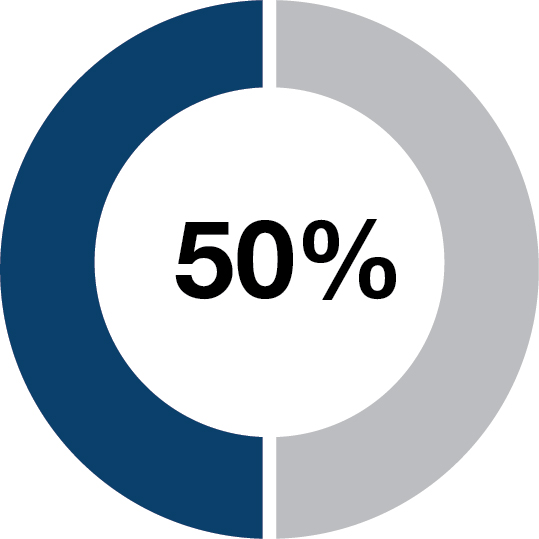 | |||||||||||
| 81 |  | ||||
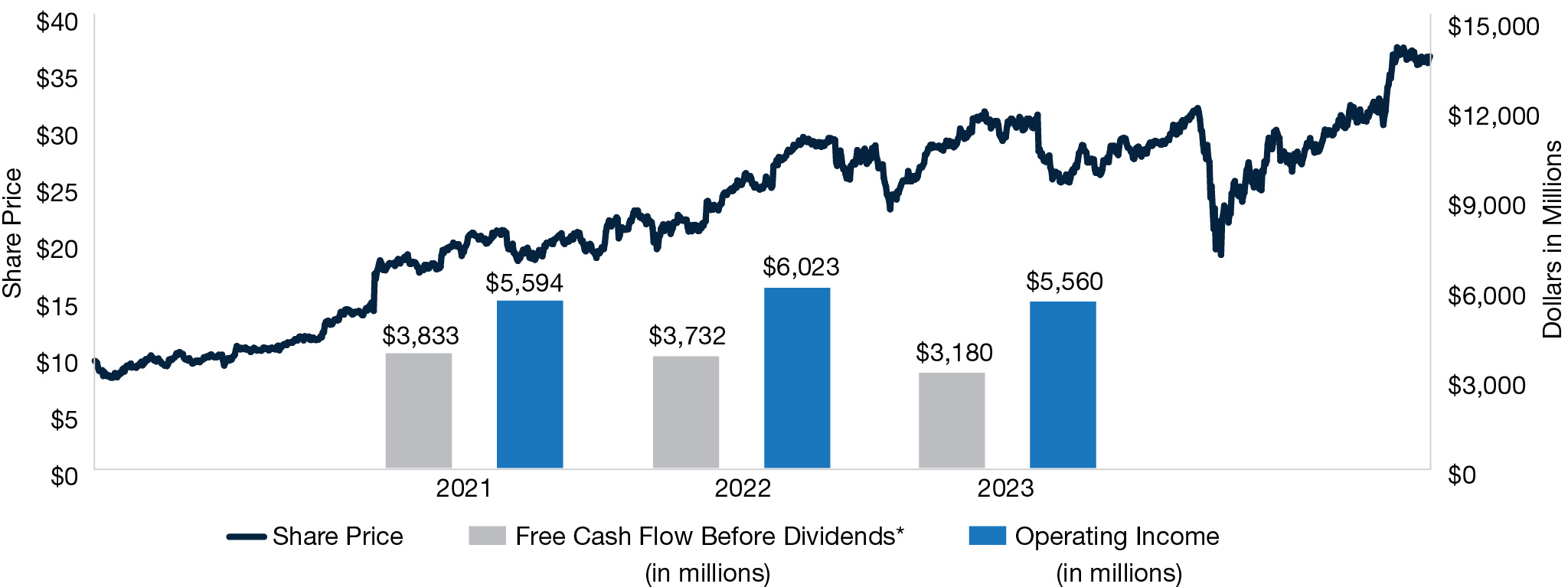
| Threshold (25% payout) | Target (50% payout) | Maximum (100% payout) | Payout | ||||||||||||||
| Average Annual Operating Income Growth Rate (50% weighting) |  | 200% of Target | |||||||||||||||
| Cumulative Free Cash Flow* (50% weighting) |  | ||||||||||||||||
| Relative TSR (Modifier) |  | -19% | |||||||||||||||
| Total Payout: | 162% of Target | ||||||||||||||||
| 2024 Proxy Statement | 82 | ||||
| LTIP Cycle | Performance Measures | Rationale | ||||||
| 2022-2024, 2023-2025 and 2024-2026 LTIP cycles | nAverage Annual Operating Income Growth Rate (50%) nEconomic Profit (CCE) (50%) | nContinued the Company’s focus on driving profitable growth. nEconomic Profit (CCE) is a non-GAAP financial measure designed to measure whether returns on new investments exceed an expected rate of return and to encourage investments in profitable growth projects. Improvement in Economic Profit (CCE) has historically had a strong relationship to stock price appreciation. nAs shown below, Economic Profit (CCE) is calculated as gross cash earnings minus the capital charge on gross operating assets, and Economic Profit (CCE) performance is measured as an improvement versus the prior year’s actual Economic Profit (CCE). nAn Economic Profit (CCE) payout percentage is calculated for each fiscal year during the LTIP cycle, with the final payout percentage determined using an average of the three annual payout percentages. nThis measure was incorporated to drive earnings growth, and to better align compensation to the ONE CSX strategy and to the value created for our shareholders and other stakeholders. nForward-looking LTIP targets are not disclosed for proprietary and competitive harm reasons. | ||||||
 | ||||||||
| 83 |  | ||||
| 2022-2024 LTIP | ||
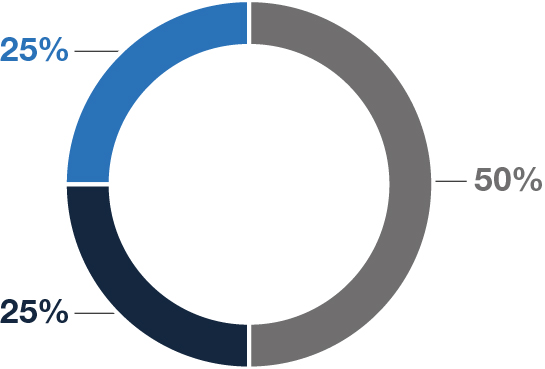
| n | n | n | |||||||||||||||
| Performance Units | Restricted Stock Units | Non-qualified Stock Options | |||||||||||||||
| 2023-2025 and 2024-2026 LTIPs | ||
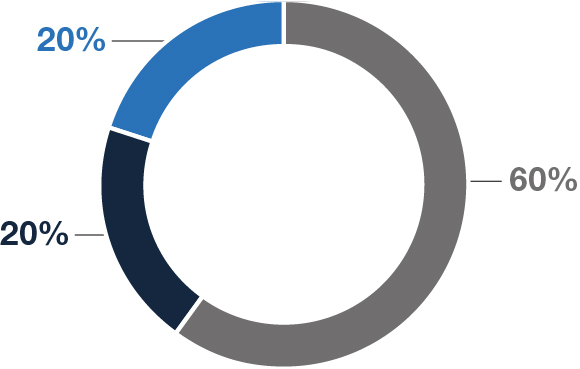
| n | n | n | |||||||||||||||
| Performance Units | Restricted Stock Units | Non-qualified Stock Options | |||||||||||||||
| 2024 Proxy Statement | 84 | ||||
| 85 |  | ||||
| 2024 Proxy Statement | 86 | ||||
| 87 |  | ||||
| Position | Minimum Value | ||||
| Chief Executive Officer | 6 times base salary | ||||
| Executive Vice Presidents | 4 times base salary | ||||
| Senior Vice Presidents | 3 times base salary | ||||
| Vice Presidents | 1 times base salary | ||||
| 2024 Proxy Statement | 88 | ||||

| Name | Year | Salary ($) | Bonus ($) | Stock Awards ($)(2) | Option Awards ($)(3) | Non-Equity Incentive Plan Compensation ($)(4) | Change in Pension Value and Non-qualified Deferred Compensation Earnings ($)(5) | All Other Compensation ($)(6) | Total ($) | ||||||||||||||||||||
Joseph R. Hinrichs(1) President and Chief Executive Officer | 2023 | 1,400,000 | — | 8,000,032 | 2,000,003 | 2,415,000 | — | 259,200 | 14,074,235 | ||||||||||||||||||||
| 2022 | 376,515 | — | 7,000,026 | — | 852,806 | — | 119,170 | 8,348,517 | |||||||||||||||||||||
Sean R. Pelkey Executive Vice President and Chief Financial Officer | 2023 | 660,000 | — | 1,860,011 | 465,008 | 759,000 | 156,340 | 59,965 | 3,960,324 | ||||||||||||||||||||
| 2022 | 600,000 | — | 2,292,067 | 1,169,878 | 815,400 | 150,903 | 34,127 | 5,062,375 | |||||||||||||||||||||
| 2021 | 427,826 | — | 774,847 | 258,359 | 479,165 | 95,725 | 16,270 | 2,052,192 | |||||||||||||||||||||
Kevin S. Boone Executive Vice President and Chief Commercial Officer | 2023 | 725,000 | — | 2,520,013 | 630,001 | 833,750 | 157,053 | 68,285 | 4,934,102 | ||||||||||||||||||||
| 2022 | 725,000 | — | 2,313,201 | 781,173 | 1,094,750 | 174,971 | 60,938 | 5,150,033 | |||||||||||||||||||||
| 2021 | 700,000 | — | 2,203,699 | 734,236 | 1,120,000 | 168,881 | 40,085 | 4,966,901 | |||||||||||||||||||||
Stephen Fortune(1) Executive Vice President and Chief Digital & Technology Officer | 2023 | 650,000 | — | 1,860,011 | 465,008 | 747,500 | — | 83,469 | 3,805,988 | ||||||||||||||||||||
| 2022 | 487,500 | — | 2,833,335 | — | 736,125 | — | 25,899 | 4,082,859 | |||||||||||||||||||||
Nathan D. Goldman(1) Executive Vice President and Chief Legal Officer | 2023 | 570,000 | — | 1,860,011 | 465,008 | 589,950 | 217,004 | 57,585 | 3,759,558 | ||||||||||||||||||||
| 2022 | 570,000 | — | 1,707,363 | 576,587 | 774,630 | 235,088 | 35,571 | 3,899,239 | |||||||||||||||||||||
| 2021 | 550,000 | — | 1,616,082 | 538,440 | 792,000 | 226,459 | 57,577 | 3,780,558 | |||||||||||||||||||||
Jamie J. Boychuk(1) Former Executive Vice President — Operations | 2023 | 433,424 | — | 2,520,013 | 630,001 | 498,438 | 100,942 | 1,726,158 | 5,908,976 | ||||||||||||||||||||
| 2022 | 725,000 | — | 2,313,201 | 781,173 | 1,094,750 | 175,643 | 41,217 | 5,130,984 | |||||||||||||||||||||
| 2021 | 700,000 | — | 2,203,699 | 734,236 | 1,120,000 | 169,530 | 35,137 | 4,962,602 | |||||||||||||||||||||
| 89 |  | ||||
| Name | CSXtra Plan Contributions ($)(a) | NQDC Plan Contributions ($)(b) | Health Savings Account Contributions ($)(c) | Severance ($)(d) | Perquisites ($)(e) | Total ($) | ||||||||||||||
| Joseph R. Hinrichs | 59,512 | 39,668 | 2,400 | — | 157,620 | 259,200 | ||||||||||||||
| Sean R. Pelkey | 11,795 | 11,273 | 2,400 | — | 34,497 | 59,965 | ||||||||||||||
| Kevin S. Boone | 11,300 | 13,898 | 2,400 | — | 40,687 | 68,285 | ||||||||||||||
| Stephen Fortune | 50,155 | 5,475 | 2,400 | — | 25,440 | 83,469 | ||||||||||||||
| Nathan D. Goldman | 12,767 | 8,473 | 2,400 | — | 33,946 | 57,585 | ||||||||||||||
| Jamie J. Boychuk | 10,177 | 10,442 | 2,400 | 1,678,219 | 24,921 | 1,726,158 | ||||||||||||||
| 2024 Proxy Statement | 90 | ||||
| Name | Grant Date | Estimated Possible Payouts Under Non-Equity Incentive Plan Awards(1) | Estimated Future Payouts Under Equity Incentive Awards (# of units)(2) | All Other Stock Awards (units)(3) | All Other Option Awards (#)(4) | Exercise Price of Option Awards ($) | Grant Date Fair Value of Stock and Option Awards ($)(5) | |||||||||||||||||||||||||||||||
| Threshold ($) | Target ($) | Maximum ($) | Threshold (units) | Target (units) | Maximum (units) | |||||||||||||||||||||||||||||||||
| Joseph R. Hinrichs | Feb. 15, 2023 | 0 | 189,454 | 473,635 | 63,152 | 8,000,032 | ||||||||||||||||||||||||||||||||
| Feb. 15, 2023 | 202,943 | 31.67 | 2,000,003 | |||||||||||||||||||||||||||||||||||
| 52,500 | 2,100,000 | 4,200,000 | ||||||||||||||||||||||||||||||||||||
| Sean R. Pelkey | Feb. 15, 2023 | 0 | 44,048 | 110,120 | 14,683 | 1,860,011 | ||||||||||||||||||||||||||||||||
| Feb. 15, 2023 | 47,185 | 31.67 | 465,008 | |||||||||||||||||||||||||||||||||||
| 16,500 | 660,000 | 1,320,000 | ||||||||||||||||||||||||||||||||||||
| Kevin S. Boone | Feb. 15, 2023 | 0 | 59,678 | 149,195 | 19,893 | 2,520,013 | ||||||||||||||||||||||||||||||||
| Feb. 15, 2023 | 63,927 | 31.67 | 630,001 | |||||||||||||||||||||||||||||||||||
| 18,125 | 725,000 | 1,450,000 | ||||||||||||||||||||||||||||||||||||
| Stephen Fortune | Feb. 15, 2023 | 0 | 44,048 | 110,120 | 14,683 | 1,860,011 | ||||||||||||||||||||||||||||||||
| Feb. 15, 2023 | 47,185 | 31.67 | 465,008 | |||||||||||||||||||||||||||||||||||
| 16,250 | 650,000 | 1,300,000 | ||||||||||||||||||||||||||||||||||||
| Nathan D. Goldman | Feb. 15, 2023 | 0 | 44,048 | 110,120 | 14,683 | 1,860,011 | ||||||||||||||||||||||||||||||||
| Feb. 15, 2023 | 47,185 | 31.67 | 465,008 | |||||||||||||||||||||||||||||||||||
| 12,825 | 513,000 | 1,026,000 | ||||||||||||||||||||||||||||||||||||
| Jamie J. Boychuk | Feb. 15, 2023 | 0 | 59,678 | 149,195 | 19,893 | 2,520,013 | ||||||||||||||||||||||||||||||||
| Feb. 15, 2023 | 63,927 | 31.67 | 630,001 | |||||||||||||||||||||||||||||||||||
| 18,125 | 725,000 | 1,450,000 | ||||||||||||||||||||||||||||||||||||
| 91 |  | ||||

Executive(3)All Other Stock Awards – The amounts in this column represent the number of restricted stock units granted to Messrs. Hinrichs, Pelkey, Boone, Goldman, Fortune and Boychuk on February 15, 2023. One third of these units vested on February 15, 2024, and the remaining units will vest ratably on February 15, 2025 and February15,2026, subject to the NEO’s continued employment through the applicable vesting date.
| 2024 Proxy Statement | 92 | ||||
| Option Awards | Stock Awards | |||||||||||||||||||||||||||||||||||||
| Name | Options Exercisable | Options Unexercisable(1) | Option Price ($) | Option Expiration Date | Shares Not Vested(2) | Market Value ($)(3) | Equity Incentive Awards Not Vested(4) | Market Value ($)(5) | ||||||||||||||||||||||||||||||
| Joseph R. Hinrichs | — | 202,943 | 31.67 | 2/15/33 | 190,750 | 6,613,303 | 280,705 | 9,732,042 | ||||||||||||||||||||||||||||||
| Sean R. Pelkey | 2,223 | — | 16.13 | 2/22/27 | 55,892 | 1,937,776 | 67,692 | 2,346,882 | ||||||||||||||||||||||||||||||
| 10,632 | — | 17.94 | 2/6/28 | |||||||||||||||||||||||||||||||||||
| 9,429 | — | 22.70 | 2/6/29 | |||||||||||||||||||||||||||||||||||
| 19,848 | — | 26.50 | 2/18/30 | |||||||||||||||||||||||||||||||||||
| 5,133 | 2,568 | 29.49 | 2/9/31 | |||||||||||||||||||||||||||||||||||
| 14,781 | 7,392 | 33.21 | 6/4/31 | |||||||||||||||||||||||||||||||||||
| — | 59,989 | 34.36 | 1/24/32 | |||||||||||||||||||||||||||||||||||
| 18,991 | 37,984 | 35.17 | 2/16/32 | |||||||||||||||||||||||||||||||||||
| — | 47,185 | 31.67 | 2/15/33 | |||||||||||||||||||||||||||||||||||
| Kevin S. Boone | 15,969 | — | 17.59 | 10/1/27 | 66,726 | 2,313,390 | 91,711 | 3,179,620 | ||||||||||||||||||||||||||||||
| 15,084 | — | 17.94 | 2/6/28 | |||||||||||||||||||||||||||||||||||
| 13,455 | — | 22.70 | 2/6/29 | |||||||||||||||||||||||||||||||||||
| 246,507 | — | 23.48 | 12/4/29 | |||||||||||||||||||||||||||||||||||
| 216,927 | — | 26.50 | 2/18/30 | |||||||||||||||||||||||||||||||||||
| 62,100 | 31,050 | 29.49 | 2/9/31 | |||||||||||||||||||||||||||||||||||
| 25,730 | 51,461 | 35.17 | 2/16/32 | |||||||||||||||||||||||||||||||||||
| — | 63,927 | 31.67 | 2/15/33 | |||||||||||||||||||||||||||||||||||
| Stephen Fortune | — | 47,185 | 31.67 | 2/15/33 | 54,020 | 1,872,873 | 65,264 | 2,262,703 | ||||||||||||||||||||||||||||||
| Nathan D. Goldman | 161,487 | — | 17.94 | 2/6/28 | 49,132 | 1,703,406 | 67,692 | 2,346,882 | ||||||||||||||||||||||||||||||
| 137,301 | — | 22.70 | 2/6/29 | |||||||||||||||||||||||||||||||||||
| 211,293 | — | 23.48 | 12/4/29 | |||||||||||||||||||||||||||||||||||
| 173,541 | — | 26.50 | 2/18/30 | |||||||||||||||||||||||||||||||||||
| 45,540 | 22,770 | 29.49 | 2/9/31 | |||||||||||||||||||||||||||||||||||
| 18,991 | 37,984 | 35.17 | 2/16/32 | |||||||||||||||||||||||||||||||||||
| — | 47,185 | 31.67 | 2/15/33 | |||||||||||||||||||||||||||||||||||
| Jamie J. Boychuk | — | 26,737 | 29.49 | 2/9/31 | — | — | 33,535 | 1,162,658 | ||||||||||||||||||||||||||||||
| 25,730 | 27,160 | 35.17 | 2/16/32 | |||||||||||||||||||||||||||||||||||
| — | 12,429 | 31.67 | 2/15/33 | |||||||||||||||||||||||||||||||||||
| 93 |  | ||||
| 2024 Proxy Statement | 94 | ||||
| Option Awards | Stock Awards | ||||||||||||||||
| Name | Shares Acquired on Exercise(1) | Value Realized on Exercise ($) | Shares Acquired on Vesting(2) | Value Realized on Vesting ($)(3) | |||||||||||||
| Joseph R. Hinrichs | — | — | — | — | |||||||||||||
| Sean R. Pelkey | — | — | 28,439 | 1,006,456 | |||||||||||||
| Kevin S. Boone | — | — | 83,775 | 2,964,797 | |||||||||||||
| Stephen Fortune | — | — | 12,419 | 371,825 | |||||||||||||
| Nathan D. Goldman | — | — | 61,436 | 2,174,220 | |||||||||||||
| Jamie J. Boychuk | 560,364 | 4,697,318 | 111,354 | 3,798,065 | |||||||||||||
| 95 |  | ||||
| Name | Plan Name | Years Credited Service | Present Value Accumulated Benefits ($)(2) | Payments During Last FY ($) | ||||||||||
Joseph R. Hinrichs(1) | Qualified Pension Plan | — | — | — | ||||||||||
| Non-qualified Special Retirement Plan | — | — | — | |||||||||||
| Sean R. Pelkey | Qualified Pension Plan | 18.500 | 311,623 | — | ||||||||||
| Non-qualified Special Retirement Plan | 18.500 | 345,987 | — | |||||||||||
| Kevin S. Boone | Qualified Pension Plan | 6.333 | 163,484 | — | ||||||||||
| Non-qualified Special Retirement Plan | 6.333 | 558,055 | — | |||||||||||
Stephen Fortune(1) | Qualified Pension Plan | — | — | — | ||||||||||
| Non-qualified Special Retirement Plan | — | — | — | |||||||||||
| Nathan D. Goldman | Qualified Pension Plan | 20.583 | 629,276 | — | ||||||||||
| Non-qualified Special Retirement Plan | 20.583 | 1,158,816 | — | |||||||||||
| Jamie J. Boychuk | Qualified Pension Plan | 6.333 | 161,441 | — | ||||||||||
| Non-qualified Special Retirement Plan | 6.333 | 522,723 | — | |||||||||||
| Name | Executive Contributions Last Fiscal Year(1) | Registrant Contributions Last Fiscal Year(2) | Aggregate Earnings Last Fiscal Year(3) | Aggregate Distributions Last Fiscal Year | Aggregate Balance Last Fiscal Year-End | ||||||||||||
| Joseph R. Hinrichs | 64,325 | 39,668 | 11,959 | — | 133,189 | ||||||||||||
| Sean R. Pelkey | 363,948 | 11,273 | 66,760 | — | 479,484 | ||||||||||||
| Kevin S. Boone | 23,825 | 13,898 | 28,323 | — | 168,558 | ||||||||||||
| Stephen Fortune | — | 5,475 | 105 | — | 5,580 | ||||||||||||
| Nathan D. Goldman | 14,525 | 8,473 | 11,156 | — | 172,235 | ||||||||||||
| Jamie J. Boychuk | 17,900 | 10,442 | 12,992 | — | 114,672 | ||||||||||||
| 2024 Proxy Statement | 96 | ||||
| Name | Severance ($)(1) | Pro-Rata Bonus Payment ($)(2) | Equity ($)(3) | Welfare Benefit Values ($)(4) | Outplacements ($)(5) | Aggregate Payments ($) | ||||||||||||||
| Joseph R. Hinrichs | 10,500,000 | 2,415,000 | 18,214,324 | 65,949 | 40,000 | 31,235,273 | ||||||||||||||
| Sean R. Pelkey | 3,946,800 | 759,000 | 5,727,195 | 91,584 | 40,000 | 10,564,579 | ||||||||||||||
| Kevin S. Boone | 4,335,500 | 833,750 | 13,519,456 | 91,584 | 40,000 | 18,820,290 | ||||||||||||||
| Stephen Fortune | 3,887,000 | 747,500 | 4,570,127 | 91,584 | 40,000 | 9,336,211 | ||||||||||||||
| Nathan D. Goldman | 3,238,170 | 589,950 | 14,241,197 | 64,656 | 40,000 | 18,173,973 | ||||||||||||||
| 97 |  | ||||
| 2024 Proxy Statement | 98 | ||||
| Name | Severance ($)(2) | Stock Awards ($)(3) | Option Awards ($)(3) | Non-Equity Incentive Plan Compensation ($)(4) | Other Compensation ($)(5) | Total Compensation Payable ($) | ||||||||||||||
| Joseph R. Hinrichs | 7,000,000 | 8,429,737 | 608,829 | 2,415,000 | 71,152 | 18,524,718 | ||||||||||||||
| Sean R. Pelkey | 1,320,000 | 3,348,833 | 585,010 | 759,000 | 80,128 | 6,092,971 | ||||||||||||||
| Kevin S. Boone | 1,450,000 | 5,338,822 | 5,889,629 | 833,750 | 80,128 | 13,592,329 | ||||||||||||||
| Stephen Fortune | 1,300,000 | 3,391,313 | 141,555 | 747,500 | 80,128 | 5,660,496 | ||||||||||||||
| Nathan D. Goldman | 1,083,000 | 3,928,446 | 8,621,953 | 589,950 | 71,152 | 14,294,501 | ||||||||||||||
Jamie J. Boychuk(1) | 1,450,000 | 3,744,324 | 54,276 | 498,438 | 80,128 | 5,827,166 | ||||||||||||||
| 99 |  | ||||

nThe annual total compensation of the individual identified as the Company’s median employee, other than the CEO, was $121,000. This represents an increase of $2,952 or 2% compared to 2023. nThe annual total compensation of the CEO was $14,095,787. nBased on this information, the ratio for 2023 of the annual total compensation of Mr. Hinrichs to the annual total compensation of the median employee was 116 to 1. | ||
| 2024 Proxy Statement | 100 | ||||

| Year (a) | Summary Compensation Table Total for Current PEO(1) (b) | Compensation Actually Paid to Current PEO(2) (c) | Summary Compensation Table Total for Former PEO(1) (b1) | Compensation Actually Paid to Former PEO(2) (c1) | Average Summary Compensation Table Total for Non-PEO NEOs(1) (d) | Average Compensation Actually Paid to Non-PEO NEOs(2) (e) | Value of Initial Fixed $100 Investment Based On: | Net Income(4) (in Millions) (h) | Economic Profit(5) (in Millions) (i) | |||||||||||||||||||||||
Total Shareholder Return (f) | Peer Group Total Shareholder Return(3) (g) | |||||||||||||||||||||||||||||||
| 2023 | $14,074,235 | $15,733,686 | N/A | N/A | $4,114,993 | $4,663,286 | $151 | $150 | $3,715 | $2,658 | ||||||||||||||||||||||
| 2022 | $8,348,517 | $9,301,674 | $19,536,434 | $9,694,786 | $4,856,562 | $3,422,243 | $133 | $127 | $4,166 | $2,962 | ||||||||||||||||||||||
| 2021 | N/A | N/A | $20,006,806 | $32,556,244 | $4,076,812 | $6,737,795 | $160 | $134 | $3,781 | $2,472 | ||||||||||||||||||||||
| 2020 | N/A | N/A | $15,306,715 | $28,736,814 | $3,586,272 | $6,163,283 | $127 | $111 | $2,765 | $1,761 | ||||||||||||||||||||||
| 101 |  | ||||
Calculation for Current PEO | Calculation for Former PEO | Calculation for Average of Non-PEO NEOs | |||||||||
| Calculation of Compensation “Actually Paid” | Year 2023 ($) | Year 2023 ($) | Year 2023 ($) | ||||||||
| Summary Compensation Table Total | 14,074,235 | N/A | 4,114,993 | ||||||||
| Less Stock Award Value Reported in Summary Compensation Table for the Covered Year | (10,000,035) | N/A | (2,531,268) | ||||||||
| Plus Fair Value for Awards Granted in the Covered Year | 11,189,926 | N/A | 2,813,371 | ||||||||
| Change in Fair Value of Awards from Prior Years that Vested in the Covered Year | — | N/A | 97,001 | ||||||||
| Change in Fair Value of Outstanding Unvested Awards from Prior Years | 469,561 | N/A | 238,928 | ||||||||
| Less Fair Value of Awards Forfeited during the Covered Year | — | N/A | — | ||||||||
| Plus Fair Value of Incremental Dividends of Earnings Paid on Stock Awards | — | N/A | — | ||||||||
| Less Aggregate Change in Actuarial Present Value of Accumulated Benefit Under Pension Plans | — | N/A | (132,599) | ||||||||
| Plus Aggregate Service Cost and Prior Service Cost for Pension Plans | — | N/A | 62,860 | ||||||||
| Compensation “Actually Paid” | 15,733,686 | N/A | 4,663,286 | ||||||||
|
|
|
|
|
|
| ||||||||||||
Name | Salary | Stock Awards | Non-Equity | Change in | All Other | Total | ||||||||||||
Michael J. Ward Chairman and CEO | $ | 1,200,000 | $ | 7,064,833 | $ | 864,000 | -- | $ | 80,728 | $ | 9,209,561 | |||||||
Clarence W. Gooden President | $ | 665,720 | $ | 2,406,455 | $ | 373,432 | -- | $ | 49,362 | $ | 3,494,969 | |||||||
Fredrik J. Eliasson Executive Vice President and Chief Sales and Mktg. Officer | $ | 565,720 | $ | 2,018,535 | $ | 305,489 | $ | 199,435 | $ | 27,174 | $ | 3,116,353 | ||||||
Frank A. Lonegro Executive Vice President and CFO | $ | 365,518 | $ | 706,112 | $ | 173,072 | $ | 27,056 | $ | 18,064 | $ | 1,289,822 | ||||||
Ellen M. Fitzsimmons Executive Vice President, General Counsel, and Corporate Secretary | $ | 550,000 | $ | 1,513,900 | $ | 264,000 | $ | 103,737 | $ | 34,952 | $ | 2,466,589 | ||||||
Cynthia M. Sanborn Executive Vice President and COO – CSX Transportation | $ | 497,456 | $ | 2,741,527 | $ | 266,938 | $ | 91,485 | $ | 32,600 | $ | 3,630,006 | ||||||
Oscar Munoz Former President and COO | $ | 604,207 | $ | 6,083,112 | -- | $ | 141,651 | $ | 46,474 | $ | 6,875,444 | |||||||
| 2024 Proxy Statement | 102 | ||||

| 103 |  | ||||
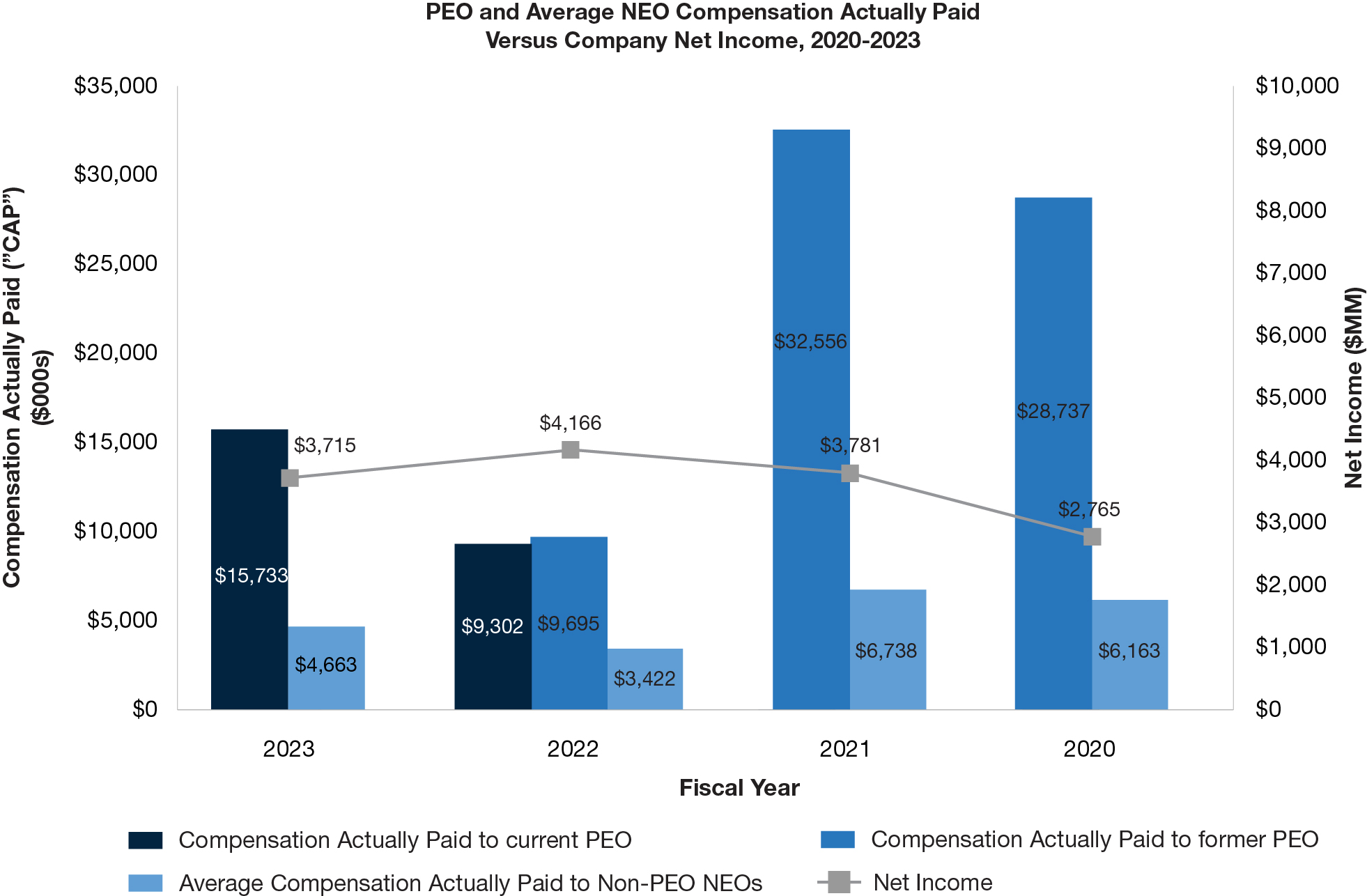
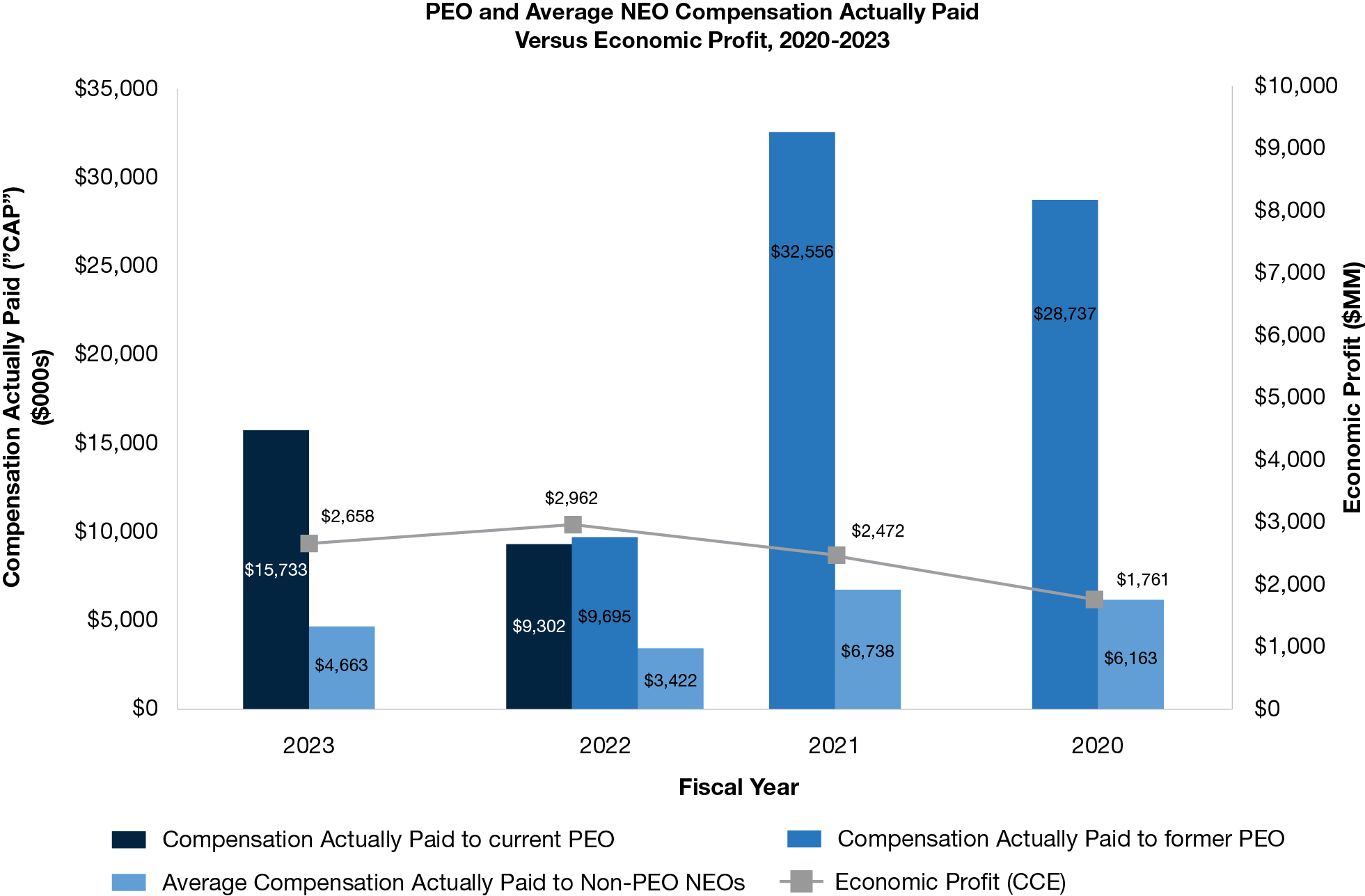
| 2024 Proxy Statement | 104 | ||||
| Most Important Performance Measures | Importance to the Company | ||||
| Average Annual Operating Income Growth Rate Percentage | nMeasures the average increase in operating income for each year of the LTIPcycle nAligns with the Company’s objective of profitable growth | ||||
| Economic Profit (CSX Cash Earnings or CCE) | nMeasures the Company’s ability to grow operating income while remaining focused on cost control and asset utilization nEncourages investments in growth projects that earn more than an expected rate of return | ||||
| Relative Total Shareholder Return (Relative TSR) | nDesigned to appropriately align NEO payouts with share price performance relative to a transportation-related peer group | ||||
| Operating Income | nUsed to gauge the general health of the Company and to quantify operating profitmargin nAligns with the Company’s objective of profitable growth | ||||
| Operating Ratio | nKey indicator of the Company’s efficiency nEncourages the Company to deliver results that grow the business while optimizing assets | ||||
| Initiative-based Revenue Growth | nMeasures the Company’s ability to gain additional business on the CSX network through growth with new and existing customers nDirectly supports profitable growth by driving operating income | ||||
| Safety | nReinforces the critical importance on ensuring employees’ personal safety and the safety of fellow railroaders and upholding our commitment to protect customers’ freight and the communities in which we operate | ||||
Trip Plan Compliance (supplemental) | nEnsures the Company successfully executes the service plan for customers’ shipments based on our commitments nFocuses on reliable and accurate service for customers | ||||
Fuel Efficiency (supplemental) | nIndicates the Company’s fuel productivity over the distance traveled nSupports environmental stewardship by reducing carbon emissions | ||||
| 105 |  | ||||

| Plan category | Number of securities to be issued upon exercise of outstanding options, warrants and rights (in thousands) | Weighted-average exercise price of outstanding options, warrants and rights | Number of securities remaining available for future issuance under equity compensation plans (in thousands)(1) | ||||||||
| Equity compensation plans approved by security holders | 12,094 | $25.04 | 29,549 | ||||||||
| Equity compensation plans not approved by security holders | 0 | 0 | 0 | ||||||||
| TOTAL | 12,094 | $25.04 | 29,549 | ||||||||
| 2024 Proxy Statement | 106 | ||||

The following table sets forth, as of March 1, 2024, the beneficial ownership of CSX common stock by each director, director nominee and NEO, and the directors, director nominee and current executive officers of the Company as a group. The business address of each of the Company’s directors and executive officers is CSX Corporation,9
Name of Beneficial Owner(1) | Amount of Beneficial Ownership | Shares for which Beneficial Ownership can be Acquired within 60 Days | Total Beneficial Ownership | Percent of Class(2) | ||||||||||
| Donna M. Alvarado | 386,582 | 0 | 386,582 | * | ||||||||||
| Thomas P. Bostick | 21,331 | 0 | 21,331 | * | ||||||||||
| Anne H. Chow | 20 | 0 | 20 | * | ||||||||||
| Steven T. Halverson | 316,291 | 0 | 316,291 | * | ||||||||||
Paul C. Hilal(3) | 1,506,688 | 0 | 1,506,688 | * | ||||||||||
| Joseph R. Hinrichs | 245,545 | 67,648 | 312,863 | * | ||||||||||
| David M. Moffett | 58,545 | 0 | 58,545 | * | ||||||||||
| Linda H. Riefler | 71,173 | 0 | 71,173 | * | ||||||||||
| Suzanne M. Vautrinot | 28,591 | 0 | 28,591 | * | ||||||||||
| James L. Wainscott | 31,123 | 0 | 31,123 | * | ||||||||||
| J. Steven Whisler | 199,075 | 0 | 199,075 | * | ||||||||||
| John J. Zillmer | 346,061 | 0 | 346,061 | * | ||||||||||
Kevin S. Boone(4) | 178,297 | 673,862 | 852,159 | * | ||||||||||
| Stephen Fortune | 73,958 | 15,728 | 89,686 | * | ||||||||||
| Nathan D. Goldman | 251,579 | 644,157 | 895,736 | * | ||||||||||
| Sean R. Pelkey | 119,142 | 165,710 | 284,852 | * | ||||||||||
| Jamie J. Boychuk | 878 | 70,190 | 71,068 | * | ||||||||||
| All directors, director nominees and current executive officers as a group (a total of 19) | 4,161,483 | 2,072,303 | 6,233,786 | * | ||||||||||
| 107 |  | ||||
BackThe following table sets forth information regarding the beneficial ownership of CSX common stock as of March 1, 2024 for each person known to Contents
| Name and Address of Beneficial Owner | Amount of Beneficial Ownership | Percent of Class | ||||||
The Vanguard Group(1) 100 Vanguard Blvd. Malvern, PA 19355 | 174,948,647 | 8.85 | % | |||||
BlackRock, Inc.(2) 55 East 52nd Street New York, NY 10055 | 142,632,196 | 7.2 | % | |||||
▸PROXY
| 2024 Proxy Statement | 108 | ||||

| 109 |  | ||||
| ITEM 4 | Shareholder Proposal Requesting a Railroad Safety Committee | ||||||||||
Ensuring the safety of our Company’s railroad operations is not only a collective legal and ethical responsibility, but also a vital component of maintaining the financial health and reputation of our Company. Recent derailments in the railroad industry, including those involving our Company, have drawn attention to the potential risks associated with these operations, necessitating a proactive approach to enhance safety measures.1 There are over 1,000 known train derailments a year in the United States -- averaging three a day.2
| 2024 Proxy Statement | 110 | ||||
| 111 |  | ||||
 | The Board unanimously recommends that the shareholders vote AGAINSTthis proposal. | ||||||||||
| 2024 Proxy Statement | 112 | ||||


| 113 |  | ||||
| 2024 Proxy Statement | 114 | ||||

A:At ourthe Annual Meeting, shareholders will act upon the matters outlined in the Notice“Notice of 2024 Virtual Annual Meeting of ShareholdersShareholders” above, including the election of the 12 director nominees named in this Proxy Statement, the ratificationratification of the selectionappointment of EY as the Independent Registered Public Accounting Firm (the “Independent Auditors”) of CSX andfor 2024, the consideration of an advisory (non-binding) vote on executive compensation.
When and where willQ: How can I participate in the Annual Meeting be held?
TheA:This year, CSX will host our virtual Annual Meeting will be held at 10:00 a.m. (EDT) on Wednesday, May 11, 20168, 2024. There will be no physical location for shareholders to attend. Shareholders may participate online at www.virtualshareholdermeeting.com/CSX2024. The St. Regis Atlanta, Eighty-Eight West Paces Ferry Road, Atlanta, Georgia 30305. The facility is accessibleAnnual Meeting will begin promptly at 10:00 a.m. (EDT). We encourage you to persons with disabilities. If you have a disability, we can provide assistanceaccess the Annual Meeting prior to help youthe start time. Online access will be available beginning at 9:45 a.m. (EDT).
If you would like to submit your question 48 hours before the start of the meeting: | If you would like to submit your question during the Annual Meeting: | ||||
1.You may log in to www.proxyvote.com and enter your 16-digit control number. 2.Once past the login screen, click on “Question for Management.” 3.Type in your question. 4.Click “Submit.” | 1.You may log in to the virtual meeting website at www.virtualshareholdermeeting.com/CSX2024 using your 16-digit control number. 2.Type your question into the “Ask a Question” field. 3.Click “Submit.” | ||||
| 115 |  | ||||
Q: Why did I receive a notice in the mail regarding the Internet availability of proxy materials instead of a full set of proxy materials?
A:In accordance with rules adopted by the Securities and Exchange Commission (the “SEC”),SEC, we may furnish proxy materials, including this Proxy Statement and our 20152023 Annual Report, to our shareholders by providing access to such documents on the Internet instead of mailing printed copies. Most shareholders will not receive printed copies of the proxy materials unless requested. Instead, the Notice, of Internet Availability of Proxy Materials (the “Notice”), which was mailed to most of our shareholders, instructs you as to how you may access and review all of the proxy materials on the Internet. The Notice also instructs you as to how you may submit your proxy on the Internet. If you would like to receive a paper or email copy of our proxy materials, you should follow the instructions for requesting such materials in the Notice.
Q: How do I get electronic access to the proxy materials?
A:The Notice provides you with instructions on how to:
Choosing to receive your future proxy materials by email will save us the cost of printing and mailing documents to you and will reduce the impact of the printing and mailing of these materials on the environment. If you choose to receive future proxy materials by email, you will receive an email next year with instructions containing a link to those materials and a link to the proxy voting site. Your election to receive proxy materials by email will remain in effect until terminated.
Q: Who is soliciting my vote?
TheA:Our Board of Directors of CSX (the “Board”) is soliciting your vote on the matters being submitted for shareholder approval at the Annual Meeting. CSXThe Company will pay the costs of preparing proxy materials and soliciting proxies, including the reimbursement, upon request, of trustees, brokerage firms,firms, banks and other nominee record holders for the reasonable expenses they incur to forward proxy materials to beneficialbeneficial owners. In addition to using mail, proxies may be solicited in person, by telephone or by electronic communication by officersofficers and employees of the Company acting without special compensation.
Q: Who is entitled to vote?
A:Only shareholders of record at the close of business on March 14, 201611, 2024 (the “Record Date”) are entitled to notice of, and to vote at, the Annual Meeting or any adjournments or postponements thereof, unless a new record date is set in connection with any such adjournments or postponements. On March 14, 2016,11, 2024, there were issued and outstanding 957,310,9471,957,593,312 shares of CSX common stock, the only outstanding class of voting securities of the Company.
2016 Proxy Statement10
| 2024 Proxy Statement | 116 | ||||
Q: How many votes do I have?
A:You will have one vote for every share of CSX common stock you owned at the close of business on the Record Date.
Q: How many shares must be present to hold the Annual Meeting?
A:The Company’s bylaws provide that a majority of the outstanding shares of stock entitled to vote constitutes a quorum at any meeting of shareholders. If a share is represented for any purpose at the Annual Meeting, it is deemed to be present for the transaction of all business. Abstentions and shares held of record by a broker, bank or other nominee that are voted on any matter are included in determining the number of shares present.
Shares held by a broker, bank or other nominee that are not voted on any matter at the Annual Meeting will not be included in determining whether a quorum is present.
Your vote is important and we urge you to vote by proxy even if you plan to attendparticipate in the Annual Meeting.
Q: What are the vote requirements for each proposal?
A:Election of Directors.In an uncontested election, directors area director is elected by a majority of votes cast for his or her election by the shares entitled to vote at a meeting at which a quorum is present. In accordance with the Company’s Corporate Governance Guidelines, in an uncontested election, any incumbent director nominated for re-election as a director who is not re-elected in accordance with the Company’s bylaws shallis required to promptly tender his or her resignation for consideration following certificationcertification of the shareholder vote. For more informationThe Governance and Sustainability Committee shall consider the resignation offer and recommend to the Board whether to accept or reject it. The Board will act on the proceduresGovernance and Sustainability Committee’s recommendation within 90 days following certification of the shareholder vote. Thereafter, the Board will promptly disclose its decision whether to accept or reject the director’s resignation offer (and the reasons for rejecting the resignation offer, if applicable) in these circumstances, see Principles of Corporate Governance below.
Other Proposals. For the ratification ofThe proposal to ratify the appointment of Ernst & Young LLPEY as the Company’s Independent AuditorsRegistered Public Accounting Firm for 20162024 (Item 2) and for, the approval,proposal to approve, on an advisory (non-binding) basis, of the compensation of the Company’s NEOs (Item 3), and the shareholder proposal requesting a railroad safety committee (Item 4) will be approved if the votes cast in favor of the proposal exceed the votes cast against the proposal.
Abstentions are not considered votes cast on any proposal. “Brokerproposal and will have no effect on the outcome of the vote for Items 1, 2 3 or 4. Shares held by a broker, bank or other nominee for which the beneficial owner has not provided voting instructions cannot be voted by such bank, broker or other nominee on non-routine matters (“broker non-votes”), as described in greater detail below under “Will my shares be voted if I do not provide voting instructions to my broker?” As a result, “broker non-votes” are not considered votes cast on ItemItems 1, 3 or Item 3,4 and will have no effect on the outcome of the vote. Brokers will have discretionary voting power regarding Item 2 in the event that beneficialbeneficial owners, who own their shares in “street name,”name”, do not provide voting instructions regarding Item 2.
Q: How do I vote?
You can vote either in person at the Annual Meeting or by proxy without attending the Annual Meeting. The shares represented by a properly executed proxy will be voted as you direct.
A:To vote by proxy, you must do one of the following:
Vote by Telephone. If you are a shareholder of record, you can vote your shares by telephone 24 hours a day by calling 1-800-690-6903 on a touch-tone telephone. Easy-to-follow voice prompts enable you to vote your shares and confirm that your instructions have been properly recorded. If you are a beneficial owner, or you hold your shares in “street name” (that is, through a bank, broker or other nominee), please check your voting instruction card or contact your bank, broker or nominee to determine whether you will be able to vote by telephone.
Vote by Internet. If you are a shareholder of record, you can also vote via the Internet by following the instructions in the Notice. The website address for Internet voting is indicated in the Notice. Internet voting is also available 24 hours a day. If you are a beneficial owner, or you hold your shares in “street name,” please check your voting instruction card or contact your bank, broker or nominee to determine whether you will be able to vote via the Internet.
Vote by Mail. If you requested printed proxy materials and choose to vote by mail, complete, sign, date and return your proxy card in the postage-paid envelope provided if you are a registered holder or your voting instruction card if you are a beneficial owner of shares in “street name.” Please promptly mail your proxy card or voting instruction card to ensure that it is received prior to the Annual Meeting.
If you want to vote in person
 | Internet |  | Telephone |  | |||||||||||||
If you are a shareholder of record, you can vote your shares via the Internet 24 hours a day by following the instructions on your proxy card or in the Notice. The website address for Internet voting is indicated on your proxy card or in the Notice. If you are a beneficial owner, or you hold your shares in “street name” (that is, through a bank, broker or other nominee), please check your voting instruction form or contact your bank, broker or nominee to determine whether you will be able to vote via the Internet. | If you are a shareholder of record, you can vote your shares by telephone 24 hours a day by calling 1-800-690-6903 on a touch-tone telephone. Easy-to-follow voice prompts enable you to vote your shares and confirm that your instructions have been properly recorded If you are a beneficial owner, or you hold your shares in “street name”, please check your voting instruction form or contact your bank, broker or nominee to determine whether you will be able to vote by telephone. | If you requested printed proxy materials and choose to vote by mail, complete, sign, date and return your proxy card in the postage-paid envelope provided if you are a shareholder of record or your voting instruction form if you hold your shares in “street name”. Please promptly mail your proxy card or voting instruction form to ensure that it is received prior to the Annual Meeting. | |||||||||||||||
To vote during the Annual Meeting, you must visit www.virtualshareholdermeeting.com/CSX2024 at the time of the Annual Meeting and enter the 16-digit control number included on your proxy card, voting instruction form or on your Notice. Even if you plan to participate in the Annual Meeting, we recommend that you vote by proxy as described above prior to the Annual Meeting so that your vote will be counted if you later decide not to participate in the Annual Meeting. | |||||||||||||||||
| 117 |  | ||||
Q: Can I change my vote?
A:Yes. If you are a shareholder of record, you may change your vote or revoke your proxy any time before it is voted byby:
CSX Corporation11
Q: Will my shares be voted if I do not provide voting instructions to my broker?
A:If you are the beneficial owner ofhold your shares held in “street name” bythrough a bank, broker or other nominee, the bank, broker or other nominee as the record holder of the shares, is required to vote those shares in accordance with your instructions. If you do not give instructions to the banker, broker or other nominee, the bank, broker or other nominee will be entitled to vote theyour shares with respect to “discretionary” items but will not be permitted to vote theyour shares with respect to “non-discretionary” items (those shares are treated as “broker non-votes”).
The proposal to ratify the appointment of Ernst & Young LLPEY as CSX’s Independent AuditorsRegistered Public Accounting Firm for 20162024 is considered a discretionary itemroutine matter for which a bank, broker or other nominee will have discretionary voting power if you do not give instructions with respect to this proposal. The proposals to:to (i) elect directors; anddirectors (ii) vote on an advisory (non-binding) resolution on executive compensation and (iii) vote on the shareholder proposal are non-routine matters for which a bank, broker or other nominee will not have discretionary voting power and for which specificspecific instructions from beneficial owners who hold their shares in “street name” are required in order for a broker to vote your shares.
Q: What happens if I return my proxy card but do not give voting instructions?
A:If you are a shareholder of record and sign, date and return yourthe proxy card but do not give voting instructions, the shares represented by that proxy will be voted as recommended by the Board.
The Board of Directors unanimously recommends a vote:
|
|
|
|
|
|
3.FOR the approval, on an advisory (non-binding) basis, of the compensation of the named executive officers as disclosed in these materials; and
A:If any other matters are properly presented for consideration at the Annual Meeting, the persons named as proxies on the enclosed proxy card will have discretion to vote on those matters for you. On the date we filed this Proxy Statement with the SEC,Management and the Board didare not knowaware of any other matters tothat may properly be brought before the Annual Meeting.
Q: How are votes counted?
A:Votes are counted by an independent inspector of elections appointed by the Company.
Q: What happens if the Annual Meeting is postponed or adjourned?
A:Unless a new record date has been fixed,fixed, your proxy will still be in effect and may be voted at the reconvened meeting. You will still be able to change your vote or revoke your proxy with respect to any item until the polls have closed for voting on such item.
How do I obtain admission to the Annual Meeting?
| 2024 Proxy Statement | 118 | ||||
You will be issued an admission ticket at the Shareholder Registration Desk at the
For security reasons, attendees will not be permitted to bring any packages, briefcases, large pocketbooks or bags into the meeting. Also, audio tape recorders, video and still cameras, laptops and other portable electronic devices will not be permitted into the meeting. We thank you in advance for your patience and cooperation with these rules.
2016 Proxy Statement12
Q: What is the deadline for consideration of shareholder proposals for the 20172025 Annual Meeting of Shareholders?
A:Shareholder Proposals for Inclusion in Next Year’s Proxy Statement.A shareholder who wants to submit a proposal pursuant to Rule 14a-8 to be included in the proxy statement for the 20172025 Annual Meeting of Shareholders (the “2017 Meeting”) must send the proposal to CSX Corporation, OfficeOffice of the Corporate Secretary, 500 Water Street, C160, Jacksonville, FL,Florida, 32202, so that it is received on or before November 28, 2016,25, 2024, unless the date of the 20172025 Annual Meeting is changed by more than 30 days from May 11, 2017,8, 2025, in which case the proposal must be received a reasonable time before the Company begins to print and mail its proxy materials for the 20172025 Annual Meeting.
A shareholder who wants to nominate a director or submit a proposal that will not beDirector Nominees for Inclusion in the proxy statement but will be considered at the 2017 Meeting, pursuant to the CSXNext Year’s Proxy Statement (Proxy Access). The Company’s bylaws must send it to the principal office of CSX so that it is received not earlier than the close of business on January 11, 2017, nor later than the close of business on February 10, 2017 unless the date of the 2017 Meeting is more than 30 days before or more than 70 days after May 11, 2017, in which case the nomination or proposal must be received not earlier than the 120th day prior to the date of the 2017 Meeting and not later than the close of business on the later of the 90th day prior to the date of the 2017 Meeting or the 10th day following the day on which the Company first publicly announces the date of the 2017 Meeting.
Does the Board consider director nominees recommendedprovide “proxy access” by shareholders?
Yes. The Governance Committee of the Board will review recommendations as to possible nominees received from shareholders and other qualified sources. Shareholder recommendations should be submitted in writing addressed to the Chair of the Governance Committee, CSX Corporation, 500 Water Street, C160, Jacksonville, FL 32202, and should include a statement about the qualifications and experience of the proposed nominee, as discussed further below in the Board Leadership and Committee Structure section. Shareholders who wish to nominate a director nominee should do so in accordance with the nomination provisions of the Company’s bylaws. In general, a shareholder nomination for the 2017 Annual Meeting must be delivered to the Company within the time periods described above and set forth in the Company’s bylaws.
Can shareholders include their director nominees in the Company’s proxy statement?
Yes. The Company recently amended its bylaws to allow “proxy access.” Under the bylaws,allowing a shareholder, or a group of up to 20 shareholders, owning 3% or more of the Company’s outstanding common stock continuously for at least three years mayto submit director nominees (up to the greater of two directors or the number of directors representing 20% of the Board) for inclusion in the Company’s proxy statement, provided: (i) there are no other shareholder nominations pursuantsubject to the advance notice provision of the bylaws; and (ii) the shareholder(s) and the nominee(s) satisfy the other requirements set forth in the bylaws.
Determining Ownership.Shareholder(s) must have full voting and economic interest of the shares to satisfy the 3% ownership threshold. Loaned shares are considered “owned” if such shares can be recalled on not more than three business days’ notice. Additionally, the shareholder(s) must own the requisite number of shares through the meeting date.
When and Where to Send These Proposals.To include a director nominee in the Company’s 2017 proxy statement for the 2025 Annual Meeting, the proposing shareholder(s) must send notice and the required information to CSX Corporation, OfficeOffice of the Corporate Secretary, 500 Water Street, C160, Jacksonville, Florida, 32202, so that it is received by November 25, 2024.
Certain Disclosures.Among other things,Q: Does the Board consider director nominees must discloserecommended by shareholders?
Prior Nominees.A director nominee pursuant to proxy access who receives less than 25%Chair of the votes cast may not be nominated for election at the next two annual meetings of shareholders.
A shareholder or group of shareholders wishing to nominate a candidate for director through proxy access should review carefully the proceduresGovernance and requirements described in the Company’s bylaws. These procedures and requirements must be followed precisely by both the proposing shareholder(s) and the director nominee(s) in order to use proxy access.
▸ITEM 1: ELECTION OF DIRECTORS
|
|
| |
|
|
| ||
|
| |
|
| |
| ||
| ||
|
| |
|
| |
| ||
| ||
|
| |
|
| |
| ||
| ||
|
| |
|
| |
| ||
| ||
|
| |
|
| |
| ||
| ||
|
| |
|
| |
| ||
| ||
|
| |
|
| |
| ||
| ||
|
| |
|
| |
| ||
| ||
|
| |
|
| |
| ||
| ||
|
| |
|
| |
| ||
| ||
|
| |
|
| |
| ||
| ||
|
| |
|
| |
| ||
What are the directors’ qualifications to serve on the CSX Board of Directors?
The table below highlights the qualifications and experience of each nominee that resulted in the Board’s determination that each nominee is uniquely qualified to serve on the Board.
|
|
|
|
|
|
|
|
|
|
|
|
|
|
|
|
|
|
|
|
|
|
|
|
|
|
|
|
|
|
|
|
|
|
|
|
|
| |
|
|
|
|
|
|
|
|
|
|
| ||
|
|
|
|
|
|
|
|
|
|
|
|
|
|
|
|
|
|
|
|
|
|
| |||
|
|
|
|
|
|
|
|
|
|
|
| |
|
|
|
|
|
|
|
|
|
| |||
|
|
|
|
|
|
|
|
|
|
|
| |
|
|
|
|
|
|
What if a nominee is unable to serve as director?
If any of the nominees named above is not available to serve as a director at the time of the Annual Meeting (an event which the Board does not now anticipate), the proxies will be voted for the election of such other person or persons as the Board may designate, unless the Board, in its discretion, reduces the number of directors.
Director Independence
The Board annually evaluates the independence of each of its directors and, acting through its Governance Committee, the performance of each of its directors. In evaluating the independence of each of its directors, the Board considers the Nasdaq Global Select Market (“Nasdaq”) listing standards and reviews transactions or relationships, if any, between each director, director nominee or his or her immediate family and the Company or its subsidiaries. The purpose of this review is to determine whether any such relationships or transactions are material, and thus, inconsistent with a determination that the director or nominee is independent.
In February 2016, after considering Nasdaq listing standards, the Board determined that the following directors are independent under the Nasdaq listing standards: Donna M. Alvarado, John B. Breaux, Pamela L. Carter, Steven T. Halverson, Edward J. Kelly, III, John D. McPherson, David M. Moffett, Timothy T. O’Toole, David M. Ratcliffe, Donald J. Shepard and J. Steven Whisler.
Principles of Corporate Governance
The Board is committed to corporate governance principles and practices that facilitate the fulfillment of its fiduciary duties to shareholders and to the Company. The Board has adopted Corporate Governance Guidelines that reflect the high standards that employees, investors, customers, suppliers and others can and should expect. Key corporate governance principles observed by the Board and the Company include:
certain future severance agreements with senior executives that provide benefits in an amount exceeding a threshold set forth in the policy; and
Ethics are available on the Company’s website at http://investors.csx.com under the heading “Corporate Governance.” Shareholders may also request a free copy of any of these documents by writing to CSX Corporation, Office of the Corporate Secretary, 500 Water Street, C160, Jacksonville, FL 32202. Any waiversFlorida 32202, and should include a statement about the qualifications and experience of or changes to the Code of Ethics that apply to our directors or executive officers will be disclosed on CSX’s website at http://www.csx.com. There were no waivers to the Code of Ethics in 2015.
Shareholders who wish to communicate with the Board, or with a particular director, may forward appropriate correspondence to CSX Corporation, Office of the Corporate Secretary, 500 Water Street, C160, Jacksonville, FL 32202. Pursuant to procedures established by the non-management directors of the Board, the Office of the Corporate Secretary will forward appropriate correspondence to the Board or a particular director. Appropriate correspondence generally includes any legitimate, non-harassing inquiries or statements. Interested parties who wish to communicate with the Presiding Director or non-management directors may forward correspondence to CSX Corporation, the Presiding Director, CSX Board of Directors, 500 Water Street, C160, Jacksonville, FL 32202.
Board of Directors’ Role in Risk Oversight
Pursuant to its charter, the Audit Committee of the Board has primary responsibility for overseeing the Company’s business risk management (“BRM”) processes. In addition to regular risk presentations to the Audit Committee, management periodically reports to the Board of Directors and other Board committees on current risks and the Company’s approach to avoiding and mitigating risk exposure.
The BRM process at CSX includes activities related to the identification, assessment, mitigation and monitoring of risks. The CSX risk universe is divided into the following broad risk categories:
Compliance — Risks directly impacting CSX’s ability to meet or comply with state, federal or local rules and regulations (e.g., environmental law and regulation);
Strategic — Risks (and opportunities) directly impacting CSX’s ability to achieve or exceed its stated longer term strategic objectives (e.g., market demand shifts); and
External — Risks arising from events outside CSX and beyond the Company’s direct influence or control (e.g., economic downturn).
The objective of the BRM process is to facilitate timely identification and review of new and existing risks along with ensuring mitigation plans are developed and executed by providing oversight. A well-established risk management structure is leveraged to govern the program.

Risks are prioritized based on their inherent and residual impacts on the Company. On an ongoing basis, risks are evaluated to track the status of key mitigation activities along with the trends of key indicators. Ultimately, the BRM process provides an opportunity for business and functional leadership to collaborate on the key Company risks and identify needed mitigation steps to help advance the Company’s objectives.
Board of Directors’ Role in Succession Planning
The Board of Directors is responsible for succession planning for the Board, as well as senior management. In addition to routine succession planning efforts by the Board and the Governance Committee throughout the year, the full Board engages in a comprehensive management succession planning exercise at its annual strategy conference where it analyzes potential succession candidates across all senior management positions. Although the Board focuses on the senior executive team and CEO succession, directors also discuss the pipeline for other key roles in the Company. As part of this exercise, the Board reviews skills, competencies and readiness levels of succession candidates and recommends development plans to ensure that management succession candidates are adequately prepared for planned transitions.
As part of its succession planning efforts for potential director nominees, the Board considers, among other factors, diversity of backgrounds and experience, the tenure and skill sets of existing directors, and expertise in areas of strategic focus. In May 2015, the Board nominated, and shareholders elected, David M. Moffett as a new member of the CSX Board of Directors. Mr. Moffett brings to the Board a unique perspective on financial markets and public policy matters.
The Board believes that the twelve director nominees standing for re-election at this year's Annual Meeting possess a diverse breadth of experience that will bolster management's positioning of CSX to respond to volatile macroeconomic conditions and challenges facing CSX and the rail industry.
Transactions with Related Persons and Other Matters
CSX operates under a Code of Ethics that requires all employees, officers and directors, without exception, to avoid engaging in activities or relationships that conflict, or would be perceived to conflict, with the Company’s interests or adversely affect its reputation. It is understood, however, that certain relationships or transactions may arise that would be deemed acceptable and appropriate upon full disclosure of the transaction, following review to ensure there is a legitimate business reason for the transaction and that the terms of the transaction are no less favorable to CSX than could be obtained from an unrelated person. The Audit Committee is responsible for review and oversight of all transactions with related persons. CSX has not adopted written procedures for reviewing Related Person Transactions, but generally follows the procedures described below.
A “Related Person Transaction” is a transaction, arrangement or relationship (or any series of similar transactions, arrangements or relationships) in which: (i) CSX (including any of its subsidiaries) was, is or will be a participant; (ii) the amount involved exceeds $120,000 in any fiscal year; and (iii) any Related Person had, has, or will have a direct or indirect material interest (other than solely as a result of beingnominate a director or a less than 10% beneficial owner of another entity).
CSX considers a “Related Person” to be: (i) any person who is, or at any time since the beginning of the last fiscal year was, a director or executive officer or a nominee to become a director; (ii) any person who is known to be the beneficial owner of more than 5% of any class of CSX’s voting securities; (iii) any immediate family member of any of the foregoing persons, which means any child, stepchild, parent, stepparent, spouse, sibling, mother-in-law, father-in-law, son-in-law, daughter-in-law, brother-in-law, or sister-in-law of the director, executive officer, nominee or more than 5% beneficial owner, and any person (other than a tenant or employee) sharing the household of such director, executive officer, nominee or more than 5% beneficial owner; and (iv) any firm, corporation or other entityinstead should do so in which any
of the foregoing persons is employed or is a partner or principal or in a similar position or in which such person has a 5% or greater beneficial ownership interest.
On an annual basis, in response to the Directors and Officers Questionnaire (“Questionnaire”) and a Related Person Transaction survey (“Survey”), each director, director nominee and executive officer submits to the Corporate Secretary a description of any current or proposed Related Person Transactions. Directors and executive officers are expected to notify the Corporate Secretary of any updates to the list of Related Person Transactions during the year. If Related Person Transactions are identified, those transactions are reviewed by the Audit Committee.
The Audit Committee will evaluate Related Person Transactions based on:
In connection with the review of any Related Person Transaction, the Audit Committee will consider whether the transaction will be a conflict of interest or give the appearance of a conflict of interest. In the case of any Related Person Transaction involving an outside director or nominee for director, the Audit Committee will also consider whether the transaction will compromise the director’s status as an independent director as prescribed in the Nasdaq listing standards. There were no Related Person Transactions in 2015.
Compensation Committee Interlocks and Insider Participation
No member of the Compensation Committee is an executive officer or former officer of the Company. In addition, no executive officer of the Company served on the board of directors of any entity whose executive officers included a director of the Company.
Board Leadership and Committee Structure
CSX combines the roles of Chairman and CEO, which is balanced through the appointment of an independent Presiding Director. The Board believes that combining the positions of Chairman and CEO provides clarity of leadership and is in the best interests of the Company and shareholders at this time. The Board believes that the use of a Presiding Director with carefully delineated duties provides appropriate independent oversight of management. The non-management directors regularly meet alone in executive session at Board meetings.
The Presiding Director is an independent director selected annually by the Governance Committee. Mr. Kelly currently serves as the Presiding Director. The duties of the Presiding Director include: (i) presiding at all meetings of the Board at which the Chairman is not present; (ii) serving as liaison between the Chairman and the independent directors; (iii) approving information, meeting agendas and meeting schedules sent to the Board; (iv) calling meetings of independent directors when appropriate; (v) pre-clearing all transactions in CSX securities by a director, the CEO and the Executive Vice President—Law & Public Affairs, General Counsel and Corporate Secretary; and (vi) being available for direct communication with major shareholders, as appropriate.
The CSX Board has six standing committees: the Audit Committee, the Compensation Committee, the Executive Committee, the Finance Committee, the Governance Committee, and the Public Affairs Committee. Each of these committees has a written charter approved by the Board, a copy of which can be found on the Company’s website at http://investors.csx.com under the heading “Corporate Governance”. As of the Record Date, the composition of the committees of the Board was as follows:
|
|
|
|
|
|
|
|
|
| ||||
|
|
|
| |||
|
|
| ||||
|
|
|
| |||
|
|
|
| |||
|
|
| ||||
|
|
| ||||
|
|
| ||||
|
|
|
| |||
|
|
|
| |||
|
| |||||
|
|
|
| |
|
|
| |
| |
|
|
| |
| |
|
|
| |
| |
|
|
| |
| |
|
|
| |
| |
|
|
| |
Meetings of the Board and Executive Sessions
During 2015, there were six meetings of the Board. Each of the current directors attended at least 75% of the meetings of the Board and the committees on which he or she served. The non-management directors meet alone in executive session at each Board meeting. These executive sessions are chaired by the Presiding Director. In accordance with the CSX Corporate Governance Guidelines,nomination provisions of the independent directors (when different than non-management directors) meet in executive session at least once a year. WhileCompany’s bylaws. A shareholder nomination for the 2025 Annual Meeting must be delivered to the Company does not have a formal policy regarding director attendance at annual shareholder meetings,within the Company strongly encourages directors to attend absent an emergency.
Director Compensation
The Board periodically, but at least once every three years, reviewstime periods described above and sets the compensation for non-management directors based on the recommendation of the Governance Committee. Director compensation includes both cash and stock-based components. In recommending the amount and form of director compensation, the Committee considers, among other factors, the level of compensation necessary to attract and retain qualified, independent directors.
For 2015, the Board approved an annual retainer of $90,000, which was payable in cash unless the director chose to receive his or her feeset forth in the form of CSX common stock. The Board also approved: (i) an additional $20,000 retainer for the Presiding Director, (ii) an additional $10,000 for the chair of each Board committee other than the Audit and Compensation Committees; (iii) an additional $20,000 for the Chair of the Audit Committee; (iv) an additional $5,000 for each member of the Audit
CSX Corporation27
Committee; and (v) an additional $15,000 for the Chair of the Compensation Committee. At the February 2015 Board meeting, each non-employee director also received an annual grant of common stock in the amount of $150,000 with the number of shares based on the average closing price of CSX stock in the months of November 2014, December 2014 and January 2015.
Each non-employee director was eligible to defer all or a portion of his or her director’s fees in 2015, including cash and stock compensation, under the CSX Directors’ Deferred Compensation Plan (the “Directors’ Plan”). Cash deferrals are credited to an unfunded account and invested in various investment choices or deferred as shares of CSX common stock. The investment choices parallel the investment options offered to employees under CSX’s 401(k) plan. Stock deferrals are automatically held as outstanding shares in a rabbi trust, with dividends credited in the form of shares.
Non-employee directors also are eligible to receive other compensation and benefits as discussed below. Mr. Ward does not receive compensation for his services as a director.
2015 Directors’ Compensation Table
The following table summarizes the compensation of each of the non-employee directors in 2015.
Name | Fees Earned or | Stock | Option | Non-Equity | Change in | All Other | Total(5) | ||||||||||||||
Donna M. Alvarado | $ | 95,000 | $ | 151,415 | - | - | - | $ | 1,302 | $ | 247,717 | ||||||||||
John B. Breaux | $ | 100,000 | $ | 151,415 | - | - | - | $ | 18,802 | $ | 270,217 | ||||||||||
Pamela L. Carter | $ | 90,000 | $ | 151,415 | - | - | - | $ | 51,302 | $ | 292,717 | ||||||||||
Steven T. Halverson | $ | 110,000 | $ | 151,415 | - | - | - | $ | 51,302 | $ | 312,717 | ||||||||||
Edward J. Kelly, III | $ | 120,000 | $ | 151,415 | - | - | - | $ | 51,302 | $ | 322,717 | ||||||||||
Gilbert H. Lamphere(6) | $ | 30,000 | $ | 151,415 | - | - | - | $ | 42,727 | $ | 224,142 | ||||||||||
John D. McPherson | $ | 90,000 | $ | 151,415 | - | - | - | $ | 51,302 | $ | 292,717 | ||||||||||
David M. Moffett(7) | $ | 63,333 | - | - | - | - | $ | 49,491 | $ | 112,824 | |||||||||||
Timothy T. O’Toole | $ | 90,000 | $ | 151,415 | - | - | - | $ | 6,302 | $ | 247,717 | ||||||||||
David M. Ratcliffe | $ | 100,000 | $ | 151,415 | - | - | - | $ | 51,302 | $ | 302,717 | ||||||||||
Donald J. Shepard | $ | 110,000 | $ | 151,415 | - | - | - | $ | 51,302 | $ | 312,717 | ||||||||||
J. Steven Whisler | $ | 95,000 | $ | 151,415 | - | - | - | $ | 61,302 | $ | 307,717 | ||||||||||
|
| ||||
|
| ||||
|
| ||||
|
| ||||
|
| ||||
|
| ||||
|
| ||||
Charitable Gift Plan
Directors elected before 2004 are eligible to participate in the CSX Directors’ Charitable Gift Plan (“Charitable Plan”). Under the Charitable Plan, if a director serves for five consecutive years, CSX will make contributions totaling $1 million on his or her behalf to charitable institutions designated by the director. Contributions to designated charities are made in installments, with $100,000 payable upon the director’s retirement and the balance payable in installments of $100,000 per year, starting at the time of the director’s death. Only four current directors are eligible to participate in the Charitable Plan.
Matching Gift Program and Other Benefits
Directors may participate in the CSX Directors' Matching Gift Program, which is considered an important part of CSX’s philanthropy and community involvement. CSX will match director contributions to organizations that qualify for support under Company guidelines, up to a maximum annual CSX contribution of $50,000 per non-employee director per year. During 2015, 30 philanthropic organizations in areas served by the Company collectively received $473,416 under the Directors' Matching Gift Program.
In addition, CSX makes available to non-employee directors personal excess liability insurance at no expense to the directors. During 2015, the excess liability insurance premium, which is reflected in the “All Other Compensation” column of the Directors’ Compensation Table, was approximately $1,300 for each participating non-employee director.
Stock Ownership Guidelines
The Board has adopted Stock Ownership Guidelines to better align the interests of non-employee directors with the interests of shareholders. These guidelines require that all non-employee directors own shares of CSX common stock. Within five years of election to the Board, a non-employee director is expected to acquire and hold an amount of CSX common stock equal in value to five times the amount of such non-employee director’s annual cash retainer. If the annual cash retainer increases, the non-employee directors will have five years from the time of the increase to acquire any additional shares needed to satisfy the guidelines. Further information on the Stock Ownership Guidelines is available on CSX’s website at http://investors.csx.com under the heading “Corporate Governance.”
Anti-hedging / Anti-pledging Policy
CSX’s insider trading policy prohibits officers and directors from entering into transactions to hedge their ownership positions in CSX securities. In addition, the policy prohibits officers and directors from pledging CSX securities.
▸ITEM 2: RATIFICATION OF INDEPENDENT REGISTERED PUBLIC ACCOUNTING FIRM
The Audit Committee is directly responsible for the appointment, retention, compensation and oversight of the Independent Auditors retained to audit the Company’s financial statements. Pursuant to this responsibility, the Audit Committee engages in a comprehensive annual evaluation of the Independent Auditors’ qualifications, performance and independence. Additionally, the Audit Committee periodically considers whether there should be a regular rotation of the Independent Auditors. Furthermore, in conjunction with the mandated rotation of the Independent Auditors’ lead engagement partner, the Audit Committee and its chair were directly involved in the selection of the Independent Auditors’ lead engagement partner.
The Audit Committee has selected and appointed Ernst & Young LLP as the Company’s Independent Auditors to audit and report on CSX’s financial statements for the fiscal year ending December 30, 2016. Ernst & Young LLP or its predecessors have continuously served as the Company’s Independent Auditors since 1981. The Audit Committee and the Board believe that the continued retention of Ernst & Young LLP as the Company’s Independent Auditors is in the best interests of the Company and its shareholders.
Action by shareholders is not required by law in the appointment of independent accountants. If shareholders do not ratify this appointment, however, the appointment will be reconsidered by the Audit Committee and the Board.
Ernst & Young LLP has no direct or indirect financial interest in CSX or in any of its subsidiaries, nor has it had any connection with CSX or any of its subsidiaries in the capacity of promoter, underwriter, voting trustee, director, officer or employee. Representatives of Ernst & Young LLP will be present at the Annual Meeting and will be afforded an opportunity to make a statement if they desire to do so. It also is expected they will be available to respond to appropriate questions.
Fees Paid to Independent Registered Public Accounting Firm
Ernst & Young LLP served as the Independent Auditors for the Company in 2015. The Audit Committee was responsible for the audit fee negotiations associated with the retention of Ernst & Young LLP. Fees paid to Ernst & Young LLP were as follows:
| 2015 | 2014 | ||||
Audit Fees: Includes fees associated with the integrated audit, testing internal controls over financial reporting (SOX 404), the reviews of the Company’s quarterly reports on Form 10-Q, statutory audits and other attestation services related to regulatory filings. | $ | 2,673,000 | $ | 2,543,000 | ||
Audit Related Fees: Includes audits of employee benefit plans and subsidiary audits. | $ | 336,000 | $ | 337,000 | ||
Tax Fees: Includes fees for tax compliance and tax advice and planning. | — | — | ||||
All Other Fees: Includes fees for advisory services for non-audit projects. The Audit Committee has concluded that the services covered under the caption “All Other Fees” are compatible with maintaining Ernst & Young LLP’s independent status. | $ | 34,000 | $ | 2,000 | ||
Pre-Approval Policies and Procedures
The Audit Committee is responsible for the approval of all services performed by Ernst & Young LLP. The Chairman of the Audit Committee has the authority to approve all engagements that will cost less than $250,000 and, in such cases, will report any pre-approvals to the full Committee for ratification at the next scheduled meeting. All engagements expected to cost $250,000 or more require pre-approval of the full Committee. In addition, it is Company policy that tax and other non-audit services should not equal or exceed base audit fees plus fees for audit-related services. In 2014 and 2015, all services performed by Ernst & Young LLP were preapproved.
|
▸REPORT OF THE AUDIT COMMITTEE
The Audit Committee oversees the Company’s financial reporting process on behalf of the Board of Directors. Management has the primary responsibility for the financial statements, for establishing and maintaining effective internal control over financial reporting, and for assessing the effectiveness of internal control over financial reporting. In fulfilling its oversight responsibilities, the Committee reviewed and discussed with management the audited financial statements, including a discussion of the quality of the accounting principles, the reasonableness of significant judgments, and the clarity of disclosures in the financial statements.
The Committee is comprised solely of independent directors as defined by Nasdaq listing standards and Rule 10A-3 of the Securities Exchange Act of 1934. The members of the Audit Committee, together with appointment dates and meeting attendance, is set forth below:
|
|
|
|
|
|
|
|
|
|
|
|
|
|
|
|
|
|
|
 |
The meetings of the Committee are designed to facilitate and encourage communication among the Committee, the Company, the Company’s internal audit function and the Company’s independent auditor. The Committee discussed with the Company’s internal auditors and independent auditor the overall scope and plans for their respective audits. The Committee meets with the internal auditors and the independent auditor, with and without management present, to discuss the results of their examinations, their evaluations of the Company’s internal controls over financial reporting and the overall quality of the Company’s financial reporting.
Each year, the Committee evaluates the qualifications, performance and independence of the Company’s independent auditor, and determines whether to re-engage the current independent auditor. In doing so, the Audit Committee considers the quality and efficiency of the services provided by the auditors, the auditor’s capabilities, technical expertise and knowledge of the Company’s operations and industry. Based on this evaluation, the Committee has retained Ernst & Young LLP (“EY”) as the Company’s independent auditor for 2016. Although the Committee has the sole authority to appoint the independent auditors, the Committee will continue to recommend that the Board ask shareholders to ratify the appointment of the independent auditors at the Annual Meeting.
EY, the Company’s independent registered public accounting firm for 2015, is responsible for expressing an opinion that: (i) the Company’s consolidated financial statements present fairly, in all material respects, the financial position, results of operations and cash flows in conformity with generally accepted accounting principles in the United States; and (ii) the Company maintained, in all material respects, effective internal control over financial reporting as of December 25, 2015.
In this context, the Audit Committee has:
|
| ||||||||||||||
| Annual Meeting | |||||
| 2024 Annual Meeting Webpage | www.virtualshareholdermeeting.com/CSX2024 | ||||
| 2023 Annual Report |
q4/913a6f6f-7cbe-4481-9873-39ab722ebec0.pdf | ||||
| Committee Charters and Governance Documents | https://investors.csx.com/esg/governance/governance-documents/default.aspx | ||||
| 2022 ESG Report |
report.pdf | ||||
| Quarterly Results |
| ||||
Based on its review and on the discussions described above, the Audit Committee has recommended to the Board, and the Board has approved, that the audited financial statements be included in the Company’s Annual Report on Form 10-K for the fiscal year ended December 25, 2015.
Members of the Audit Committee
Donald J. Shepard, ChairmanDonna M. AlvaradoSteven T. HalversonDavid M. MoffettJ. Steven Whisler
Jacksonville, Florida
February 9, 2016
▸COMPENSATION DISCUSSION AND ANALYSIS
This Compensation Discussion and Analysis (“CD&A”) describes and analyzes the principles of the Company’s executive compensation programs, how those principles are applied and how the Company’s compensation programs are designed to drive performance. This CD&A focuses on the compensation of the Named Executive Officers (“NEOs”) as set forth below.
| https://investors.csx.com/financials/quarterly-results/default.aspx | |||||
| About CSX Corporation | |||||
| Website | https://www.csx.com/ | ||||
| Management |
| ||||
| ESG |
| ||||
|
| ||||
|
| ||||
|
| ||||
|
| ||||
Effective September 8, 2015, Mr. Munoz resigned as the President and Chief Operating Officer of the Company to become President and Chief Executive Officer of United Continental Holdings, Inc. Mr. Munoz also resigned from the CSX Board of Directors on September 8, 2015. On the same day, the Company announced additional management changes. Clarence W. Gooden was appointed President of the Company with Fredrik J. Eliasson succeeding him as Executive Vice President and Chief Sales and Marketing Officer. Mr. Eliasson had previously served as the Company’s Executive Vice President and Chief Financial Officer since 2012. Ms. Sanborn was appointed Executive Vice President and Chief Operating Officer of CSX Transportation, Inc. Since February 2015, Ms. Sanborn had served as the Company’s Executive Vice President – Operations and prior to that as the Vice President and Chief Transportation Officer since 2009. Both Mr. Eliasson and Ms. Sanborn report to Mr. Gooden. Additionally, the Company appointed Frank A. Lonegro as Executive Vice President and Chief Financial Officer. Mr. Lonegro had previously served in a variety of executive capacities in operations, finance and technology since 2007.
Pursuant to SEC rules, the Company is required to report Mr. Munoz as an NEO since his total compensation earned for the portion of the year in which he was employed by the Company would have resulted in his inclusion as one of the three most highly compensated officers other than the CEO and CFO. Additionally, since Messrs. Eliasson and Lonegro served as CFO at different times in 2015, they are both required to be included in the CD&A.
Executive Overview
2015 Business Highlights
In 2015, the Company experienced continued declines in coal volumes driven primarily by low natural gas prices with domestic and export coal volumes declining 11% and 19%, respectively. Additionally, freight volume declined overall as global economic markets responded to continued strength in the U.S. dollar and slowing growth in China. Despite these challenges, the Company was able to deliver solid financial results, including its first full-year sub-70 operating ratio. Below are notable business highlights for 2015.
CSX remains committed to delivering value to shareholders through a balanced approach to deploying cash that includes investments in the business, dividend growth and share repurchases. In 2015, CSX returned approximately $1.5 billion to its shareholders in the form of dividends and share repurchases. In 2015, the Company also invested $2.5 billion to further enhance safety, service, capacity and flexibility of its transportation network.
Aligning Compensation Program with Leading Governance Practices
The Compensation Committee of the Board (for purposes of the CD&A, the “Committee”) establishes compensation programs that incorporate leading governance principles. Highlighted below are certain executive compensation practices designed to drive performance and foster strong corporate governance.
|
|
Aligning Executive Compensation with Company Performance
The Committee’s performance-based compensation philosophy is designed to attract, retain and motivate executives to deliver superior performance results. The Committee structures the Company’s executive compensation program to reward short- and long-term performance that creates value for shareholders. The compensation program is designed to provide an appropriate allocation between fixed and variable compensation while mitigating unnecessary or inappropriate risk. Each NEO’s total compensation is heavily weighted towards performance-based awards with long-term incentive compensation comprising the majority of the target compensation.
Long-Term Incentive Compensation. From 2006 to 2012, the Company used Operating Ratio as the sole performance measure for the long-term incentive plan (“LTIP”). For the 2013-2015 LTIP cycle, a second performance measure, Return on Assets (“ROA”), was added to supplement Operating Ratio and further drive performance and value creation. This additional financial measure was designed to improve customer service and profitability through better asset utilization. The 2013-2015, 2014-2016 and 2015-2017 LTIP cycles use Operating Ratio and ROA on an equally weighted basis to measure the Company’s performance. Both Operating Ratio and ROA have demonstrated a high correlation to shareholder value over time. For the 2013-2015 cycle, CSX achieved a cumulative Operating Ratio of 70.8% and average ROA of 7.86%, which resulted in a payout of 64% of target.
Short-Term Incentive Compensation. The Company utilizes Operating Income as the financial performance measure to determine annual incentive compensation. The annual incentive compensation program also incorporates various strategic measures. Based on 2015 adjusted Operating Income of $3.631 billion, which excludes $47 million of non-recurring
expenses pursuant to the terms of the program, and the Company’s performance against strategic goals, the short-term incentive payout for 2015 was 60% of target.
CEO’s Total Compensation in 2015. The Summary Compensation Table contains elements of compensation that were earned for the year, such as base salary and annual incentive compensation, as well as target long-term incentive compensation for the 2015-2017 cycle. It does not reflect the CEO’s actual or “realized” pay (“Realized Pay”) for the most recently completed fiscal year. The CEO’s Realized Pay could be worth more or less than what is shown in the Summary Compensation Table depending on the Company’s overall financial performance, the CEO's individual performance and share price.
For 2014 and 2015, the primary difference between the CEO's Realized Pay and compensation as reflected in the Summary Compensation Table for each year is the amount of the LTIP payout. In 2014, LTIP participants did not receive a payout, and for 2015, the payout was 64% of target for all participants. In both 2014 and 2015, the Summary Compensation Table includes the fair market value of the target LTIP grants made each year, which may or may not pay out, depending on Company performance. The chart below shows the CEO’s Realized Pay for fiscal years 2014 and 2015.

Realized Pay for 2015 includes the following:
The CEO’s Realized Pay for 2015 was $7.76 million compared to $4.70 million in 2014. In 2014, there was no payout on the performance unit component of the CEO's long-term incentive opportunity.
Executive Compensation Practices
What is CSX’s executive compensation philosophy?
The Committee believes that a strong, dedicated and engaged executive leadership team is essential to driving performance and delivering shareholder value. Accordingly, the Committee has designed the executive compensation program to motivate and reward the executive leadership team and align their compensation with the short- and long-term performance of the Company. In designing the Company’s compensation program, the Committee considers shareholder input through the annual say-on-pay vote, and believes that the positive 2015 vote (95.7% of votes cast voted for our say-on-pay proposal) validates the Company’s compensation philosophy.
The compensation program at CSX is premised on the following two key principles:
These key principles help ensure that the Company’s executives are properly compensated and focused on specific performance factors that measure progress against the Company’s strategic business goals.
What are the specific objectives of the Company’s executive compensation program?
The executive compensation program is structured to achieve the following objectives:
What is the role of the Compensation Committee?
The Committee oversees the development and approval of the Company’s compensation philosophy, strategy and design. The Committee strives to incent and reward performance through compensation plans that appropriately balance risks and incentives while taking into account independent data and changing market practices. In assessing performance of the NEOs in connection with incentive compensation payouts, the Committee conducts a detailed review of strategic goals that consider enterprise-wide risk assessments.
In establishing individual executive compensation opportunities and awarding actual payouts, the Committee considers analyses and recommendations from its independent compensation consultant, comparative job responsibilities, competitive practices and the CEO’s recommendations (for senior executives other than himself). In determining opportunities and payouts, the Committee does not rely solely on guidelines, formulas or short-term changes in business performance. Key factors affecting the Committee’s determinations include:
What is the role of the independent compensation consultant?
Pursuant to its charter, the Committee has sole authority to select, retain and terminate any consultant used to assist the Committee in fulfilling its duties, including the authority to approve or ratify payments and other retention terms to any consultant.
The Committee has retained an independent compensation consultant, Meridian Compensation Partners, LLC (the “Consultant”), to provide objective analyses and to assist in the development and evaluation of the Company’s compensation programs. The Consultant reports directly to the Chairperson of the Committee and performs no other work for the Company. The Consultant generally attends all meetings where the Committee evaluates the overall effectiveness of the executive compensation programs or where the Committee analyzes or approves executive compensation. The Consultant is paid on an hourly fee basis, with such hourly rates approved by the Committee annually.
The Committee reviews the performance and independence of the Consultant on an annual basis, at which time they make a determination as to the renewal of the Consultant’s annual engagement. Each year, the Committee considers all appropriate information relating to the independence of the Consultant and its professionals involved in the work performed for, and advice provided to, the Committee. In 2015, the Committee determined that: (i) the relationships and work of the Consultant and its professionals did not present any conflict of interest; and (ii) the Consultant and its professionals are independent for the purpose of providing advice to the Committee with respect to matters relating to the compensation of the executives and directors of the Company.
In 2015, the Consultant’s duties and responsibilities included:
The performance of the Consultant’s duties in 2015 required an understanding of relevant Company practices, critical business issues, human resource considerations, strategic initiatives, financial plans and actual results, performance drivers and cultural factors.
What is the role of the CEO in compensation decisions?
Mr. Ward reviews compensation benchmark data for members of his senior executive team, which includes: President, Executive Vice President and CFO; Executive Vice President and COO; Executive Vice President and Chief Sales and Marketing Officer; Executive Vice President, General Counsel and Corporate Secretary; and Executive Vice President and Chief Administrative Officer (together with Mr. Ward, the “Executive Team”). Using this data, he considers information on executive performance and scope of responsibility and makes individual compensation recommendations to the Committee for each Executive Team member. These recommendations include: (i) possible salary adjustments, which are generally considered every other year; (ii) adjustments to the annual incentive compensation payout for Executive Team members based on individual performance during the previous year; and (iii) annual and long-term incentive awards.
Mr. Ward also provides input on targets for performance-based compensation plans but does not participate in the formal determination of such targets. He does not make recommendations with respect to his own compensation, nor is he present when the Committee discusses his individual compensation.
What is the Company’s process for evaluating risk in connection with its compensation programs?
The Committee believes appropriately structured compensation plans should take into consideration enterprise risks and discourage behavior that leads to inappropriate increases in the Company’s overall risk profile. Accordingly, management, the Committee and the Consultant routinely review the Company’s enterprise risks and compensation plan design to consider whether the plans motivate the appropriate levels of risk and mitigate unnecessary or excessive risk-taking.
On an annual basis, management prepares a risk assessment that focuses primarily on the structure, key features and risk mitigating factors included in the Company’s cash and stock incentive compensation programs. This risk assessment: (i) describes the process for establishing the Company’s compensation programs; (ii) reviews the risks and mitigating factors present in the Company’s compensation plans; (iii) analyzes the relationship between the compensation programs and the Company’s enterprise risks identified through the Company’s business risk mitigation process; and (iv) when appropriate, provides recommendations for potential enhancements to further mitigate compensation risks.
The risk assessment helps the Committee evaluate: (i) the nature of the risks inherent in the Company’s compensation programs; and (ii) whether the Company has designed and implemented appropriate risk management processes that foster a culture of risk-awareness.
How does the executive compensation program mitigate excessive risk taking?
The Committee believes the following elements of the Company’s executive compensation program serve to mitigate risk:
The Company’s executive compensation program is designed to reward consistent performance by heavily weighting the NEO’s compensation to long-term incentives that reward sustainable financial and operating performance. Moreover, the Committee believes that the Company’s approach to goal setting, establishment of targets with payouts at differing levels of performance and evaluation of performance results serve to mitigate excessive risk-taking that could negatively impact shareholder value or reward poor judgment or execution by executives.
How does CSX benchmark its competitive pay practices?
The Committee regularly evaluates competitive compensation data including information from peer railroad companies and general industry companies. Data sources include third-party surveys of general U.S. companies and proxy disclosures of other major U.S. railroads.
The Company benchmarks targeted and actual payout data for the NEOs, including base salary and short- and long-term incentives with that of similar positions at peer railroads and general industry companies. For purposes of reviewing targeted compensation amounts for the NEOs, the Committee reviews market data at the 25th, 50th and 75th percentiles of comparator group compensation. When making compensation decisions, the Committee considers this market data, the scope of the individual’s responsibilities and performance, as well as other factors previously discussed in this CD&A.
For 2015, the Company used a customized comparison group comprised of 15 primarily U.S.-based companies (the “Comparator Group”) to help determine compensation levels and mix. The Committee annually assesses and approves the Comparator Group to ensure that it reflects market characteristics comparable to those of the Company, including revenue, assets, net income, market capitalization, number of employees, industry type and business complexity. The Company believes the use of the Comparator Group over the larger general industry group allows for a more refined analysis of various compensation components. For 2015, the Comparator Group was comprised of the following companies:
CSX Peer Group | Revenue(1) | CSX Peer Group | Market Capitalization(2) | ||||
Raytheon Company | $ | 23,247 | Union Pacific Railroad Co. | $ | 66,792 | ||
Union Pacific Railroad Co. | $ | 21,813 | Danaher Corporation | $ | 63,649 | ||
Danaher Corporation | $ | 20,563 | Canadian National Railway Co. | $ | 61,522 | ||
Cummins Distribution | $ | 19,130 | Dominion Resources Inc. | $ | 40,268 | ||
PPG Industries, Inc. | $ | 15,369 | Raytheon Company | $ | 37,496 | ||
Textron Inc. | $ | 13,423 | Illinois Tool Works Inc. | $ | 33,688 | ||
Illinois Tool Works Inc. | $ | 13,405 | Air Products & Chemicals Inc. | $ | 28,037 | ||
Ingersoll-Rand plc | $ | 13,301 | PPG Industries, Inc. | $ | 26,609 | ||
Waste Management, Inc. | $ | 12,961 | CSX Corporation | $ | 25,300 | ||
Canadian National Railway Co. | $ | 12,611 | Norfolk Southern Corporation | $ | 25,256 | ||
CSX Corporation | $ | 11,811 | Waste Management, Inc. | $ | 23,829 | ||
Dominion Resources Inc. | $ | 11,683 | Canadian Pacific Railway Ltd. | $ | 19,629 | ||
Norfolk Southern Corporation | $ | 10,511 | Cummins Distribution | $ | 15,632 | ||
Air Products & Chemicals Inc. | $ | 9,895 | Ingersoll-Rand plc | $ | 14,433 | ||
Dover Corporation | $ | 6,956 | Textron Inc. | $ | 11,497 | ||
Canadian Pacific Railway Ltd. | $ | 4,850 | Dover Corporation | $ | 9,501 | ||
75th Percentile | $ | 11,097 | 75th Percentile | $ | 17,631 | ||
Median | $ | 13,301 | Median | $ | 26,609 | ||
25th Percentile | $ | 17,250 | 25th Percentile | $ | 38,882 | ||
|
|
|
|
What are the elements of the Company’s executive compensation program?
The various components of the Company’s compensation program include base salary and short- and long-term incentive compensation (“Total Direct Compensation”). The Company also provides retirement and other employee benefits, nonqualified deferred compensation plans and limited perquisites (“Indirect Compensation”).
The Committee makes its decisions concerning the specific compensation elements and total compensation paid or awarded to the Company’s NEOs within the framework described below and after consultation with the Consultant. The objective is to provide total pay opportunities that are competitive with those provided by peer companies in the railroad industry and general industry, with actual payment dependent upon Company and individual performance. The Committee bases its specific decisions and judgments on whether each award or payment provides an appropriate incentive and reward for individual performance that is consistent with the Company’s compensation objectives. The Committee also periodically reviews the competitiveness of indirect pay.
Were there any adjustments to NEO compensation in 2015?
Yes. As a result of the management changes that occurred in September, four NEOs received compensation adjustments to recognize new roles and responsibilities. In conjunction with Mr. Gooden’s promotion to President, his base salary was increased by 7.6% to $700,000. Additionally, his short-term incentive opportunity was increased from 90% to 100% of base salary and his long-term incentive compensation was increased to $2.5 million beginning in 2016. Mr. Eliasson’s base salary was increased by 9% to $600,000 to recognize his new role as Executive Vice President and Chief Sales and Marketing Officer. His short- and long-term incentive opportunity levels did not change. Mr. Lonegro’s compensation was also increased as a result of his promotion to Executive Vice President and Chief Financial Officer. He received a base salary increase to $500,000, an increase in his short-term incentive opportunity level to 90% of base salary and an increase in his target long-term incentive opportunity to $1.5 million.
As a result of her promotion to Executive Vice President – Operations in February, Ms. Sanborn received an increase in her base salary to $500,000, an increase in her short-term incentive opportunity level to 90% of base salary and an increase to her target long-term incentive opportunity to $1.5 million. In connection with her subsequent promotion to Executive Vice President and Chief Operating Officer in September, Ms. Sanborn’s base salary was increased by 10% to $550,000. She
will be eligible to receive long-term equity incentive awards with a targeted value of $2.0 million beginning in 2016.
The increased base salaries and short-term incentive opportunities described above were pro-rated based on the amount of time they held each position. With respect to the 2013-2015 and 2014-2016 long-term incentive plan cycles, Messrs. Gooden and Lonegro and Ms. Sanborn were eligible to receive a pro-rated number of performance units in accordance with the Plans.
What is the target compensation mix for the CEO and other NEOs?
The Company’s compensation philosophy requires that a substantial portion of total compensation should be at-risk and consist of performance-based incentives that link to CSX’s financial and strategic results. In addition, the Committee strives to strike an appropriate balance between short- and long-term compensation. The mix between fixed and variable (performance-based) compensation and short- and long-term compensation is designed to align the NEOs’ financial incentives with shareholder interests. In 2015, approximately 70% of the CEO’s targeted Total Direct Compensation and an average of 64% of the other NEOs’ targeted Total Direct Compensation was at-risk. The at-risk component of executive compensation means that if the Company did not meet or exceed the pre-established threshold financial performance levels, the executive would not receive a payout under the applicable short- or long-term incentive plan.
The chart below illustrates the amount of target Total Direct Compensation, including compensation that is at-risk, for the CEO and the other NEOs. Actual percentages of Realized Pay may vary in a given year depending on the payouts under the incentive compensation programs.

Base Salary
How is base salary determined?
The Committee determines a salary for each NEO based on its assessment of the individual’s experience, responsibilities, performance and contribution to CSX. For purposes of recruiting and retention, base salaries are determined following a review of salary data for similar positions within the Comparator Group. Base salary may represent a larger or smaller percentage of Total Direct Compensation if actual performance under the incentive plans discussed below exceeds or falls short of performance targets.
Short-Term Incentive Compensation
How is short-term incentive compensation determined?
Short-term incentive compensation is designed to reward executives and other members of management for improving performance within a 12-month period. The Senior Executive Incentive Plan (“SEIP”) is the Company’s vehicle for providing annual incentive opportunities for the NEOs covered under Section 162(m). The Company’s objective is for payments made pursuant to the SEIP to be covered under Section 162(m) of the Internal Revenue Code (“Code”), although there can be no assurance that such payments will be deductible under Section 162(m) of the Code. Under this shareholder-approved plan, the maximum amount payable is equal to the lesser of: (i) 0.3% of operating income for the CEO and 0.2% of operating income for each other NEO covered under Section 162(m); or (ii) $3 million. The Committee may adjust this amount downward in its sole discretion.
In 2015, the Committee exercised its downward discretion with respect to the NEOs covered under Section 162(m) by utilizing the same methodology and performance achievement used under the Company’s Management Incentive Compensation Plan (“MICP”). The MICP is the Company’s annual incentive plan for eligible employees other than the NEOs covered under Section 162(m). The MICP is 100% performance-based and requires attainment of both financial and strategic objectives. No payout is made under the MICP unless a pre-set Operating Income level is achieved, regardless of achievement of strategic goals. Applying the methodology utilized under the MICP, each NEO has an incentive opportunity expressed as a percent of base salary earned during the year (“Target Incentive Opportunity”). In 2015, the Target Incentive Opportunity levels for the NEOs that were promoted were adjusted as follows: Ms. Sanborn’s target incentive opportunity increased from 80% to 90%, Mr. Gooden’s incentive opportunity increased from 90% to 100% and Mr. Lonegro’s incentive opportunity increased from 70% to 90%. The payouts were prorated to reflect the number of months at each salary and Target Incentive Opportunity level. The incentive opportunity levels for Messrs. Ward and Eliasson and Ms. Fitzsimmons remained unchanged at 120%, 90% and 80%, respectively. The actual payout is adjusted to reflect Company and individual performance.
The Committee reviews the Company’s performance against the preapproved performance goals for the year. The performance goals are divided between: (i) the financial measurement—Operating Income—which is based upon the Company’s business plan and can result in a payment between 0% and 120% of the NEO’s Target Incentive Opportunity; and (ii) the strategic measurements that can result in a payment between 0% and 40% of the NEO’s Target Incentive Opportunity. Therefore, the actual payout can range between 0% and 160% of the NEO’s Target Incentive Opportunity.
The MICP Operating Income target for 2015 was set at $3.85 billion based on the Company’s business plan. Achievement of this Operating Income target would have produced a payout of 60% under the financial component. Depending on the level of achievement on the strategic component, which has a maximum payout of 40%, the total payout at the target performance range could have ranged from 60% to 100% of the Target Incentive Opportunity.
| |||
|
|
|
|
|
|
|
|
|
|
|
|
|
|
|
|
The 2015 MICP included strategic goals in the following categories: (i) safety; (ii) service excellence; (iii) profitable growth; (iv) resource utilization; (v) risk management; and (vi) value pricing. These categories were selected to ensure that senior executives balance financial goals with key operating and business initiatives that impact employees, customers, communities and shareholders. There is no formal or informal weighting assigned to the individual goals or categories, and the Committee considers strategic results based on a subjective evaluation.
2015 MICP Strategic Performance Goals
|
| |||
|
|
| ||
|
|
| ||
|
|
| ||
|
|
|
| |
|
|
|
|
|
| ||||
|
|
|
|
|
|
|
|
|
|
|
|
|
|
|
|
|
|
|
|
|
|
|
| |
|
|
|
|
|
|
|
|
| |
|
|
|
|
|
|
|
| |
|
|
|
|
|
|
|
| |
|
|
|
|
|
|
|
|
|
|
|
|
| ||
|
|
|
| |
|
|
| |
|
|
|
|
|
|
|
|
What was the payout under the 2015 MICP?
The Company achieved a 2015 Operating Income of $3.584 billion that, pursuant to the terms of the 2015 MICP, was adjusted to exclude $47 million of non-recurring expenses. This Operating Income performance resulted in a 23% payout for the financial component of the 2015 MICP. Based on performance against the strategic goals, the Committee approved a payout of 37% on the strategic component. Thus, the payout levels for the financial and strategic components, when combined, resulted in a total overall payout of 60% of target incentive opportunities. In accordance with the Company’s performance management program, actual MICP award payouts were adjusted upward or downward from the 60% based on individual performance.
What was the 2015 short-term incentive compensation payout for the NEOs?
Similar to how management assesses the performance of all eligible employees, the Committee annually assesses the individual performance of each NEO and determines payout amounts, which are reported in the “Non-Equity Incentive Plan Compensation” column of the Summary Compensation Table. As in prior years, the payouts for the NEOs were calculated pursuant to the methodology applied to the MICP and, therefore, were substantially less than the maximum available to each individual under the SEIP. Consistent with MICP practices, awards for the NEOs may vary based on individual performance. However, no such adjustments were made for the NEOs for 2015. Accordingly, the Committee approved an annual incentive compensation payout for each of the NEOs at 60% of target. For Mr. Ward, this produced a payout of $864,000, as reflected in the Summary Compensation Table along with the amounts for all other NEOs. Mr. Munoz’s payout was reduced to zero to reflect the fact that he did not complete the full year.
How does the 2015 payout compare to prior year payouts?
The chart below illustrates the Company’s historical Operating Income and the percentage payout under the MICP since 2011.
Year | 2011 | 2012 | 2013 | 2014 | 2015 | ||||||||||
Operating Income (Target) (amounts in billions) | $ | 3.425 | $ | 3.650 | $ | 3.300 | $ | 3.550 | $ | 3,850 | |||||
Operating Income (Actual)(1) (amounts in billions) | $ | 3.418 | $ | 3.457 | $ | 3.473 | $ | 3.613 | $ | 3.584 | (2) | ||||
Overall Payout (as a percentage of target incentive opportunity) | 97% | 60% | 130% | 116% | 60% | ||||||||||
|
|
|
|
Has the short-term incentive plan been effective in driving Company performance?
The Committee believes that the short-term incentive opportunities provided to the NEOs help drive the Company’s annual performance. From 2011 to 2015, Operating Income improved from $3.418 billion to $3.584 billion despite an approximate $1.4 billion decrease in coal revenue during that time period. This improvement has been driven by initiatives focusing on asset utilization, productivity and yield management. The Committee believes that sustained improvements in Operating Income will continue to play a critical role in the creation of shareholder value.
Long-Term Incentive Compensation
Long-term incentive compensation is intended to incent employee behavior that supports strategic initiatives to drive shareholder value over a multi-year period. This is accomplished by providing incentives based on performance measures that: (i) have had a historically high correlation to shareholder returns; (ii) are within management’s direct control; and (iii) encourage long-term commitment and perspective.
Long-term incentives are granted under the shareholder-approved 2010 CSX Stock and Incentive Award Plan (the “Stock Plan”). The Stock Plan allows multiple and varying types of awards and provides flexibility in compensation design. Award types can include restricted stock, RSUs, performance shares, performance units, stock options and stock appreciation rights.
How is the LTIP structured?
New LTIP cycles are approved each year when the Committee grants performance units to participants. These grants are made following annual Board review of the Company’s business plan for the applicable upcoming three-year period, upon which the performance targets are set. Each LTIP cycle is designed to emphasize performance while aligning executives’ interests with those of shareholders by linking the payout’s value to share price. The three-year performance cycles run concurrently, so the Company can have up to three active cycles during a given year. The 2013-2015 cycle closed on December 25, 2015. The 2014-2016, 2015-2017 and the 2016-2018 cycles remain in progress.
Each year, a market competitive long-term incentive grant value (in dollars) is identified for each position level and converted into the appropriate number of performance units based on the average closing value of CSX common stock for the full three-month period prior to the grant. Actual payouts for each LTIP cycle, if any, do not occur until January of the year following the last year in the three-year cycle. These payouts can vary significantly from the target grants in terms of both the number of shares paid out and the market value of CSX common stock at the time of payout. The payout is made in shares with the value of the payout derived by multiplying the number of performance units earned by the share price of CSX common stock at the time of payout. Based on actual performance, as discussed below, the payouts for the NEOs at the end of the performance cycle can range from 0% to 200% of the target grants. The Executive Team’s awards can be reduced by as much as 30% based upon the Committee’s assessment of total shareholder return relative to three different indices during the cycle. Dividend equivalents are not paid on performance units for the outstanding LTIP cycles.
Performance units are subject to forfeiture if employment terminates before the end of the performance cycle for any reason other than death, disability or retirement. If employment terminates due to death, disability or retirement, participants receive a pro-rata portion of the award based on the number of months completed in the LTIP cycle.
What were the performance measures for the 2013-2015 LTIP cycle?
Operating Ratio and ROA served as the performance measures for the 2013-2015 LTIP cycle. The Committee chose Operating Ratio due to its historically high correlation to Company stock price, alignment with shareholder value and the ability of employees to understand the impact of their actions in relation to Company performance. It also motivates employees to support service improvements. The Committee chose ROA because it serves as an indicator of how efficiently Company assets are being utilized.
Operating Ratio is defined as operating expense divided by operating revenue adjusted by excluding non-recurring items that are disclosed in the Company’s financial statements. ROA is calculated using tax-adjusted operating income, excluding non-recurring items as disclosed in the Company’s financial statements, divided by net property. The tax-adjusted operating income uses a flat 38% tax rate to eliminate volatility of one-time tax issues. Net property is calculated by subtracting accumulated depreciation from gross property. Operating Ratio and ROA each comprised 50% of the total payout opportunity for participants, and each was measured independently of the other.
|
|
|
| ||
|
|
|
|
The threshold, target and maximum payouts for each measure are 10%, 50% and 100%, respectively, generating a target payout of 100% and a maximum possible payout of 200% for the 2013-2015 LTIP cycle. While plans prior to 2013 measured Operating Ratio in the final year of the LTIP cycle, the 2013-2015 LTIP cycle measured cumulative Operating Ratio and average ROA over an 11-quarter period from April 2013 to December 2015. The first quarter of 2013 was not included in the performance period due to timing of approval of the LTIP cycle.
In addition to Operating Ratio and ROA, the Committee maintains downward discretion on the payouts for Executive Team members based on relative total shareholder return (“Relative TSR”). If CSX’s 2013-2015 Relative TSR is in the bottom quartile of any of the comparison groups for the 11-quarter period, the Committee may exercise up to 30% downward discretion on the payout to Executive Team members. The Committee evaluated Relative TSR performance against the S&P 500, S&P 500 Transportation Industry and peer railroads, and the Company's Relative TSR was not in the bottom quartile of any of the comparison groups for the cycle. Accordingly, no downward discretion was applied.
What were the financial goals for the 2013-2015 LTIP cycle?
The LTIP targets for the 2013-2015 LTIP cycle were set to provide incentives to continue growing shareholder value. Under the 2013-2015 LTIP cycle: (i) a cumulative Operating Ratio of 72.6% was needed to achieve a threshold payout; (ii) a cumulative Operating Ratio of 71.1% was needed to achieve a target payout; and (iii) a cumulative Operating Ratio of 69.6% was needed to achieve a maximum payout.These performance levels were subject to adjustment based on the price per gallon of highway diesel fuel, as discussed below. For ROA, the threshold, target and maximum payout goals were set at 7.69%, 8.25% and 8.78%, respectively.
How are the performance levels adjusted for the price of fuel?
At the time of adoption of the 2013-2015 LTIP cycle, a provision was made for the adjustment of the Operating Ratio performance goals by a pre-determined amount if the cost of highway diesel fuel was outside the range of $3.67 - $4.17 per gallon. This adjustment is included in the plan design for each LTIP cycle due to the significant impact volatile fuel prices have on expenses and Operating Ratio. Based on the price per gallon of highway diesel fuel during the 2013-2015 cycle, the adjusted threshold, target and maximum payout targets were 72.0%, 70.5% and 69.0%, respectively.
What was the actual payout for the 2013-2015 LTIP cycle?
Based on the cumulative Operating Ratio of 70.8% and an average ROA of 7.86% for the cycle, the payout for the 2013-2015 LTIP cycle was 64%.
What types of long-term incentive compensation were granted to the NEOs in 2015?
In 2015, the Company continued to provide long-term incentives in the form of both performance units and RSUs in order to provide a stable and balanced long-term incentive portfolio and maintain a strong link to shareholder value. This was achieved by determining a market competitive long-term incentive grant value and allocating 75% of such value to performance units and 25% to time-based RSUs. This approach partially offsets market volatility and other external factors by sustaining a level of value while simultaneously preserving an incentive to meet performance goals.
Performance units are granted at the beginning of the period known as the performance cycle in accordance with the Company’s LTIP. Awards are paid in the form of CSX common stock at the end of the period based on attainment of pre-established performance goals.
RSUs represent a promise to issue shares of common stock if a participant remains employed by the Company for a defined period of time referred to as the restriction period. RSUs granted in 2015 vest three years after the date of grant. Participants receive cash dividend equivalents on the unvested shares during the restriction period. Unlike performance units, RSUs are not subject to any performance requirements. RSUs are subject to forfeiture if employment terminates before the end of the restriction period for any reason other than death, disability or retirement. If employment terminates due to death or disability, the award fully vests and the shares are distributed to the participant or the participant’s estate. Upon retirement, the participant receives a pro-rata award based on the number of months completed in the restriction period.
In determining the number of units to be granted under each long-term incentive vehicle, the target award value is divided by the average of CSX’s stock price during the three full months prior to the grant date is used, rather than the stock price on the date of grant. Using the three-month average reduces the impact of daily fluctuations in stock price.
How many performance units and RSUs were granted to the NEOs in 2015?
After establishing the market-competitive, annual long-term incentive award value (in dollars) for each NEO, the dollar value was then converted into a number of performance units and RSUs based on the average closing price of CSX stock for November 2014, December 2014 and January 2015, which was $35.61.
The table below indicates the number of performance units granted under the 2013-2015 LTIP cycle and the number of RSUs granted to each NEO on February 11, 2015.
NEO | 2015 Long-Term | 2015-2017 | 2015 RSUs | Total Performance | ||||||||
Michael J. Ward | $ | 7,000,000 | 147,430 | 49,143 | 196,573 | |||||||
Clarence W. Gooden | $ | 2,000,000 | 42,123 | 14,041 | 56,164 | |||||||
Frank A. Lonegro(1) | $ | 200,000 | 4,212 | 1,404 | 5,616 | |||||||
Fredrik J. Eliasson | $ | 2,000,000 | 42,123 | 14,041 | 56,164 | |||||||
Cynthia M. Sanborn | $ | 1,500,000 | 31,592 | 10,531 | 42,123 | |||||||
Ellen M. Fitzsimmons | $ | 1,500,000 | 31,592 | 10,531 | 42,123 | |||||||
Oscar Munoz | $ | 4,000,000 | 84,246 | 28,082 | 112,328 | |||||||
|
|
Does the Company have non-compete agreements and clawback provisions?
Yes. The Company utilizes non-compete agreements and clawback provisions in connection with its compensation plans.
Non-Compete Agreements:
Vice Presidents and above (“Senior Management”) are required to enter into formal non-compete agreements with the Company as a condition for participation in each LTIP cycle. The non-compete agreements preclude an employee from working for a competitor. The non-compete conditions extend for a period of 18 months following separation from employment.
Clawbacks:
Short-term Incentive Plan. The short-term incentive plan contains provisions requiring NEOs to repay to the Company portions of any payment received if: (i) within the two-year period following the receipt of the payment, the Company is required to restate its financial statements due to accounting irregularities; and (ii) the payment amount received exceeded the otherwise proper payment based on the restated financials.
Long-term Incentive Plan. Each LTIP contains provisions for Senior Management that require the repayment to the Company of portions of any award received if, within the two-year period following the receipt of the award, the employee violates certain conditions, including: (i) separation from the Company and working for a competitor in a similar capacity as the participant has functioned during the past five years at the Company; or (ii) engaging in conduct that puts the Company at a competitive disadvantage. In the event the Company is required to restate its financial statements due to accounting irregularities, the clawback also requires that amounts in excess of the otherwise proper award be repaid to the Company.
Benefits
What types of Retirement and Health and Welfare Benefits are provided to the NEOs?
Retirement Compensation:
CSX’s retirement programs consist of two components: a defined benefit pension plan and a 401(k) plan. The retirement programs described below are provided to the NEOs under the following plans:
CSX Pension Plan
The Pension Plan is qualified under the Code and covers CSX’s non-union employees. In general, pension benefits accrue in two different ways: (i) for employees hired before January 1, 2003, benefits accrue based on a “final average pay” (“FAP”) formula; and (ii) for employees hired on or after January 1, 2003, benefits accrue based on a “cash balance” formula. Further information on the Pension Plan can be found in the discussion following the Pension Benefits Table.
CSX Special Retirement Plan
The Special Retirement Plan is a nonqualified plan and primarily provides benefits that are otherwise limited under the Pension Plan due to the qualified plan Code provisions. Further information on the Special Retirement Plan can be found in the discussion following the Pension Benefits Table.
CSXtra 401(k) Plan
All CSX non-union employees may contribute to the CSXtra Plan, which is a traditional qualified 401(k) plan. Participants may contribute on a pre-tax basis and receive Company matching contributions. The Company’s matching contribution is equal to 100% on the employee’s first 1% contribution, and 50% on the employee’s additional contributions up to 6% of base salary. Participants may invest contributions in various funds, including the CSX stock fund.
Executive Deferred Compensation Plan:
CSX maintains an elective nonqualified executive deferred compensation plan (“EDCP”) for the benefit of its eligible executives and certain other employees. The purpose of the EDCP is to provide executives with the opportunity to:
The types of compensation eligible for deferral include base salary, short-term (annual) incentive compensation and LTIP awards.
Health and Welfare Benefits:
CSX provides the same health and welfare benefits to the NEOs as those available to eligible management employees. The Company also provides basic life insurance and accidental death and dismemberment (“AD&D”) insurance coverage to all management employees, each of which is equal to two times their respective annual salaries. Both life and AD&D benefits were capped at $1,000,000 effective January 1, 2006, but
employees who already had coverage in excess of $1,000,000 retained the prior cap of $3,000,000. The Company also provides to the NEOs, on the same basis as other management employees, salary continuance in the event of short-term or long-term disability, travel accident insurance and vacation based on length of service.
CSX sponsors a post-retirement health and welfare plan for management employees hired before January 1, 2003. The Company stopped providing post-retirement health and welfare benefits for management employees, including executive officers, hired on or after January 1, 2003, as a cost-saving measure.
Does the Company provide perquisites to its NEOs?
The perquisites provided to NEOs in 2015 included: (i) financial planning services up to $12,000; (ii) excess liability insurance; and (iii) an annual physical examination. These perquisites were valued at approximately $15,000 for each NEO.
Since Mr. Ward became CEO in 2003, he has been required to travel by Company aircraft at all times for security purposes and to ensure efficient use of his time. In 2015, the aggregate incremental cost to the Company of Mr. Ward’s Company-mandated personal aircraft usage was $23,496. The aggregate incremental cost to the Company for personal aircraft usage for each of the other NEOs did not exceed $5,600 in 2015.
Severance and Change-Of-Control Agreements
Is there any special severance plan provided to the NEOs?
With the exceptions discussed in the Post-Termination and Change-of-Control Payments section in the Compensation Tables’ narrative below, the Company does not generally provide for any special termination of employment payments or benefits that favor the NEOs in scope, terms or operation. Payments are generally available to all salaried employees whose positions are eliminated, pursuant to the terms of CSX’s severance plan, which pays benefits based upon years of service. The benefits range from one month of base pay (if one to three years of service has been attained) to one year of base pay (if at least 34 years of service has been attained).
Does the Company provide Change-of-Control Agreements to its NEOs?
Yes. At the end of 2015, each of the NEOs had a Change-of-Control Agreement that was designed to ensure management objectivity in the face of a potential transaction and further promote recruitment and retention of top executives. Since payment is “double-trigger” (i.e., payments are conditioned upon a change-of-control as well as separation from employment), executives are financially protected and thereby properly positioned to negotiate in the best interests of shareholders.
A detailed description of the Change-of-Control Agreements is set forth under the section entitled “Post-Termination and Change-of-Control Payments.”
Are there limits on severance amounts paid to the NEOs pursuant to Change-of-Control Agreements?
Yes. In February of 2011, the Board adopted a policy for severance benefits applicable to all agreements (the “Policy”). The Policy: (i) requires a “double-trigger” to receive severance; (ii) prohibits Company reimbursement for the payment of excise taxes; (iii) defines “bonus” as the current “target” amount; and (iv) requires a contract term not to exceed three years. The Policy also provides that the payment of severance benefits, without shareholder approval, is limited to 2.99 times base salary plus bonus. The Policy is available on the Company’s website at http://investors.csx.com under the heading “Corporate Governance.” All of the NEOs’ Change-of-Control Agreements are in compliance with the Policy.
Does the Company have stock ownership guidelines for the NEOs?
Yes. CSX believes that, in order to align the interests of the Executive Team with those of its shareholders, it is important that Executive Team members hold a meaningful ownership position in CSX common stock relative to their base salary. To achieve this linkage, CSX has established the following formal stock ownership guidelines.
|
|
|
|
|
|
|
|
|
|
|
|
Members of the Executive Team must retain 100% of their net shares issued until the guidelines are achieved and have five years in which to do so. As of December 25, 2015, all NEOs but Mr. Lonegro, who was promoted to Executive Vice President and CFO in September 2015, held amounts of CSX common stock in excess of these ownership guideline requirements. Mr. Lonegro has five years from his promotion to reach his ownership requirements.
In addition, as part of its stock ownership guidelines, the Company has adopted a one-year holding period for Executive Team members for the after tax portion of: (i) restricted stock and RSUs following vesting; and (ii) common stock received upon the exercise of options. Accordingly, NEOs must wait one year after the completion of the restriction period before entering into any transaction involving such stock.
What are the accounting, tax and dilution considerations of CSX’s compensation programs?
As discussed above, a significant portion of each NEO’s direct compensation is performance-based. Section 162(m) of the Code imposes a $1 million limit on the amount that CSX may deduct for compensation paid to the NEOs. However, performance-based compensation paid under a plan that has been approved by shareholders is excluded from the $1 million limit if, among other requirements, the compensation is payable only if pre-established objective performance goals are achieved and the Committee that establishes and certifies attainment of the goals consists only of outside directors.
While the tax effect of any compensation arrangement is a factor to be considered, the effect is evaluated by the Committee in light of CSX’s overall compensation philosophy and objectives. CSX’s compensation program for NEOs has both objective and discretionary elements. Generally, the Committee wishes to maximize CSX’s federal income tax deductions for compensation expense. Therefore, the Company has endeavored to structure the short-term and long-term performance-based incentive elements of executive compensation to meet the requirements for deductibility under Section 162(m) while retaining the ability to apply permissible negative discretion in determining the ultimate award payouts. Nonetheless, the Committee does not believe that compensation decisions should be unduly constrained by how much compensation is deductible for federal tax purposes. Accordingly, the Committee is not limited to paying compensation under plans that are qualified under Section 162(m) and the Committee’s ability to retain flexibility in this regard may, in certain circumstances, outweigh the advantages of qualifying all compensation as deductible under Section 162(m).
The Committee also considers other tax aspects and the accounting and shareholder dilutive costs of specific executive compensation programs, and seeks to balance the tax, earnings and dilutive impact of executive compensation plans with the need to attract, retain and motivate highly-qualified executives.
Summary Compensation Table
The Summary Compensation Table presents the amount and type of compensation for the NEO's in 2015.
Name | Year | Salary ($) | Bonus | Stock | Option | Non-Equity | Change in | All Other | Total | ||||||||||||||||
Michael J. Ward | 2015 | $ | 1,200,000 | — | $ | 7,064,833 | — | $ | 864,000 | — | $ | 80,728 | $ | 9,209,561 | |||||||||||
Chairman and CEO | 2014 | $ | 1,200,000 | — | $ | 6,962,613 | — | $ | 1,843,200 | — | $ | 62,276 | $ | 10,068,089 | |||||||||||
2013 | $ | 1,164,855 | — | $ | 9,212,408 | — | $ | 2,000,000 | — | $ | 67,369 | $ | 12,444,632 | ||||||||||||
Clarence W. Gooden | 2015 | $ | 665,720 | — | $ | 2,406,455 | — | $ | 373,432 | — | $ | 49,362 | $ | 3,494,969 | |||||||||||
President | 2014 | $ | 650,000 | — | $ | 1,989,315 | — | $ | 678,600 | $ | 205,109 | $ | 52,495 | $ | 3,575,519 | ||||||||||
2013 | $ | 615,217 | — | $ | 2,703,876 | — | $ | 719,804 | — | $ | 46,063 | $ | 4,084,960 | ||||||||||||
Frank A. Lonegro | 2015 | $ | 365,518 | — | $ | 706,112 | — | $ | 173,072 | $ | 27,056 | $ | 18,064 | $ | 1,289,822 | ||||||||||
Executive Vice | 2014 | — | — | — | — | — | — | — | — | ||||||||||||||||
2013 | — | — | — | — | — | — | — | — | |||||||||||||||||
Fredrik J. Eliasson | 2015 | $ | 565,720 | — | $ | 2,018,535 | — | $ | 305,489 | $ | 199,435 | $ | 27,174 | $ | 3,116,353 | ||||||||||
Executive Vice President | 2014 | $ | 550,000 | — | $ | 1,989,315 | — | $ | 603,900 | $ | 874,385 | $ | 23,394 | $ | 4,040,994 | ||||||||||
2013 | $ | 532,609 | — | $ | 2,703,876 | — | $ | 623,152 | $ | 151,304 | $ | 26,184 | $ | 4,037,125 | |||||||||||
Cynthia M. Sanborn | 2015 | $ | 497,456 | — | $ | 2,741,527 | — | $ | 266,938 | $ | 91,485 | $ | 32,600 | $ | 3,630,006 | ||||||||||
Executive Vice President | 2014 | — | — | — | — | — | — | — | — | ||||||||||||||||
2013 | — | — | — | — | — | — | — | — | |||||||||||||||||
Ellen M. Fitzsimmons | 2015 | $ | 550,000 | — | $ | 1,513,900 | — | $ | 264,000 | $ | 103,737 | $ | 34,952 | $ | 2,466,589 | ||||||||||
Executive Vice President, | 2014 | $ | 550,000 | — | $ | 1,491,993 | — | $ | 510,400 | $ | 953,502 | $ | 34,971 | $ | 3,540,866 | ||||||||||
2013 | $ | 532,609 | — | $ | 1,622,336 | — | $ | 553,913 | — | $ | 33,367 | $ | 2,742,225 | ||||||||||||
Oscar Munoz | 2015 | $ | 604,207 | — | $ | 6,083,112 | — | — | $ | 141,651 | $ | 48,793 | $ | 6,877,763 | |||||||||||
President and COO | 2014 | $ | 750,000 | — | $ | 1,989,315 | — | $ | 783,000 | $ | 200,233 | $ | 52,998 | $ | 3,775,546 | ||||||||||
2013 | $ | 715,217 | — | $ | 2,163,106 | — | $ | 836,804 | $ | 181,501 | $ | 46,201 | $ | 3,942,829 | |||||||||||
|
|
|
|
|
|
|
|
2015 Grants of Plan-Based Awards Table
The Grants of Plan-Based Awards Table is a supporting table to the Summary Compensation Table. In 2015, the NEOs received the plan-based awards as shown in the table below.
Name | Grant Date | Estimated Possible Payouts | Estimated Future Payouts | All Other Stock | Grant Date Fair | ||||||||||||||||||||
Threshold | Target | Maximum | Threshold | Target | Maximum | ||||||||||||||||||||
Michael J. Ward | Feb. 11, 2015 |
|
|
| 14,743 | 147,430 | 294,860 |
| $ | 5,298,634 | |||||||||||||||
| Feb. 11, 2015 |
|
|
|
|
|
| 49,143 | $ | 1,766,199 | |||||||||||||||
|
| 144,000 | 1,440,000 | 3,000,000 |
|
|
|
|
| ||||||||||||||||
Clarence W. Gooden | Feb. 11, 2015 |
|
|
| 4,212 | 42,123 | 84,246 |
| $ | 1,513,901 | |||||||||||||||
| Feb. 11, 2015 |
|
|
|
|
|
| 14,401 | $ | 504,634 | |||||||||||||||
| Dec. 8, 2015 |
|
|
| 1,552 | 15,523 | 31,046 |
|
| ||||||||||||||||
|
| 62,239 | 622,386 | 3,000,000 |
|
|
|
| $ | 387,920 | |||||||||||||||
Frank A. Lonegro | Feb. 11, 2015 |
|
|
| 421 | 4,212 | 8,424 |
| $ | 151,379 | |||||||||||||||
| Feb. 11, 2015 |
|
|
|
|
|
| 1,404 | $ | 50,460 | |||||||||||||||
| Dec. 8, 2015 |
|
|
| 2,018 | 20,179 | 40,358 |
| $ | 504,273 | |||||||||||||||
|
| 28,845 | 288,453 | 461,525 |
|
|
|
|
| ||||||||||||||||
Fredrik J. Eliasson | Feb. 11, 2015 |
|
|
| 4,212 | 42,123 | 84,246 |
| $ | 1,513,901 | |||||||||||||||
| Feb. 11, 2015 |
|
|
|
|
|
| 14,041 | $ | 504,634 | |||||||||||||||
|
| 50,915 | 509,148 | 3,000,000 |
|
|
|
|
| ||||||||||||||||
Cynthia M. Sanborn | Feb. 11, 2015 |
|
|
| 3,159 | 31,592 | 63,184 |
| $ | 1,135,416 | |||||||||||||||
| Feb. 11, 2015 |
|
|
|
|
|
| 10,531 | $ | 378,484 | |||||||||||||||
| May 11, 2015 |
|
|
| 3,404 | 34,044 | 68,088 |
| $ | 1,227,627 | |||||||||||||||
|
| 44,490 | 444,897 | 711,835 |
|
|
|
|
| ||||||||||||||||
Ellen M. Fitzsimmons | Feb. 11, 2015 |
|
|
| 3,159 | 31,592 | 63,184 |
| $ | 1,135,416 | |||||||||||||||
| Feb. 11, 2015 |
|
|
|
|
|
| 10,531 | $ | 378,484 | |||||||||||||||
|
| 44,000 | 440,000 | 3,000,000 |
|
|
|
|
| ||||||||||||||||
Oscar Munoz | Feb. 11, 2015 |
|
|
| 8,425 | 84,246 | 168,492 |
| $ | 3,027,801 | |||||||||||||||
| Feb. 11, 2015 |
|
|
|
|
|
| 28,082 | $ | 1,009,267 | |||||||||||||||
| May 11, 2015 |
|
|
| 5,674 | 56,740 | 113,480 |
| $ | 2,046,044 | |||||||||||||||
|
| 87,131 | 871,312 | 3,000,000 |
|
|
|
|
| ||||||||||||||||
|
|
|
|
|
|
|
|
2015 Outstanding Equity Awards at Fiscal Year End
The table below presents information pertaining to all outstanding equity awards held by the NEOs as of December 25, 2015. Stock awards are comprised of outstanding restricted stock, RSUs and performance units.
| Stock Awards | |||||||||||
Name | Number of | Market Value of | Equity Incentive Plan | Equity Incentive Plan | ||||||||
Michael J. Ward | 250,235 | $ | 6,538,641 | 334,396 | $ | 8,737,767 | ||||||
Clarence W. Gooden | 74,545 | $ | 1,947,861 | 108,062 | $ | 2,823,660 | ||||||
Frank A. Lonegro | 5,320 | $ | 139,012 | 25,830 | $ | 674,938 | ||||||
Fredrik J. Eliasson | 74,545 | $ | 1,947,861 | 95,542 | $ | 2,496,512 | ||||||
Cynthia M. Sanborn | 37,074 | $ | 968,744 | 61,640 | $ | 1,610,653 | ||||||
Ellen M. Fitzsimmons | 39,898 | $ | 1,042,535 | 71,656 | $ | 1,872,371 | ||||||
Oscar Munoz | 31,846 | $ | 832,136 | 61,126 | $ | 1,597,222 | ||||||
|
|
Grant Date | May 7, 2013 | May 6, 2014 | February 11, 2015 | Total Unvested | ||||||||
Vest Date | May 6, 2016 | May 5, 2017 | February 10, 2018 | |||||||||
Michael J. Ward | 74,722 | 62,322 | 49,143 | 186,187 | ||||||||
Clarence W. Gooden | 21,349 | 17,806 | 14,041 | 53,196 | ||||||||
Frank A. Lonegro | 2,135 | 1,781 | 1,404 | 5,320 | ||||||||
Fredrik J. Eliasson | 21,349 | 17,806 | 14,041 | 53,196 | ||||||||
Cynthia M. Sanborn | 3,202 | 2,671 | 10,531 | 16,404 | ||||||||
Ellen M. Fitzsimmons | 16,012 | 13,355 | 10,531 | 39,898 | ||||||||
Oscar Munoz | 17,198 | 8,408 | 6,240 | 31,846 | ||||||||
|
|
|
|
|
|
2015 Option Exercises and Stock Vested Table
The table below presents the value of options, restricted stock and RSUs that vested in 2015.
| Option Awards | Stock Awards | ||||||||||
Name | Shares Acquired | Value Realized | Shares Acquired | Value Realized | ||||||||
Michael J. Ward | — | — | 212,687 | $ | 5,692,177 | |||||||
Clarence W. Gooden | — | — | 65,986 | $ | 1,787,657 | |||||||
Frank A. Lonegro | — | — | 14,592 | $ | 415,033 | |||||||
Fredrik J. Eliasson | — | — | 58,296 | $ | 1,537,572 | |||||||
Cynthia M. Sanborn | — | — | 17,295 | $ | 433,475 | |||||||
Ellen M. Fitzsimmons | — | — | 48,048 | $ | 1,308,529 | |||||||
Oscar Munoz | — | — | 69,188 | $ | 1,859,221 | |||||||
|
|
|
|
Pension Benefits Table
As reflected by the Pension Benefits Table, and as described below, CSX maintains defined benefit plans (qualified and nonqualified) under which the NEOs are entitled to benefits including: the Pension Plan (both “final average pay” and “cash balance” formulas) and the Special Retirement Plan.
Name | Plan Name | Number of Years | Present Value of | Payments During | ||||||
Michael J. Ward (1) | Qualified CSX Pension Plan | 38.583 | $ | 1,783,231 | — | |||||
| Nonqualified Special Retirement Plan | 44.000 | $ | 19,799,604 | — | |||||
Clarence W. Gooden | Qualified CSX Pension Plan | 44.083 | $ | 2,188,654 | — | |||||
| Nonqualified Special Retirement Plan | 44.083 | $ | 7,258,905 | — | |||||
Frank A. Lonegro | Qualified CSX Pension Plan | 15.583 | $ | 476,615 | — | |||||
| Nonqualified Special Retirement Plan | 15.583 | $ | 555,443 | — | |||||
Fredrik J. Eliasson | Qualified CSX Pension Plan | 20.583 | $ | 630,972 | — | |||||
| Nonqualified Special Retirement Plan | 20.583 | $ | 1,598,624 | — | |||||
Cynthia M. Sanborn | Qualified CSX Pension Plan | 27.000 | $ | 966,319 | — | |||||
| Nonqualified Special Retirement Plan | 27.000 | $ | 1,643,496 | — | |||||
Ellen M. Fitzsimmons | Qualified CSX Pension Plan | 24.333 | $ | 1,172,486 | — | |||||
| Nonqualified Special Retirement Plan | 24.333 | $ | 3,543,618 | — | |||||
Oscar Munoz | Qualified CSX Pension Plan | 12.417 | $ | 235,421 | — | |||||
| Nonqualified Special Retirement Plan | 12.417 | $ | 1,047,890 | — | |||||
|
|
Qualified CSX Pension Plan
Final Average Pay Formula
For employees hired before January 1, 2003, the final average pay formula provides for a benefit, in the form of a life annuity starting at age 65. The pay taken into account under the final average pay formula includes base salary and annual incentive payments for the employee’s highest consecutive 60-month period. The benefit is equal to 1.5% of the employee’s final average pay multiplied by the employee’s years of service. This amount is then reduced by 40% of the employee’s Social Security benefits or 60% of the employee’s Railroad Retirement benefits, or both, as applicable.
The resulting benefit is subject to a cap imposed under Code Section 415 (the “415 Limit”). The 415 Limit for 2015 is $210,000 (for a life annuity at age 65) and is subject to adjustment for future cost of living changes. Further, under the Code, the maximum amount of pay that may be taken into account for any year is limited. This limit (the “Compensation Limit”) is $265,000 for 2015 and is also subject to adjustment for future cost of living changes. Messrs. Ward, Gooden, Eliasson and Lonegro, as well as Mses. Fitzsimmons and Sanborn were hired before January 1, 2003, and are covered by the final average pay formula under the Pension Plan.
who transfer from a position covered by Railroad Retirement to a position covered by Social Security before January 1, 2015. This enhancement is to make up for any retirement benefit lost due to discontinuance of Railroad Retirement service.
Cash Balance Formula
Employees who become eligible to participate in the Pension Plan on or after January 1, 2003 earn pension benefits under the cash balance formula. These benefits are expressed in the form of a hypothetical account balance. For each month of service, the participant’s account is credited with a percentage of the participant’s pay for that month. The percentage of pay credited is determined based on the participant’s age and years of service.
The hypothetical account earns interest credits on a monthly basis based on the annual 10-year Treasury bond rate and the participant’s account balance as of the end of the prior month. The average annual interest crediting rate used for 2015 was 3.66%. Pay for purposes of the cash balance formula is defined in the same way as for the final average pay formula. The 415 Limit and Compensation Limit also apply in determining benefits under the cash balance formula.
Because Mr. Munoz was hired after January 1, 2003, he is covered by the cash balance formula. Mr. Munoz earned benefits in 2015 at a rate equal to 7% of pay up to the Social Security Wage Base (“Wage Base”), which was $118,500 in 2015, and 11% of pay in excess of the Wage Base.
Special Retirement Plan of CSX and Affiliated Corporations
The Special Retirement Plan is a nonqualified plan that generally covers CSX executives, including the NEOs, whose compensation exceeds the Compensation Limit. The purpose of the Special Retirement Plan is to assist CSX in attracting and retaining key executives by allowing the Company to offer competitive pension benefits on the basis described below.
Benefits
The Special Retirement Plan formula replicates the qualified plan formula but provides for the payment of benefits that would otherwise be denied under the Pension Plan due to the 415 Limit and the Compensation Limit, both described above.
Additional Service Credit
The Special Retirement Plan previously provided additional service credit to executives where it is necessary to do so in order to provide competitive retirement benefits. Messrs. Ward and Gooden have been covered by the Special Retirement Plan’s additional service crediting provisions since September 2, 1995 and December 21, 1996, respectively. Pursuant to the Special Retirement Plan’s applicable service crediting rules, an eligible executive was credited with one additional year of service for each actual year of service worked beginning no earlier than age 45 continuing until age 65. Total service cannot exceed a maximum of 44 years, unless actual service exceeds 44 years. Messrs. Ward and Gooden have attained the maximum levels of creditable service under this provision. The additional two-for-one service credits were awarded in the mid-1990’s under a plan provision that is no longer utilized for new participants.
Executive-Specific Benefits
The Special Retirement Plan allows for the payment of individually negotiated nonqualified pension benefits. Mr. Ward is the only NEO that has such benefits. Mr. Ward’s benefit ensures that any shortfall that may arise under the transfer benefit (from Railroad Retirement to Social Security) will be paid under the Special Retirement Plan.
Form of Payment of Benefits; Certain Forfeiture Provisions
Under the terms of the Special Retirement Plan, nonqualified pension benefits can be paid in the same form as under the Pension Plan, except that Messrs. Ward and Gooden were permitted and elected to receive their Special Retirement Plan pension benefits in the form of a lump sum. Pension benefits under the Special Retirement Plan are subject to: (i) suspension and possible forfeiture if a retired executive competes with the Company or engages in acts detrimental to the Company; or (ii) forfeiture if an executive is terminated for engaging in acts detrimental to the Company.
Under the current terms of the Special Retirement Plan, unless an employee has elected otherwise, within 45 days after a change-of-control, the employee is entitled to a lump sum payment equal to the actuarial present value of his or her accrued benefit under the Special Retirement Plan. The valuation method and actuarial factors used to determine the present value of accumulated benefits shown in the Pension Benefits Table for the Special Retirement Plan are described in CSX’s 2015 Annual Report on Form 10-K.
Nonqualified Deferred Compensation Table
The Nonqualified Deferred Compensation Table presents a summary of 2015 contributions made under the EDCP, CSX’s current executive nonqualified deferral program, as well as 2015 earnings, distributions and year-end balances. Two types of deferrals are represented below: cash deferrals and stock deferrals. Cash deferrals include deferred portions of an NEO’s base salary and short-term incentive payments. Stock deferrals include deferred portions of compensation payable in the form of CSX common stock.
Name | Executive | Registrant | Aggregate | Aggregate | Aggregate | ||||||||||
Michael J. Ward | $ | 56,100 | $ | 32,725 | ($4,033,621 | ) | $ | 281,581 | $ | 11,175,794 | |||||
Clarence W. Gooden | $ | 24,043 | $ | 14,025 | $ | 4,920 | — | $ | 471,339 | ||||||
Frank A. Lonegro | $ | 17,988 | $ | 3,518 | ($25,858 | ) | — | $ | 275,128 | ||||||
Fredrik J. Eliasson | $ | 18,043 | $ | 10,525 | $ | 1,688 | $ | 28,020 | $ | 55,092 | |||||
Cynthia M. Sanborn | $ | 13,947 | $ | 8,136 | ($420,015 | ) | — | $ | 1,167,054 | ||||||
Ellen M. Fitzsimmons | $ | 17,100 | $ | 9,975 | ($45,810 | ) | $ | 685,620 | $ | 236,083 | |||||
Oscar Munoz | $ | 25,654 | $ | 14,965 | $ | 22,252 | — | $ | 1,444,608 | ||||||
|
|
|
|
|
|
|
|
Eligible Deferrals
Under the EDCP, participants are entitled to elect to defer up to: (i) 75% of base pay; (ii) 100% of awards payable in cash under CSX’s incentive compensation plans; and (iii) 100% of performance units payable in the form of stock. Participants also are entitled to receive matching contributions that would have been received under CSX’s 401(k) plan assuming that: (i) certain Code limits did not apply; and (ii) contributions made under the EDCP were instead made under CSX’s 401(k) plan.
Investment of Deferred Amounts
In accordance with a participant’s individual elections, deferred amounts, other than stock awards, are treated as if they were invested among the investment funds available under the qualified 401(k) plan. Participants may elect to change the investment of deferred amounts, other than deferred stock awards.
Timing and Form of Payments
EDCP participants may elect to receive payment of their deferred amounts, including earnings, upon separation from service, the attainment of a specified date or upon a change-of-control. Participants may elect to receive payment in the form of a lump sum or in semi-annual installments over a number of years not in excess of 20 years.
A participant may apply for accelerated payment of deferred amounts in the event of certain hardships and unforeseeable emergencies. A participant also may elect to receive accelerated distribution of amounts deferred before January 1, 2005 (and earnings thereon) other than for hardship or an unforeseeable emergency, but the participant is required to forfeit a percentage of the amount to be distributed. Under the EDCP, cash deferrals are distributed in the form of cash and deferred stock awards are paid in the form of CSX common stock.
Post-Termination and Change-of-Control Payments
Do NEOs participate in a severance plan?
The Company covers its NEOs under the same severance plan available to all employees and does not generally provide for any special termination of employment payments or benefits that favor the NEOs. Other than the Change-of-Control Agreements, the Company currently does not have any severance agreements in place with its NEOs that would provide special termination payments or benefits.
Do the NEOs participate in Change-of-Control Agreements?
Yes. Each of the NEOs participates in a Change-of-Control Agreement providing “double-trigger” benefits (i.e., payments are conditioned upon a change-of-control as well as separation from employment) with a three-year term ending in 2017 unless renewed.
How is change-of-control defined?
Under the agreements described below, a “change-of-control” generally includes any of the following:
Each Change-of-Control Agreement provides for salary and certain benefits to be continued at no less than specified levels generally for a period of up to three years after a change-of-control (the “Employment Period”), and for certain payments and other benefits to be paid or provided by CSX upon an executive’s termination of employment within the Employment Period. No payments have been made to any NEO pursuant to the Change-of-Control Agreements.
What benefits are provided during the Employment Period where no termination has occurred?
During the Employment Period, CSX is required to:
(although certain reductions also applicable to similarly situated peer executives may be permitted); and
What benefits are provided if the NEO is terminated?
Under the Change-of-Control Agreements, CSX will provide severance payments and other benefits to NEOs upon their termination of employment during the Employment Period. The amount of benefits depends on the reason for termination as discussed below.
Termination Without “Cause,” Resignation for “Good Reason” or “Constructive Termination.” CSX will pay to the NEO the severance benefits described below if, during the Employment Period, CSX terminates the NEO’s employment without “cause”, the NEO resigns for “good reason” or upon a “constructive termination.” An NEO whose employment is terminated without “cause” in anticipation of a change-of-control is also entitled to the following benefits.
Cash Severance Payment—A lump sum cash payment equal to the sum of the following:
Medical and Other Welfare Benefits—The equivalent of continued medical and life insurance and other welfare benefit plan coverage for three years after termination of employment at a level at least as favorable as the benefits provided to the NEO during the Employment Period (or the benefits then generally available to peer executives, whichever is more favorable).
Outplacement—Outplacement services at a cost to CSX not to exceed $20,000.
Termination for Other Reasons—If the executive’s employment is terminated due to the executive’s death or disability, or voluntarily by the executive, CSX will make a lump sum cash payment equal to the executive’s accrued pay (which includes unpaid base salary and unused vacation). If the executive’s employment is terminated by CSX for “cause,” CSX will pay the executive a lump-sum cash payment of any unpaid portion of his or her annual base salary through the date of termination.
Definitions:
“Cause” generally refers to: (i) the willful and continued failure of the NEO to perform his or her duties to CSX; or (ii) the willful engagement in illegal conduct or gross misconduct that is materially and demonstrably injurious to CSX.
“Constructive termination” applies in the case of a business combination subject to the approval of the Surface Transportation Board, and refers to the occurrence of any of the following during the portion of the Employment Period prior to that agency’s final decision:
“Disability” generally refers to the NEO’s absence from duties for 180 consecutive business days as a result of total and permanent mental or physical illness.
“Good reason” generally refers to the occurrence of any of the following:
Potential Payouts Under Change-of-Control Agreements
The following table presents the severance benefits to which each of the NEOs would be entitled as of December 25, 2015 under his or her Change-of-Control Agreement upon the hypothetical termination of employment following a change-of-control: (i) by CSX other than for “cause” or “disability”; (ii) by the NEO for “good reason”; or (iii) upon a “constructive termination.” A change-of-control would not result in retirement benefit increases or excise tax gross ups. Further, the pro-rata bonus payment would be based on target bonus instead of the highest annual bonus.
Name | Severance(1) | Pro-rata Bonus | Equity(3) | Welfare Benefit | Outplacement(5) | Aggregate | ||||||||||||
Michael J. Ward | $ | 7,893,600 | $ | 1,440,000 | $ | 21,133,892 | $ | 26,622 | $ | 20,000 | $ | 30,514,114 | ||||||
Clarence W. Gooden | $ | 4,186,000 | $ | 700,000 | $ | 6,523,563 | $ | 46,458 | $ | 20,000 | $ | 11,476,021 | ||||||
Frank A. Lonegro | $ | 1,900,000 | $ | 450,000 | $ | 1,083,299 | $ | 43,956 | $ | 20,000 | $ | 2,886,397 | ||||||
Fredrik J. Eliasson | $ | 3,408,600 | $ | 540,000 | $ | 6,117,947 | $ | 65,934 | $ | 20,000 | $ | 10,152,481 | ||||||
Cynthia M. Sanborn | $ | 3,124,550 | $ | 495,000 | $ | 3,144,222 | $ | 26,622 | $ | 20,000 | $ | 6,810,394 | ||||||
Ellen M. Fitzsimmons | $ | 2,960,100 | $ | 440,000 | $ | 4,170,087 | $ | 66,449 | $ | 20,000 | $ | 7,656,636 | ||||||
|
|
|
|
|
|
|
|
|
|
Does the Company provide tax gross-ups for excess parachute payments?
No. The Company does not provide gross-up payments for excess parachute excise taxes.
Is there a confidentiality clause in the Change-of-Control Agreements?
Yes. Each of the Change-of-Control Agreements requires the NEO to keep confidential any proprietary information or data relating to CSX and its affiliates. After termination of employment, an NEO may not disclose confidential information without prior written permission from CSX.
Are there any other “change-of-control” rights available to the NEOs other than those contained in the executives’ Change-of-Control Agreements?
Yes. Pursuant to the terms of the Stock Plan, in the event of a change-of-control combined with involuntary employment termination, equity awards are impacted as follows:
What is the impact of a change-of-control on deferred compensation and retirement plan benefits?
In accordance with the terms of the EDCP, distribution of the entire account balance shall be made to participants upon a change-of-control unless the individual participant elects otherwise. As discussed in the narrative accompanying the Pension Benefits Table, the Special Retirement Plan also contains certain change-of-control provisions.
▸REPORT OF THE COMPENSATION COMMITTEE
The Compensation Committee has reviewed and discussed the Compensation Discussion and Analysis with management. Based on its review and on the discussion described above, the Compensation Committee recommended to the full Board that the Compensation Discussion and Analysis be included in this Proxy Statement.
Compensation Committee
Steven T. Halverson, ChairDonna M. AlvaradoEdward J. Kelly, IIIDonald J. ShepardJ. Steven Whisler
Jacksonville, Florida
February 9, 2016
▸ITEM 3: ADVISORY VOTE TO APPROVE THE COMPENSATION OF CSX’S NAMED EXECUTIVE OFFICERS
In accordance with Section 951 of the Dodd-Frank Wall Street Reform and Consumer Protection Act, CSX is providing shareholders with the opportunity to vote on a non-binding, advisory resolution to approve the compensation of the Company's NEOs, which is described in the CD&A section, the accompanying compensation tables and the related narrative disclosures in this Proxy Statement. Accordingly, the following resolution will be submitted for a shareholder vote at the Annual Meeting:
“RESOLVED, that the shareholders of CSX Corporation (the ”Company“) approve, on an advisory (non-binding) basis, the compensation of the Company’s named executive officers, as disclosed in the Compensation Discussion and Analysis, the accompanying compensation tables and the related narrative disclosure in the Proxy Statement.”
As described in the CD&A, the Company’s executive compensation program is designed to align executive pay with the Company’s financial performance and the creation of sustainable long-term shareholder value. The compensation program is structured to provide a competitive level of compensation necessary to attract and retain talented and experienced executives and to motivate them to achieve short- and long-term strategic goals. In order to align executive pay with the Company’s financial performance and the creation of sustainable shareholder value, a significant portion of compensation paid to our NEOs is allocated to performance-based, long-term equity incentive awards. The Company makes compensation payout decisions based on an assessment of the Company’s performance, as well as the performance of each executive against goals that promote CSX’s success by focusing on shareholders, customers, employees and the communities in which we operate.
Shareholders are urged to read the CD&A, the accompanying compensation tables and the related narrative disclosure in this Proxy Statement, which more thoroughly discuss the Company’s compensation policies and procedures. The Compensation Committee and the Board believe that these policies and procedures are effective in implementing the Company’s overall pay-for-performance compensation philosophy.
While this advisory vote is required by law, it will neither be binding on the Company, the Compensation Committee or the Board, nor will it create or imply any change in the fiduciary duties of, or impose any additional fiduciary duties on, the Company or the Board. The Board and the Compensation Committee, which is comprised entirely of independent directors, will consider the outcome of the vote when developing future executive compensation programs. The Company currently intends to hold the next advisory (non-binding) vote to approve NEO compensation at its 2017 Annual Meeting of Shareholders, unless the Board modifies its policy of holding an advisory (non-binding) vote to approve the compensation of the Company’s NEOs on an annual basis.
|
▸OTHER MATTERS
Neither the Board of Directors nor Management intends to bring before the Annual Meeting any business other than the matters referred to in the Notice of Meeting and this Proxy Statement. If any other matters are properly brought before the Annual Meeting, or any adjournment thereof, the persons appointed in the accompanying proxy will vote the shares represented thereby in accordance with their best judgment.
▸SECURITY OWNERSHIP OF MANAGEMENT AND CERTAIN BENEFICIAL OWNERS
The following table sets forth, as of March 14, 2016, the beneficial ownership of the Company’s common stock by each director, director nominee, NEO and the directors and executive officers of the Company as a group. The business address of each of the Company’s directors and executive officers is CSX Corporation, 500 Water Street, Jacksonville, FL 32202.
|
|
| ||||
|
|
| ||||
|
|
| ||||
|
|
| ||||
|
|
| ||||
|
|
| ||||
|
|
| ||||
|
|
| ||||
|
|
| ||||
|
|
| ||||
|
|
| ||||
|
|
| ||||
|
|
| ||||
|
|
| ||||
|
|
| ||||
|
|
| ||||
|
|
| ||||
|
|
| ||||
|
|
| ||||
|
|
|
|
|
|
|
|
|
|
|
|
|
|
|
|
|
|
|
|
The following table sets forth information regarding the beneficial ownership of CSX common stock as of March 14, 2016 for each person known to us to be the beneficial owner of more than 5% of the outstanding shares of CSX common stock.
Name and Address of Beneficial Owner | Amount of | Percent of | ||||
Capital Research Global Investors(1) 333 South Hope Street Los Angeles, CA 90071 | 84,439,702 | 8.7 | % | |||
The Vanguard Group(2) 100 Vanguard Blvd. Malvern, PA 19355 | 60,108,554 | 6.16 | % | |||
|
|
|
|
▸SECTION 16(a) BENEFICIAL OWNERSHIP REPORTING COMPLIANCE
Section 16(a) of the Securities Exchange Act of 1934 requires the Company’s directors and executive officers, and any certain persons owning more than 10% of the Company’s common stock, to file certain reports of ownership and changes in ownership with the SEC. Based solely on its review of the copies of Forms 3, 4 and 5, the Company believes that all reports required to be filed under Section 16(a) were made on a timely basis with respect to transactions that occurred during fiscal 2015, except as previously disclosed in our 2015 Proxy Statement.
▸EQUITY COMPENSATION PLAN INFORMATION
The following table sets forth information about the Company’s equity compensation plans as of December 25, 2015.
Plan category | Number of securities to | Weighted-average | Number of securities | ||||||
Equity compensation plans approved by security holders | 2,514 | $ | 24.99 | 31,488 | |||||
Equity compensation plans not approved by security holders | — | — | — | ||||||
TOTAL | 2,514 | $ | 24.99 | 31,488 | |||||
|
|
▸“HOUSEHOLDING” OF PROXY MATERIALS
The SEC’s rules permit companies and intermediaries (e.g., brokers, banks and other nominees) to satisfy the delivery requirements for proxy statements with respect to two or more security holders sharing the same address by delivering a single proxy statement addressed to those security holders. This process, which is commonly referred to as “householding,” potentially means extra convenience for security holders and cost savings for companies.
As in prior years, a number of brokers with account holders who are CSX shareholders will be “householding” our proxy materials. As indicated in the notice previously provided by these brokers to CSX shareholders, a single copy of the proxy materials will be delivered to multiple shareholders sharing an address unless contrary instructions have been received from an affected shareholder. Once you have received notice from your broker that it will be “householding” communications to your address, “householding” will continue until you are notified otherwise or until you revoke your consent. Shareholders who participate in “householding” continue to receive separate proxy cards, voting instructions or notice of internet availability, as applicable, which will allow each individual to vote independently.
If you are a registered shareholder currently participating in householding and wish to receive a separate copy of the proxy materials, or if you would like to opt out of householding for future deliveries of your annual proxy materials, please contact us at CSX Corporation, Office of the Corporate Secretary, 500 Water Street, C160, Jacksonville, FL 32202, or by telephone at (904) 366-4242. If a separate copy of this Proxy Statement and the 2015 Annual Report is requested for the Annual Meeting, it will be mailed promptly following receipt of the request.
A street name shareholder who received a copy of the proxy materials at a shared address may request a separate copy of the Proxy Statement and the 2015 Annual Report by contacting us at CSX Corporation, Office of the Corporate Secretary, 500 Water Street, C160, Jacksonville, FL 32202, or by telephone at (904) 366-4242.
Street name shareholders sharing an address who received multiple copies of the annual proxy materials and wish to receive a single copy of these materials in the future should contact their broker, bank or other nominee to make this request. If you would like to opt out of householding for future deliveries of your annual proxy materials, please contact your broker, bank or other nominee.
▸NOTICE OF ELECTRONIC AVAILABILITY OF PROXY MATERIALS
Important Notice Regarding the Availability of Proxy Materials for the Annual Shareholders Meeting to be held on May 11, 2016. This Proxy Statement and 2015 Annual Report on Form 10-K are available at www.proxyvote.com.
As permitted by rules adopted by the SEC, we are making our proxy materials available to our shareholders electronically via the Internet. We have mailed many of our shareholders a Notice containing instructions on how to access this Proxy Statement and our Annual Report and vote online. If you received a Notice by mail, you will not receive a printed copy of the proxy materials in the mail. Instead, the Notice instructs you on how to access and review all of the important information contained in the Proxy Statement and Annual Report. The Notice also instructs you on how you may submit your voting instructions over the Internet. If you received a Notice by mail and would like to receive a printed copy of our proxy materials, you should follow the instructions for requesting such materials included in the Notice.
Annual Report on Form 10-K
Our 2015 Annual Report (without exhibits) is available on www.csx.com. Our 2015 Annual Report (with exhibits) is also available on
the website maintained by the SEC (www.sec.gov). The information on or accessible through our website is not part of this Proxy Statement. You may submit a request for a printed version of the 2015 Annual Report in one of the following manners:
March 28, 2016
By Order of the Board of Directors

Ellen M. FitzsimmonsExecutive Vice President-Law and Public AffairsGeneral Counsel and Corporate Secretary

VOTE BY INTERNET - www.proxyvote.com/csx or scan the QR Barcode aboveUse the Internet to transmit your voting instructions and for electronic delivery of information up until 11:59 p.m. Eastern Time on May 10, 2016. Follow the instructions to obtain your records and to create an electronic voting instruction form.
ELECTRONIC DELIVERY OF FUTURE PROXY MATERIALSIf you would like to reduce the costs incurred by our company in mailing proxy materials, you can consent to receiving all future proxy statements, proxy cards and annual reports electronically via e-mail or the Internet. To sign up for electronic delivery, please follow the instructions above to vote using the Internet and, when prompted, indicate that you agree to receive or access proxy materials electronically in future years.
VOTE BY PHONE - 1-800-690-6903Use any touch-tone telephone to transmit your voting instructions up until 11:59 p.m. Eastern Time on May 10, 2016. Have your proxy card in hand when you call and then follow the instructions.
VOTE BY MAILMark, sign and date your proxy card and return it in the postage-paid envelope we have provided or return it to Vote Processing, c/o Broadridge, 51 Mercedes Way, Edgewood, NY 11717.
| 2024 Proxy Statement |
|
| ||||
| ||||||
| ||||||
| ||||
| ||||
|
|
| |||||||
| 120 | |||||||
|
|
| |||||||
 |
| |
|
Important Notice Regarding the Availability of Proxy Materials for the Annual Meeting:The Notice and Proxy Statement and Annual Report are available at www.proxyvote.com/csx.
|
CSX CORPORATIONThis Proxy is solicited on Behalf of the Board of Directors for the Annual Meeting of Shareholderson May 11, 2016
The undersigned hereby appoints MICHAEL J. WARD, ELLEN M. FITZSIMMONS and MARK D. AUSTIN, and each of them, as proxies, each with full power of substitution, to act and vote the shares which the undersigned is entitled to vote at the Annual Meeting of Shareholders to be held on May 11, 2016, at 10:00 a.m. (EDT), at The St. Regis Atlanta, Eighty-Eight West Paces Ferry Road, Atlanta, Georgia 30305, and at all adjournments or postponements thereof, and authorizes them to represent and to vote all stock of the undersigned on the proposals listed on the reverse side of this card as directed and, in their discretion, upon such other matters as may properly come before the meeting, all as more fully described in the Proxy Statement.
If no direction is made, the proxy will be voted: (a) "FOR" the election of the director nominees and (b) in accordance with the recommendations of the Board of Directors on the other matters referred to on the reverse side. Your Internet or telephone vote authorizes the named proxies to vote the shares in the same manner as if you marked, signed and returned your proxy card. If you vote your proxy via the Internet or by telephone, please DO NOT mail back this proxy card. Proxies submitted by telephone or the Internet must be received by 11:59 P.M. Eastern Time on Tuesday, May 10, 2016.
